Liquidator wants GDEx millions back
 TAnnette Scott NEWS Livestock
TAnnette Scott NEWS Livestock
RANSACTIONS worth millions of dollars have been recalled by the liquidator of the failed Hamilton-based live export company Genetic Development (NZ) Exports Limited Partnership.
At this stage all livestock companies involved with the Ocean Ute shipment have received letters advising that transactions at the time of the last Genetic Development (NZ) Exports Limited Partnership (GDEx) live cattle consignment to China, prior to the company’s liquidation in September 2022, were insolvent.
Whether individual farmers will be held responsible and are also liable to return payments is yet to be determined.
The companies have been advised that by way of Assignment of Proceeds, payments were insolvent transactions under the Companies Act 1993. Accordingly the livestock companies have been directed to return the funds.
For most this is a return payment in excess of $1 million.
One livestock company director said his company was instructed to repay the sum of the transaction, “but it’s in the hands of our lawyer”.
“The ship sailed, the funds went to stock firms and were distributed to farmers.
“What company has a few
million dollars sitting in the kitty to pay that back now and what farmer still has $200,000 sitting there?” the director said.
Overall 160 farmers were involved in the May 2022 shipment. The number of livestock companies has not been disclosed.
PWC liquidator Malcolm Hollis told Farmers Weekly the purpose of the insolvent transaction focus is to determine equalisation between creditors.
Whether creditors were treated equally prior to liquidation is also under investigation.
“We have got the powers to go through and determine any element of unfairness with some [creditors] paid in full and others not paid at all.
“If some are aware they were getting paid in full and others not at all, therefore knowing how the process was happening indicates it’s not fair and equal, then it can be voidable.
“The liquidator can make void any payments if they are found to have happened out of due process.
“The issue we are looking to address is about a clear group of farmers and agents who managed to get protected and a group who did not get anything at all.”
Hollis said the process is a relatively complex legal scenario and it’s in its early stages.
“At the moment we have written to just the livestock agents; farmers are still in question.
Continued page 3
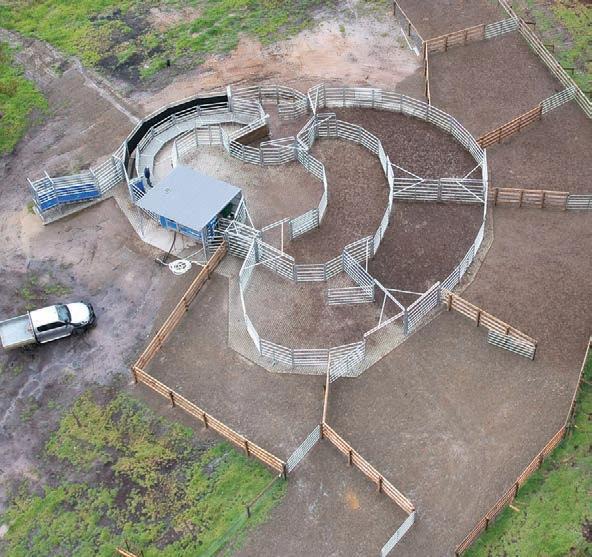



Honey strategy needs stickier sector
$4.95 Incl GST

Fire risk is only getting hotter
Firefighters dampen hot spots during the recent Port Hills blaze in Christchurch. Officials are warning there is no immediate relief in sight as dry conditions start to bite.
NEWS 4, 5

Stress levels are growing in the dairy industry, as farm owners, sharemilkers and managers seek help.
NEWS 3
Ten million bales of wool later
Rob Cochrane started his career sorting mail and licking stamps. After 50 years in the fibre-sector, he has retired.
PEOPLE 16
Bacterial contamination the most likely cause of the semen quality issues for LIC, investigation finds.
NEWS 6
Collared cows could help solve fire risk issues in New Zealand’s hill country, says Dr Derrick Moot.
OPINION 13




















SCAN THE QR CODE TO LEARN MORE! www.tepari.com Maximize your farm’s productivity with Te Pari Handling Equipment! 0% INTEREST 1/3 IN 24 MONTHS 1/3 IN 12 MONTHS 1/3 DEPOSIT Farm efficiency starts here… 1
Photo: FENZ
22 No 7, February 26, 2024 View online at farmersweekly.co.nz
Vol
6
EDITORIAL
Bryan Gibson | 06 323 1519
Managing Editor bryan.gibson@agrihq.co.nz
Craig Page | 03 470 2469
Deputy Editor craig.page@agrihq.co.nz
Claire Robertson
Sub-Editor claire.robertson@agrihq.co.nz
Neal Wallace | 03 474 9240
Journalist neal.wallace@agrihq.co.nz
Gerald Piddock | 027 486 8346
Journalist gerald.piddock@agrihq.co.nz
Annette Scott | 021 908 400
Journalist annette.scott@agrihq.co.nz
Hugh Stringleman | 09 432 8594
Journalist hugh.stringleman@agrihq.co.nz
Richard Rennie | 027 475 4256
Journalist richard.rennie@agrihq.co.nz
Nigel Stirling | 021 136 5570
Journalist nigel.g.stirling@gmail.com
PRODUCTION
Lana Kieselbach | 027 739 4295 production@agrihq.co.nz
ADVERTISING MATERIAL
Supply to: adcopy@agrihq.co.nz
SUBSCRIPTIONS
0800 85 25 80 subs@agrihq.co.nz
PRINTER
Printed by Stuff Ltd
Delivered by Reach Media Ltd
SALES CONTACTS
Andy Whitson | 027 626 2269
Sales & Marketing Manager andy.whitson@agrihq.co.nz
Andrew Fraser | 027 706 7877
Auckland/Northland Partnership Manager andrew.fraser@agrihq.co.nz
Jody Anderson | 027 474 6094
Waikato/Bay of Plenty Partnership Manager jody.anderson@agrihq.co.nz
Palak Arora | 027 474 6095
Lower North Island Partnership Manager palak.arora@agrihq.co.nz
Omid Rafyee | 027 474 6091
South Island Partnership Manager omid.rafyee@agrihq.co.nz
Julie Gibson | 06 323 0765
Marketplace Partnership Manager classifieds@agrihq.co.nz
Andrea Mansfield | 027 602 4925
National Livestock Manager livestock@agrihq.co.nz
Real Estate | 0800 85 25 80 realestate@agrihq.co.nz
Word Only Advertising | 0800 85 25 80 Marketplace wordads@agrihq.co.nz
PUBLISHERS
Dean and Cushla Williamson
Phone: 027 323 9407 dean.williamson@agrihq.co.nz cushla.williamson@agrihq.co.nz
Farmers Weekly is Published by AgriHQ PO Box 529, Feilding 4740, New Zealand
Phone: 0800 85 25 80
Website: www.farmersweekly.co.nz
ISSN 2463-6002 (Print)
ISSN 2463-6010 (Online)


our pioneering spirit tells us nothing’s out of reach

News in brief
Shipping woes
Shipping delays during New Zealand’s peak export season are likely on two key trade routes, warns a Ministry of Foreign Affairs and Trade report.
Conflict in the Red Sea and disruption from drought in the Panama Canal have already caused delays for exporters, rising transport costs and cancelled export orders – and this is likely to get worse.
Fonterra integration
Fonterra will integrate Fonterra Brands New Zealand and Fonterra Australia into a single entity called Fonterra Oceania.
Fonterra chief executive Miles Hurrell says the change will strengthen its transTasman offering in an increasingly competitive marketplace. Fonterra Brands NZ includes consumer brands and foodservice businesses, among them Anchor, Mainland and Kāpiti, and the Australian milk pool will continue to provide the milk solids for Fonterra’s Australian brands and ingredients.
Land purchases
Listed company NZ Rural Land has made two large land purchases using some of the $44 million of capital recently injected by an Australian fund managed by a private investor, Roc Partners.
With $18m, NZL has purchased three apple estates in Hawke’s Bay totalling 97 hectares. The second purchase was of an Awakino forest totalling 1119ha for $9.5m and leased back to NZ Forest Leasing.
Having a say
Farmers will be asked to vote on five Beef + Lamb New Zealand remits ahead of its annual meeting on March 19.
Voting packs will be arriving in farmers’ mailboxes soon. The remits farmers will be asked to vote on are NZ ruminants’ effect on global warming, policies on geneticallymodified organisms, cross-sector consensus on climate change policy, low-methane sheep genetics, and making all remits binding.


Back in 1860, exporting meat to the other side of the world seemed about as easy as nailing gravy to the ceiling. But a few determined kiwis took the bull by the horns and now our grass-fed beef and lamb is sought-after all around the globe.
At AFFCO, we see the same pioneering spirit alive and well in farmers today. We’re playing our part too – exploring every opportunity to take New Zealand’s finest farm-raised products to the world.



WWW.AFFCO.CO.NZ 0800 233 2669
WAVE200472 AFFJ200472 NZ Farmers Weekly Strip Ad FA.indd 1 24/08/22 3:22 PM 2 New Zealand’s most trusted source of agricultural news and information Contents
UNDERCUT: Trade Minister Todd McClay will seek to corner Canada’s Mary Ng this week over growing concerns among NZ exporters about Canadian exports undercutting them in the US market. STORY P8 News . . . . . . . . . . . . . . . . 1-11 Opinion . . . . . . . . . . . 12-15 People . . . . . . . . . . . . . . . . 16 Technology . . . . . . . . . . . . 17 Federated Farmers . 19-22 Real Estate . . . . . . . . 23-26 Marketplace . . . . . . . 27-28 Livestock . . . . . . . . . . . . . . 29 Markets . . . . . . . . . . . 30-35 Weather . . . . . . . . . . . . . . . 36
Advertise Get in touch
Dairy industry’s staffing tensions mount
 TNeal Wallace PEOPLE Employment
TNeal Wallace PEOPLE Employment
HE Southland Rural Support Trust is fielding double the number of calls it usually handles from dairy workers seeking help with employment issues.
Stress levels appear to be growing throughout the dairy industry, with sector leaders also reporting an increase in farm owners, sharemilkers and managers seeking help due to staff shortages and squeezed budgets.
Compared with a year earlier, the Southland Rural Support Trust has for the second consecutive quarter had a doubling in the number of calls from dairy workers seeking employment help and advice.
Between August and November the organisation received 31 new cases, twice as many as in the same quarter a year earlier, a trend the trust’s Southland wellness coordinator Rachael Nicholson said was repeated in the quarter just ended.
Most of the cases she is dealing with relate to employment issues and are predominantly from farms that are corporate-owned or have absentee owners.
DairyNZ people manager Jane Muir said the organisation’s annual employee survey also
Continued from page 1
“It could be either agents, or farmers, or both responsible, so farmers who received payment may yet be responsible as it could come back to farmers who have been paid under a void transaction.”
Hollis would not disclose how many agent companies were involved or the value of the payment reclaim other than to confirm “it is in millions”.
“We need to get the factual scenario understood. We are continuing to work through the

reveals a slight increase in concerns from employees working for corporate-owned farms.
Nicholson said some corporate owners are exceptional employers but others have been found wanting with managers promoted too quickly, and lacking the training and skills to manage staff.
“It happened during covid when they were pushed into a position they were not ready for and do not have the skills to deal with staff.”
She is dealing with employees who have inadequate or no
process with contractual livestock agents, the exporter and farmers.
“We have written to people, all who have invested with the final dealings of the Limited Partnership [GDEx].
“We are receiving legal responses from lawyers. They have responded with their defences, and we fully expect that.”
The letter to agents says “the liquidators have examined the arrangements in place between the Limited Partnership, importer Guangxi Xiong Te Animal Husbandry Co Ltd, the financier Purcell Brothers SPV (Purcell
employment contract, live in substandard conditions, are expected to work long hours, are given inadequate time off and where little heed is paid to their health and wellbeing.
Some workers are new the area, do not have friends or family and are unable to cook a wholesome meal but do not get adequate pastoral care from managers or owners.
Nicholson said there are excellent owners or managers who take an interest in the wellbeing of
Exports, Australia) and Allied Irish Bank (AIB) with regards to the letter of assignment in favour” of respective agents and farmer clients.
Under those arrangements GDEx instructed Purcells to receive on its behalf the total sale of proceeds from the Ocean Ute shipment.
The letter explained that given Purcells acted solely as an agent and conduit of funds, the payments to agent companies was a transaction of GDEx for the purpose of the investigation.
The “letter of credit” applied to an arrangement brokered by
their staff, supplying meals during busy periods such as calving to ensure staff are eating well and get to share a weekly evening meal with their family.
“A lot of people do it really well but there is a portion who do not do it well,” she said.
Southland’s dairy industry has a significant number of migrant workers and Nicholson said communicating with those who have English as a second language requires innovation.
Traditional verbal instructions can be misunderstood but emails or messaging can allow the staff member to translate into their native language.
“Sometimes a migrant worker can be too scared to ask questions.”
Southland Federated Farmers dairy chair Jason Herrick said the corporate or absentee farm ownership structure can be a barrier to owners connecting with staff.
He said some owners are excellent employers but others treat their workers as numbers.
“The problem the industry has got is that there are a lot of corporate owners and the corporate model is based around numbers and a focus on profit instead of people,” Herrick said. He has been contacted by workers saying are not being
Purcell Exports. At the time the Ocean Ute sailed on May 27, 2022, director Patrick Purcell said when complications set in, he was asked to facilitate a financial solution so the shipment could go ahead.
“We found a solution with an overseas bank (AIB).
“Our instruction was to pay 11 or 12 suppliers, the bigger contracts with agents and it was for about $8m and the letter of credit was for these suppliers only. That’s what we were instructed to do, we were instructed to issue payment to those suppliers and they got paid.”
listened to, expected to work long hours due to staff shortages or they are struggling with technology.
Neil Bateup, the Rural Support Trust’s Waikato chair, said they are fielding more inquiries from dairy farmers who are struggling with a shortage of staff and a lack of relief milkers so farmers can take time off.
“It is a growing problem.”
But he said these issues should not detract from the large number of excellent employers and employees.
“There are a heck of a lot of good people on farms and there are real opportunities for young people to build careers and their asset base.
“This is just a blip along the way, which I hope will not detract from those opportunities.”
An exceptional growing season is easing the pain for many farmers but stress levels are increasing as they deal with financial and staffing pressures.
Waikato Federated Farmers dairy chair Matthew Zonderop said stress levels are higher than usual as farmers battle squeezed incomes and rising costs.
“Even though we have got grass and making lots of supplementary feed, but this is masking the high cost of production.”
MORE: Page 4
At least 47 individual farmers missed the cut.
Hollis said there is no timeframe set to resolve the issue but “we are looking to make steps in the next month.”
“Depending on the speed of legal processes it could be ongoing for 12 to 18 months – that’s an open question, there’s no answer at this stage.”
MORE:
Want to share your thoughts on this issue? Text us on 027 226 8553 with the keyword SHIPMENT followed by your comments.















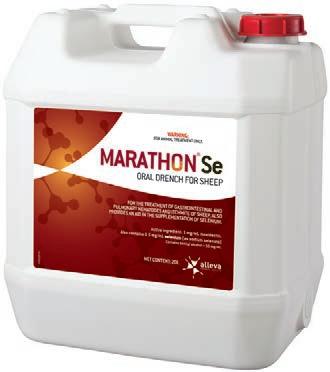











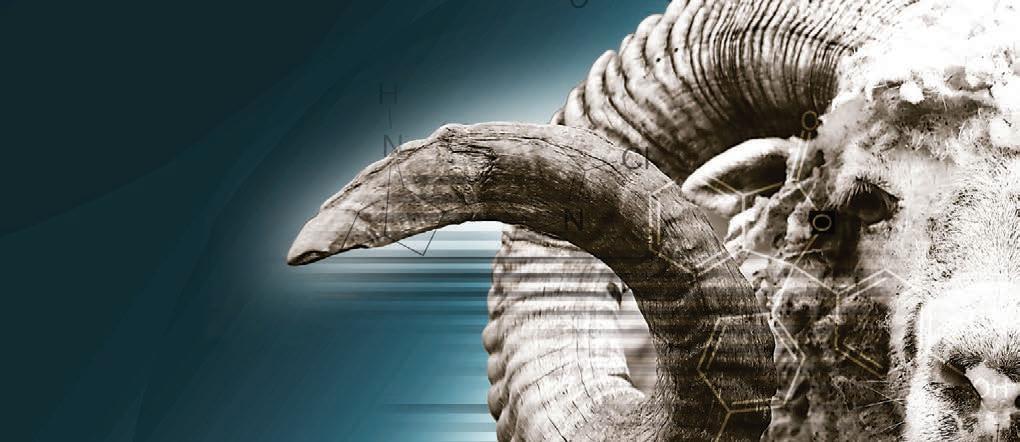
























Need long term protection against Barbers pole? Need a triple sheep drench? Just ask for Just ask for ® TRIPLE COMBINATION MINERALISED DRENCH FOR SHEEP MARATH N Se ® ORAL DRENCH FOR SHEEP Alleva Animal Health Limited, 1/116a Harris Road, East Tamaki, Auckland. BOSS® is a registered trademark of Alleva Animal Health Ltd. Registered pursuant to the ACVM Act 1997 No. A011614. MARATHON® is a registered trademark of Alleva Animal Health Ltd. Registered pursuant to the ACVM Act 1997, No. A011903. See www.foodsafety.govt.nz for registration conditions. * While stocks last. Shirt received may differ from the advertised image. Purchase 1 x 20L of BOSS Triple Drench for Sheep or 1 x 20L of MARATHON Se Oral Drench for Sheep and we’ll give you a FREE Cooltec work shirt* 3 FARMERS WEEKLY – farmersweekly.co.nz – February 26, 2024 News 3
BARRIERS: Southland Federated Farmers dairy section chair Jason Herrick says the corporate or absentee farm ownership structure can be a barrier to owners connecting with staff.
Stock thinned as dire Marlborough dry sets in
 Neal Wallace NEWS Weather
Neal Wallace NEWS Weather
MARLBOROUGH is experiencing its driest weather in almost a century.
Just 94mm of rain – almost half the average – fell between June and January.
This was the lowest rainfall for that six-month period since 1930.
Farmers are running out of stock water as creeks and dams dry. They are feeding out winter supplement and quitting any store and trading livestock.
Marlborough Federated Farmers president Evan White said farming leaders have written to Agriculture Minister Todd McClay and to the Ministry for Primary Industries advising of the dire situation.
White said the impacted area extends from Upper Moutere and Tapawera in Nelson to include all of Marlborough with the southern parts the hardest hit.
Conditions started to bite about four weeks ago.
“It’s getting a bit serious,” White said.
“Any stock that is store or trading, it’s gone.”
A report by the Marlborough District Council reveals just 6.6mm fell in Blenheim in January, the eighth consecutive month of below-average rainfall.
The 194mm that fell from June 2023 to the end of January 2024 was 45% of the long-term average of 436mm.
“This is the lowest rainfall total
It’s getting a bit serious. Any stock that is store or trading, it’s gone.
Evan White Federated Farmers
for any June to January period over 94 years of records, 1930-2024.”
Picton had 26mm for the month,

Pace of gain in dairy prices slows
 Hugh Stringleman MARKETS Dairy
Hugh Stringleman MARKETS Dairy
GLOBAL Dairy Trade prices continued their upward trend in last week’s auction, albeit at a slower overall pace.
The GDT index rose 0.5%, including a big leap of 8.6% for anhydrous milk fat and 5.3% for mozzarella.
Conversely, cheddar prices fell 7.6% and the dominant whole milk powder category fell 1.8%.
The GDT market has risen 30% since August, giving rise to several upgrades of farmgate milk price forecasts.
However, the per-event index increases have moderated, down from 2-4% to the latest 0.5%.
Westpac economists said Chinese demand is increasing and now sits around the average of its purchasing over the past 10 years.
half its average, and Awatere just 9mm. The district’s average rainfall is 52mm.
The NZ Drought Index as at the start of February rated north and southern Marlborough as extremely dry.
Cape Campbell farmers Rob and Sally Peter are shocked at how quickly conditions have dried since spring.
Rob Peter said they acted early to reduce stock numbers to the bare minimum.
Lambs were weaned and sold before Christmas, finishing cattle have also been sold, calves were weaned and sold three months earlier than normal and light replacement and capital stock have been culled.
Sheep nuts are being fed to his two-tooth ewes in preparation for tupping.
While this has solved an immediate problem, Peter said they will have nothing to sell later in the year.
Their coastal farm is
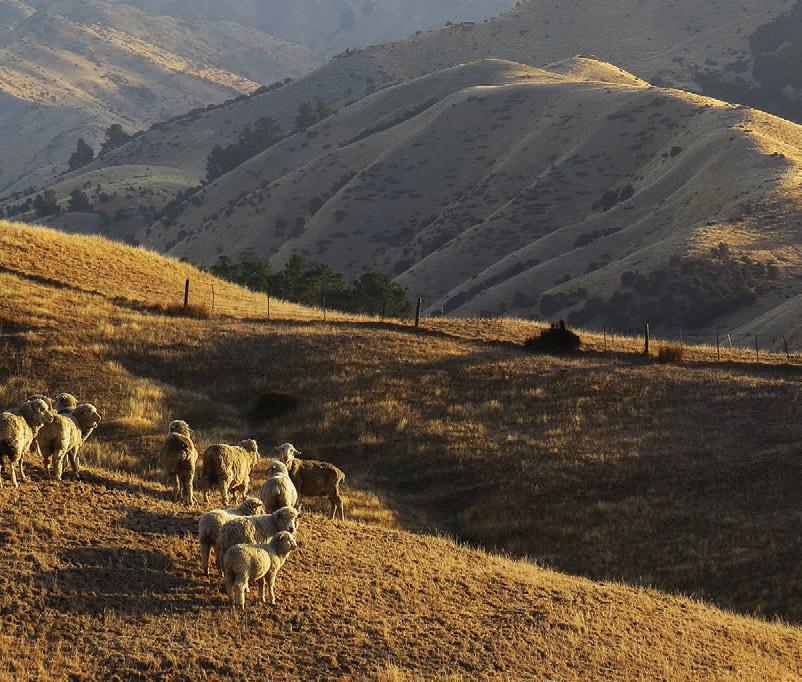
exceptionally dry but a network of dams has adequate water for a year.
Peter said drought accompanying an El Niño tends to stick around for a few years.
“If we get rain in March we will be okay. If there is none through until June, then it could be serious.”
Nick Story, the Ministry for
“Growth in the Chinese economy is expected to remain subdued, though we have seen this counterbalanced more recently by stronger demand from other regions,” chief economist Kelly Eckhold said.
The Westpac team have confidently opened their forecasting for the 2024-25 dairy season at $8.40/kg milksolids at the farm gate, compared with their $7.90 prediction for the current season.
“This should see farmers doing slightly better than break-even given that cost pressures are reducing.”
NZX dairy analyst Lewis Hoggard said the Middle East buyers were not as active as they have been and this contributed to the 1.8% fall in WMP prices.
“A sharp decline in Middle East buying from last event was again mitigated by increases in purchases for China, Europe and Africa.”
Primary Industries’ director of rural communities and farming support, acknowledged the challenges in Marlborough and said it is keeping a close watch. A group consisting of key sector bodies, the Rural Support Trust, local authorities and MPI is advising on the impacts of the dry conditions and is meeting fortnightly.
Is it the workplace or the workers to blame?

THE continued shortage of dairy farm workers is causing stress for farm owners and managers, say sector leaders.
Rural Support Trust Waikato chair Neil Bateup said the shortage stems from poor public perceptions that discourage people from careers in the industry despite the ample opportunities.
The sector also needs to adjust to the intergenerational change in employment expectations.
“It’s not something people are looking to get into when they compare milking cows at weekends when their friends are not working.”
Bateup said more work is needed on staff rosters, hours worked and time off to make the industry an attractive place to work.
“Farming should be fun.”
Some owners still expect staff to work 60- to 80-hour weeks, but Southland Federated Farmers dairy chair Jason Herrick said younger generations do not want to work excessive hours, and migrant dairy farm workers have different values and expectations.
He said employers are obliged to provide pastoral care for workers who may have social issues or limited education in what is an increasingly complex industry.
Waikato Federated Farmers dairy chair Matthew Zonderop
said stress levels among the region’s dairy farmers are higher than usual, albeit partially masked by exceptional summer growth.
“Even though we have got grass and are making lots of supplementary feed, this is masking the high cost of production.”
Production on most Waikato dairy farms is on par or below last season, which Zonderop said is remarkable given an exceptionally wet winter.
We need to not accept any behaviour that is below the line of what is expected because it lets everybody down.
Jane Muir DairyNZ
That slow start will impact contract and sharemilkers, with retrospective payments during the off season lower than previous years due to the low early season farmgate payment and production.
He said the lack of quality relief milkers is also adding to farmer stress.
DairyNZ people manager Jane Muir said causes of stress are specific to each farm situation and could be personal, financial and environmental factors.
She said DairyNZ’s annual employee survey reveals those working for corporate-owned farms tend to feel less connected
to their community and are less inclined to recommend their job to a friend.
Muir said one issue that continues to resonate in the sector is a shortage of skilled or capable staff.
“Capability is a really big challenge.
“These issues create similar outcomes for farmers as being short staffed,” she said.
Employers with favourable management practices usually find it easier to recruit staff and word soon gets around the sector about who are excellent employers and who are not.
Muir said factors such as pay, hours of work, rosters, workplace culture, interaction with staff, training and development are all factors employers need to consider.
Despite these challenges, Muir believes the sector is slowly becoming a desirable sector in which to work.
“I think we are slowly winning.
“We need to not accept any behaviour that is below the line of what is expected because it lets everybody down.”
DairyNZ will soon launch its annual employee survey and next month will hold People Expos in Invercargill, Northland, Pahiatua and Rotorua.
The Southland Rural Support Trust is holding three wellbeing and mental fitness tools for young rural men starting on 27 February.
The workshops will focus on health, body and mind, resilience and purpose.
4 FARMERS WEEKLY – farmersweekly.co.nz – February 26, 2024 News 4
LEAN PICKINGS: Marlborough could be heading for one of its driest years in nearly a century.
Photo: Jo Grigg
Neal Wallace PEOPLE Dairy
DOWN: The dominant whole milk powder category fell 1.8% in the latest Global Diary Trade auction.
Fire risk is only getting hotter as El Niño bites
 TNeal Wallace NEWS Weather
TNeal Wallace NEWS Weather
HERE appears little immediate relief from the extreme fire risk engulfing much of the country, with hot, windy weather forecast for at least the next month.
WeatherWatch chief forecaster Phil Duncan said the early arrival of predominantly westerly winds provoked by the El Niño weather pattern have since Christmas dried out many parts of both islands.
“It’s hat-on-hat conditions, which makes spring more springlike and autumn more autumn-like.
“El Niño conditions have tightened the screws on windy westerlies, which we normally get in autumn.”
Tim Mitchell, national wildfire manager for Fire and Emergency (FENZ), said the fire risk has
elevated rapidly in parts of Otago, Canterbury, Marlborough, Wairarapa and Northland since Christmas.
Those areas have prohibitive fire seasons, but not far behind are parts of Nelson, Manawatū, Hawke’s Bay, Gisborne, Waikato, Coromandel, Bay of Plenty and Auckland.
Mitchell said following two wet summers, New Zealand is returning to more of a normal summer dry pattern, although areas have dried rapidly.
“Since Christmas we have had
Since Christmas we have had really warm temperatures, gusty wind and a noticeable tail-off in the frequency and amount of rain across much of NZ.
Tim Mitchell FENZ
really warm temperatures, gusty wind and a noticeable tail-off in the frequency and amount of rain across much of NZ.”
Duncan said little rain is forecast for the next month with large high pressure systems and westerly winds the dominant weather system. This will keep the east coasts of both islands under a rain shadow.
For at least the next two months he predicts the lower South Island is likely to average 0.5degC warmer than normal and other parts 1degC warmer.
“We are definitely seeing a very dry weather pattern,” he said.
This coincides with the harvest and Mitchell is urging farmers to maintain their equipment, monitor machines for trash build-up or anything that could cause sparks or is a source of high temperatures that could ignite a fire.
If possible, he said, when crop harvesting, a spray rig or tanker of water should be stationed nearby

to help suppress a fire, should one ignite, while awaiting emergency services.
He said 98% of vegetation fires are caused by humans.
Since July 1 last year there have been 2896 vegetation fires covering 4305 hectares. In a normal year there are about 4500 fires covering 7300ha, but, Mitchell said, we are now heading into the main wildfire period. He warns that with conditions
forecast to remain dry, the fire risk could remain high into April.
He urged people to check the www.checkitsalright.nz website to get the latest information on the fire risk, fire restrictions and fire prevention.
MORE:
Want to share your thoughts on this issue? Text us on 027 226 8553 with the keyword FIRE followed by your comments.
From a spark to a wildfire in a flash

METHVEN crop farmer Ben Lattimore had never been happier to see the flashing lights of a fire engine.
Ben and wife Chiara, who grow crop seed at their Arranlea Farm, were poised to finish a long hot day of harvesting at about 12.20am on February 15, when one of their trucks burst into flames.
Straw had got caught near the exhaust and ignited.
While fire extinguishers were used to save the truck, by that time the fire had spread to recently harvested stubble and, driven by strong winds, into a paddock of barley situated alongside their home.
“That day in particular was
really hot. Everything dried out in the paddocks and then the wind came up,” Ben said. “The fire just took off. The wind was that strong I don’t think it would have mattered how much water we had or how many people
we put there, we just couldn’t stop it.”
Lattimore immediately rang 111 and was relieved when firefighters from Methven, Mt Somers, Lauriston, Mayfield, Rakaia, Ashburton and Alford Forest


arrived to help battle the blaze.
Friends and neighbours also arrived to offer their assistance in a bid to prevent the blaze from spreading further.
Chiara rushed home to alert her mother and children Micky, 4, and Poppy, 3, evacuating them to a neighbour’s property.
“I was numb really,” Chiara said.
“I had people ringing me asking what they could do to help and I didn’t know what to tell them.”
It took almost four hours for the fire to be extinguished, but not before the Lattimores lost 50ha of stubble and 36ha of unharvested barley.
Fortunately the fire was stopped within about 10m of their home.
“It could have been a lot worse,”
Ben said.
“The promptness of the fire brigade turning up was amazing. I was very glad to see those flashing
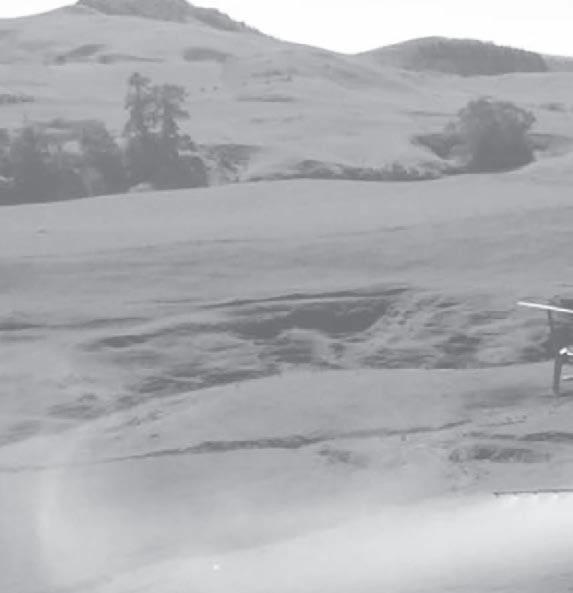
lights coming in, and so many of them. We are really thankful that everyone was prepared to drop everything at the time of night to come and help.”
Ben said the incident had been a wake-up call and they are now looking at ways to protect their crops in the event of future fires.
“We’ve never had anything like that before and I hope we never have anything like that again.
“We’ve learnt now that we will have irrigators placed across the paddocks that haven’t been harvested. In the worst case, we can then start the irrigators and that will help cut our losses.”
He was philosophical about the fire and thankful no buildings were damaged or people hurt.
“It is what it is. Now, we’ve just got to figure out how to make some money off the paddock to keep everyone happy.”
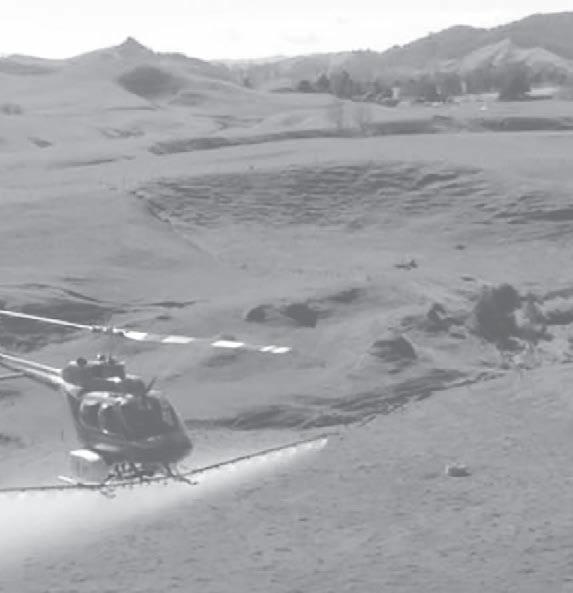




Allan Bodman OWNER/CHIEF PILOT Mobile: 0274 912 443 allan@heliworxwaikato.co.nz heliworxwaikato.co.nz Under NEW Ownership LK0117455© Book your services before 30 April 2024 and go in the draw to win return flights to the 2024 New Zealand National Fieldays. * Conditions apply • Spraying pasture weeds – gorse, broom, blackberry • Fertiliser spreading – liquid and solid, bulk delivery or bagged • Facial eczema • Wand spraying • Frost control • Lifting • Scenics/Charter • Filming/Photography 5 FARMERS WEEKLY – farmersweekly.co.nz – February 26, 2024 News 5
WILDFIRE: The Port Hills fire near Christchurch burnt more than 650ha.
Photo: George Heard
Craig Page NEWS Community
RED SKY AT NIGHT: The sky is lit up by fire at the Lattimores’ farm on February 15.
Bacteria blamed for LIC semen issues
 Gerald Piddock TECHNOLOGY Genetics
Gerald Piddock TECHNOLOGY Genetics
AN INTERNAL investigation by LIC says that bacterial contamination was the most likely cause of the semen quality issues that affected farms across the country in October.
Batches of the poor-quality semen were sent to farms for insemination on October 17-19 and October 23-25. In all, 1127 herds were impacted.
Cows did get in calf from the inseminations on the affected days, but a noticeably lower number than LIC would have expected.
Credit and goodwill packages were offered to farmers to support recovery.
LIC chief executive David Chin said every possibility was investigated and multiple scenarios were recreated using the semen from the impacted days.
Semen is routinely frozen and stored for research purposes.
“While we were able to narrow it down to a possible cause, it was not possible to identify the
exact root cause of the bacterial contamination. We considered every possibility, from the bull farm to on-farm insemination, and were able to rule out many possible causes by process of elimination.
“We are now focused on implementing the recommendations that stemmed from the investigation to reduce the likelihood of this ever happening again.”
We are now focused on implementing the recommendations that stemmed from the investigation to reduce the likelihood of this ever happening again.
David Chin LIC
The investigation report says many factors can influence a biological product, which is why it is not possible to identify the exact root cause of the bacterial contamination.
“Some of the bacteria identified were known to be bacteria that can
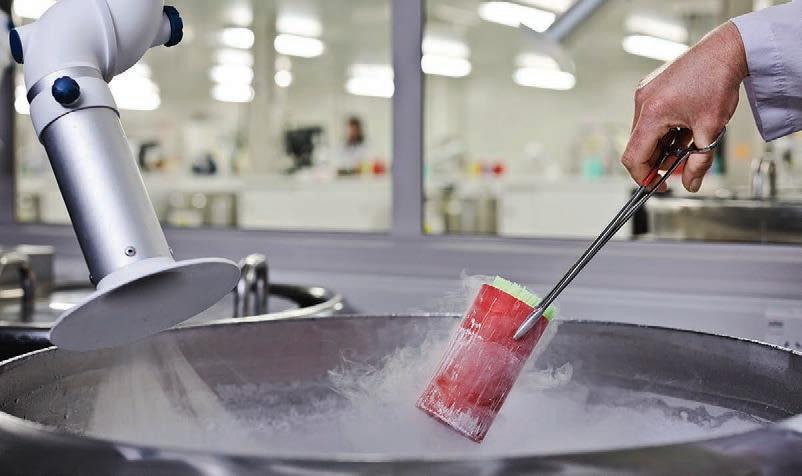
INVESTIGATED: LIC chief executive David Chin says every possibility was investigated and multiple scenarios were recreated as they investigated what caused the semen quality issue to a ect some farmers in October last year.
impact semen, therefore a possible cause,” it says.
LIC said it will have over half of the recommendations in place by March this year, with many improvements already implemented.
“When we first identified this issue, we made immediate changes to our quality control checking process.
“Now, daily quality control checks occur at 4am every morning prior to insemination on farm on that given day. This change means we can notify AB Technicians of any issues and ask them to use back-up semen instead, so we can still get cows in calf,” Chin said.
Chin acknowledged that for impacted farmers the full extent of the situation is only now coming to light as they complete pregnancy testing.
“Getting cows in calf is what we do – and we have a very good track record at doing just that. We acknowledge the impact this situation caused for individual cows in herds and we are disappointed that, in this instance, we didn’t deliver to the high standard farmers expect.
“We are not closing the book on this – as a farmer-owned co-op we are always looking at ways we can improve our processes to deliver farmers the right tools to breed the most sustainable and profitable herds – now and into the future.”
A separate, independent review was carried out to formally assess the way LIC took action in response to the issue.
This review identified areas of improvement when it came to managing risk, responding to events and communicating effectively and efficiently.
The report says LIC is committed to implementing all of the recommendations.
Scales picks itself up after damage
 Hugh Stringleman NEWS Agribusiness
Hugh Stringleman NEWS Agribusiness
CYCLONE Gabrielle blew a hole in the revenue and earnings of listed primary sector company Scales Corporation through its Hawke’s Bay Mr Apple division, one of the largest producers in New Zealand.
Mr Apple’s own-grown exports were down by 18% in volume to 2.7 million tray carton equivalents (TCEs) – but revenue was down by 8% because of higher prices.
In calendar 2023, also the financial year, the horticultural division contributed $14.8m underlying earnings before interest, tax, depreciation, and amortisation, compared with $17m in 2022.
New chair Mike Petersen, a farming leader from Hawke’s Bay, said Scales is expecting a more normal year of trading in 2024,
particularly for horticulture.
“I have been impressed by the tenacity and resilience of the Scales teams.
“I am also delighted to advise that the board has reappointed Andy Borland for a further five years as managing director, as his contribution to the company has been significant.”
For Scales as a whole, underlying net profit after tax was $38.4m, down 17%, and reported NPAT was down 35% to $24.7m.
Revenue was down 9% to $565m.
Total capital expenditure was $17m, of which $7m was spent in regrafting and replanting cyclonedamaged orchards.
The global proteins division, connected mainly with bulk exports for pet foods, had a 7% reduction in volume and a 10% reduction in underlying earnings.
Petfood ingredient customers

Honey strategy requiring a stickier sector
 Richard Rennie NEWS Apiculture
Richard Rennie NEWS Apiculture
A FRAGMENTED and underfunded honey sector is hoping a new strategy will give it greater unity and direction to ride a predicted lift in global demand for New Zealand mānuka honey.
The “Thriving Together” strategy for the industry was released last week with an emphasis on mānuka honey playing a critical role in the sector’s future growth as more global consumers seek it out for its high quality and health benefits.
To that end it has set a goal of doubling NZ honey export value, enhancing consumer engagement with mānuka honey and NZ’s honey reputation by 2030.
Total honey exports for 2022 totalled $538 million, of which $408m was mānuka. NZ was ranked as the top global honey exporter by a considerable margin in 2021.
returned to lower, pre-covid inventory levels, resulting in lower volumes sold.
I am delighted to advise that the board has reappointed Andy Borland for a further five years as managing director.
Mike Petersen Scales
The directors’ guidance for 2024 is an underlying net profit between $47m and $55m and the current policy is to pay 50-75% to shareholders.
From FY23’s profits, an initial instalment of 4.25c a share was paid in January and a second instalment will be reviewed and advised in early May.
But for it to fulfil its goal the plan outlines a need for a strong unified industry voice, backed by solid funding sources.
At present the industry is largely represented through Apiculture NZ, the Unique Mānuka Factor Honey Association (UMFHA), NZ Beekeepers and the Mānuka Charitable Trust, all of which are voluntary membership groups.
Five years ago, beekeepers overwhelmingly voted against having an industry-wide levy of 10c per kg of honey.
The new strategy calls for a well-constituted peak body with a strong mandate to deal with key issues in the sector.
Apiculture NZ chair Nathan Guy said there is close agreement between his group, the Mānuka Charitable Trust and UMFHA. He said the government is well engaged with the three groups.
The strategy acknowledges funding has been a major problem for the sector, given the failure
to get the levy over the line. It also cites a Horticulture Export Authority-type model proposed back in 2009 that could align the sector better.
But without internal funds, raising public money is difficult, with only $1.8m awarded to the sector by the Ministry for Primary Industries in 2023, less than 1% of the $600m total awarded.
Protecting the trade name “mānuka” is a priority area demanding continued funding, with ongoing disputes between NZ and Australia on rights to the term.
Guy said he would be reluctant to push levy demands upon beekeepers right now given the tough times they are grappling with. But he cited biosecurity as a “ticking time bomb” for the sector that will demand both unity and funding to deal with.
The varroa mite continues to have an eroding effect on hive health, and Guy said the industry approach to dealing with it demands greater unity.
Varroa is responsible for almost half 2022’s recorded hive losses, compared to only 1.1% of losses caused by American foul brood (AFL).
“AFL has been managed well through a pest management plan, and we need to have a similar plan in place for varroa,” Guy said.
“To walk into any co-funding, the industry needs to support some of it. Meantime we have the support through a Sustainable Food and Fibre Futures-type proposal to get things started.”
Ultimately, he believes the sector could demand its own legislation, similar to what wine and the organics sector have.
“That would mean we can put a lot of things in there around quality and biosecurity standards.
“We want to be recognised as a global leader with the highest quality honey, and the only credible source of mānuka honey.”
6 FARMERS WEEKLY – farmersweekly.co.nz – February 26, 2024 News 6
TICKING: Apiculture NZ chair Nathan Guy says the honey industry needs greater unity in its approach, particularly for dealing with biosecurity threats like varroa, which is having a signi cant impact on hive losses.
Magnificent maize harvest beckons
 TGerald Piddock NEWS Arable
TGerald Piddock NEWS Arable
HIS season’s maize harvest is shaping up to be the best in years thanks to extremely good growing conditions across the upper North Island.
After a slow start due to a cool, damp spring, the crops took off across Waikato and Northland in December through to late summer.
While a few crops have been cut in Waikato, harvest in the main will be starting nearer the end of February.
Waikato Federated Farmers arable chair Don Stobie said the crops have had just the right amount of moisture and heat, with rain coming at the right time.
“Judging by the feedback from the few early crops that have been harvested, yields could potentially be up about 10-15% above longterm averages.”
Those averages sit at around 21 tonnes per hectare for maize silage, meaning some crops could yield around 23-25t/ha this season.
“Potentially, if no weather events come, this could be the best yielding year in the last four to five years,” he said.
“The water table is right up, and we have had good sunshine,
the right amount of rain and the growing conditions have just been ideal.”
Ideal growing conditions also saw weeds being a challenge on some crops. The cool, wet spring meant more post-emergence spraying done than normal.
Potentially, if no weather events come, this could be the best yielding year in the last four to five years.
Don Stobie Federated Farmers
The lift in the dairy payout will also have a positive flow-on effect for growers, he said.
“There is no doubt that the early season drop in payout has caused a pullback in brought-in supplement and a softening of prices for this feed.
“And although the weather people had predicted that with the current El-Niño weather pattern we would get very dry, but this has not as yet turned out to be the case.
“So, farmers have had ample feed on farm from pasture.
“Now with the lifting payout there does present an opportunity for farmers to take advantage of

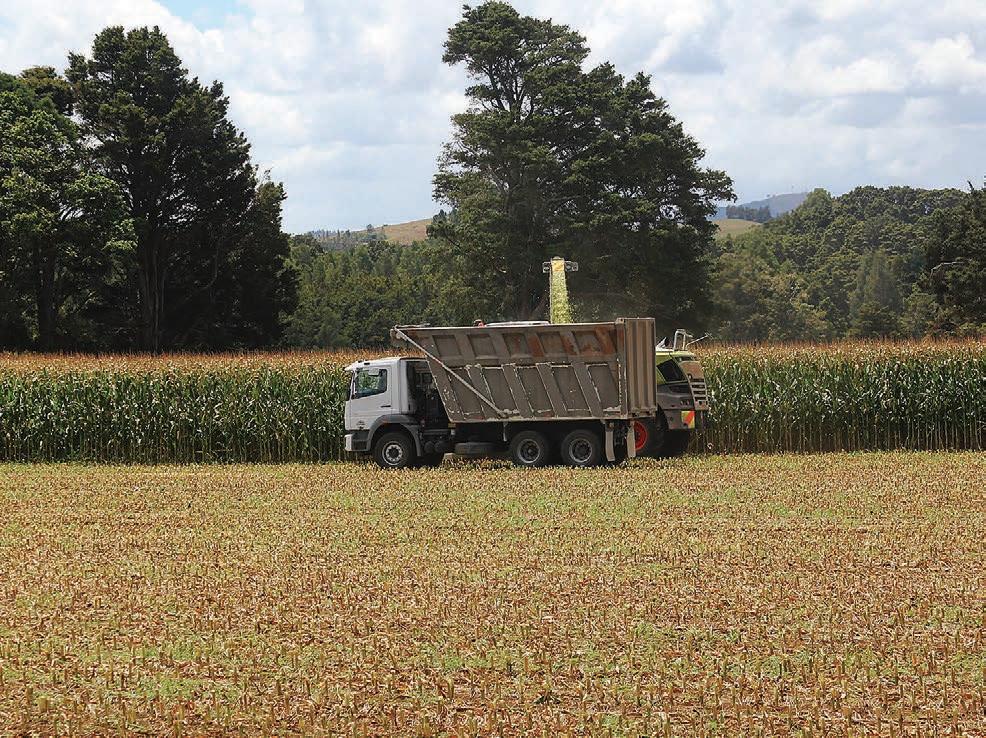
this by using some supplement to extend lactation and keep body condition on cows before dry-off time.”
In Northland, the federation’s provincial president, Colin Hannah, said the maize crops were looking magnificent with the bulk of the harvest due to get underway later this month.
“They’re some of the bestlooking crops I have seen in a long time.”
Corson Maize national sales





a maize
in Northland. Growers estimate yields on maize crops in the northern North Island to be up 1015% on the longterm average.
manager Graeme Austin said it was looking very good for growers in Waikato and Northland after many initially struggled to get seeds in the ground because of the wet spring.
Further south into Hawke’s Bay and Gisborne it was looking more challenging due to dry conditions, which will affect yields.
Austin said he is expecting significant yields this season, estimating it to be 10-15% up. There have been some instances


of leaf blight in Northland and fall army worm (FAW) is present but has yet to do the damage many had feared.
“We’re seeing good grain fill at the moment coming into the silage harvest.”
According to the Foundation for Arable Research, there have been 85 confirmed reports of FAW.
These have come from Northland, Westland, Tasman, Bay of Plenty, Auckland and the Waikato regions.







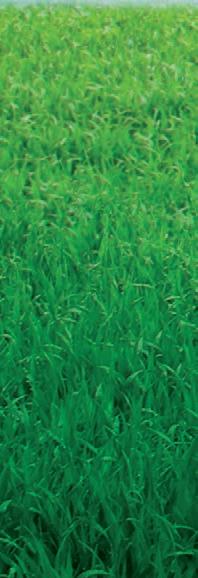

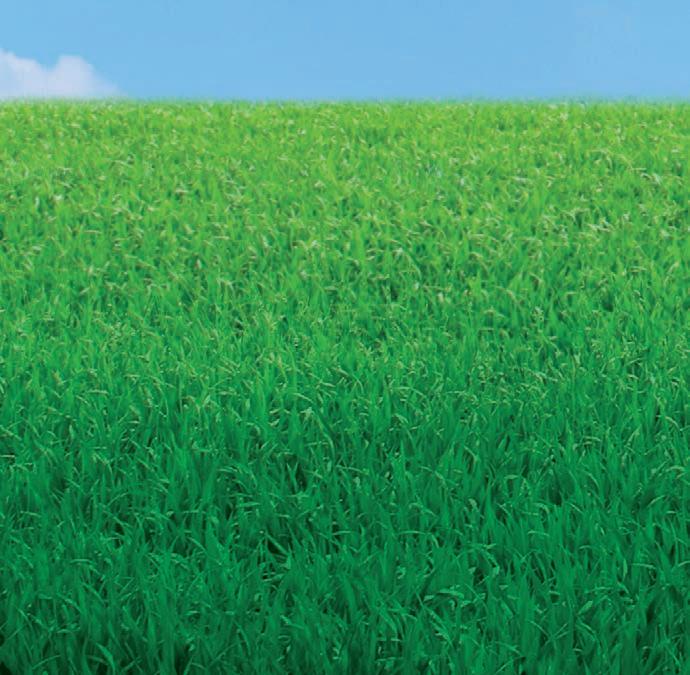
















Grassmanship® Calculate the power of pasture ONF208661NF For more information, scan the QR code or visit grassmanship.nz • Generate more profit from pasture • Minimise supplementary feed costs • Maximise home-grown feed • More feed for your animals Scan here to calculate! 208661 Nufarm FW Grassmanship App Ad Half page 190x262.indd 1 14/02/24 11:20 AM 7 FARMERS WEEKLY – farmersweekly.co.nz – February 26, 2024 News 7
BIG CROP: Harvest gets underway on
crop
New twist in dairy’s Canada trade beef

 TNigel Stirling MARKETS Dairy
TNigel Stirling MARKETS Dairy
RADE Minister Todd McClay is promising to turn up the heat once again on Canada as yet another example has emerged of its dairy policies depressing returns for New Zealand exporters.
McClay was already preparing to line up his Canadian counterpart Mary Ng over her country’s ongoing rule-breaking under the Comprehensive and Progressive TransPacific Partnership (CPTPP) trade agreement at a meeting of global trade ministers this week in Abu Dhabi.
Now it can be revealed McClay will also seek to corner Ng over growing concerns among NZ exporters about Canadian exports undercutting them in the United States market.
In a speech to the US Business Summit late last year, Fonterra chief executive Miles Hurrell singled out the threat from subsidised Canadian dairy products to the co-operative’s valuable US business.
He said high tariffs limit


its ability to sell lower-value commodities to the US, though it does not face the same trade barriers for higher value products.
As a result the US is the cooperative’s fourth largest market by value and most valuable on a per-unit basis.
However, Hurrell said, this is now at risk.
“Canada’s growing exports of subsidised milk protein is the largest risk to Fonterra’s value-add business in the US,” he said.
It is not the first time subsidised Canadian milk exports have wreaked havoc on international dairy markets to the cost of NZ exporters.
In 2016 the NZ industry joined an international alliance of dairy producers calling for their governments to take on Canada’s Milk Class 7 system, which they alleged broke World Trade Organisation rules by purchasing skimmed milk powder at below international prices and dumping it on the global market.
A dairy industry leader at the time said the depressing effect on global SMP prices was probably costing NZ dairy farmers $100 million a year in lost earnings. No action was taken until







then president Donald Trump negotiated a cap on subsidised Canadian dairy exports as part of a new trade agreement with Canada and Mexico in 2018.
However, Dairy Companies Association of NZ (DCANZ) executive director Kimberly Crewther said the problem of illegally subsidised Canadian dairy exports has resurfaced under a new pricing classification, Milk Class 4 (a).
“We used to talk about Milk Class 7. And again this is the frustration.
“There is just this continuing reconfiguration within the Canadian system to do the same things.
“It is extending this time beyond just SMP and we are seeing increasing volumes of other protein products as well which is a concern for us as unsubsidised producers.”
Crewther said Milk Class 4 (a) breaks a World Trade Organisation ban on export subsidies and potentially other trade rules.
While taking a WTO case against Canada would be futile on account of the body’s broken appeals system, Crewther said, there are other legal options available to NZ and others.

UNDERCUT: Trade Minister Todd McClay will seek to corner Canada’s Mary Ng over growing concerns among NZ exporters about Canadian exports undercutting them in the US market.
She noted Canada and NZ are both members of the MultiParty Interim Appeal Arbitration Arrangement, a breakaway tribunal set up to adjudicate trade disputes in the absence of a working WTO dispute settlement system.
McClay said he shares DCANZ’s concerns with Milk Class 4 (a) and the impact it is having on global dairy markets.
“This is a serious matter for our industry and the integrity of the rules-based trading system.
“We will be examining all options, including seeking legal advice, and expect Canada to meet its obligations to NZ.
There is just this continuing reconfiguration within the Canadian system to do the same things.
Kimberly Crewther DCANZ
“I will also be raising this with my counterpart as well as other countries at the WTO Ministerial meeting, along with the separate issue relating to the implementation of the CPTPP panel ruling,” he said.



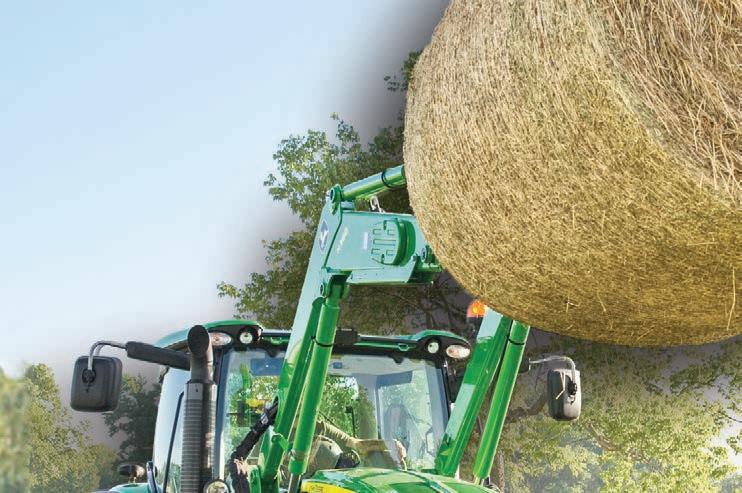
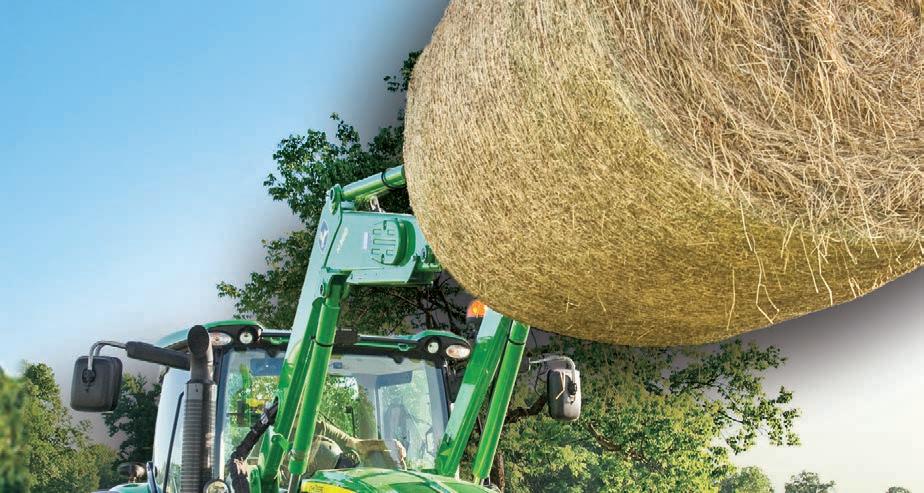





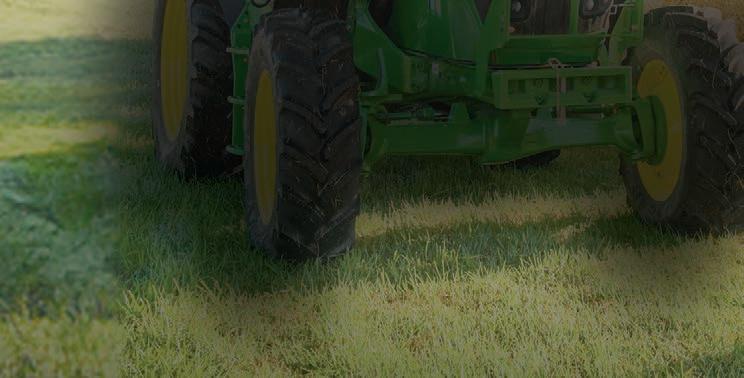
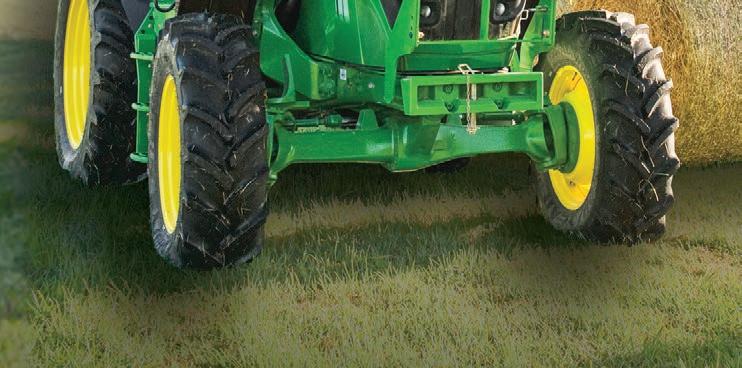
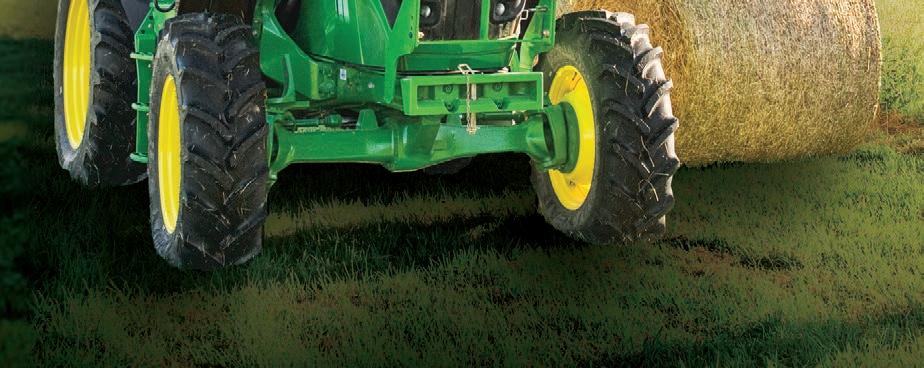















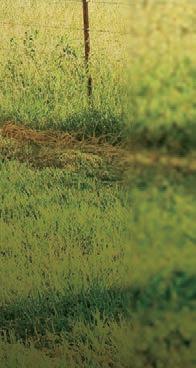


brandt.ca/nz 0800 872 2867 NO INTEREST UNTIL 2025* JOHN DEERE 6 SERIES *Conditions apply. John Deere Financial Limited. Approved commercial applicants only. Based on 20% deposit, GST back in month 3, and 48 month term. Interest repayments will be covered by Brandt Tractor Ltd until 01/01/2025. O er applicable to in stock units only and unit must be sold and delivered prior to 30/04/2024. Fees and charges apply. Unless amended or withdrawn early, o er expires on 30/04/2024. brandt.ca/nz 0800 TRACTOR 8 FARMERS WEEKLY – farmersweekly.co.nz – February 26, 2024 News 8
China returns plush year-end for velvet
 Annette Scott MARKETS
Annette Scott MARKETS
SKYROCKETING velvet sales to China at the end of last year have pushed New Zealand velvet exports up more than $28 million on the previous year.
Deer velvet exports to China increased by about $20m in December 2023 as importers and exporters worked to deal with the changes to China’s import regulations for frozen velvet.
Statistics NZ’s latest data shows the FOB value of deer velvet exported to all markets rose from $96m in the year ending December 2022 to $124m in December 2023.
On those figures Deer Industry NZ manager markets Rhys Griffiths reported “$28m more overall than the previous year”.
Most of this can be attributed to velvet exports to China in December 2023, a month when exports tripled, with $20m more velvet exported to China than the previous year.
Griffiths said he expects this is a signal of the “pull coming from China and the assertive buying of importers trying to conclude deals ahead of the April 30 deadline for this season’s velvet production to be cleared into China”.
Exporters have reported many Korean buyers have been holding out this season.
This is confirmed in the

statistics, which show velvet exports to the Republic of Korea halved in December to $1m FOB.
Meanwhile planning for every scenario for frozen velvet access to China continues with DINZ and Ministry for Primary Industries (MPI) officials still working with their Chinese counterparts to agree clear guidelines for importing frozen NZ deer velvet into China.
In November last year, Chinese officials notified the MPI of changes to China’s rules for
imported frozen velvet used in Traditional Chinese Medicine.
From May 1 2024, only dried velvet can be imported into China, from any source, for use as a traditional Chinese medicine.
No frozen velvet from any source will be able to be imported for traditional Chinese medicine use after that date, until the new conditions are agreed.
At this stage, no change is being made to the Regulatory Control Scheme (RCS), nor to NZ’s velvet traceability requirements.
SOFT LANDING:
Deer velvet exports to China increased by about $20m in December 2023 as importers and exporters worked to deal with the changes to China’s import regulations for frozen velvet.
While no timeline has been set, the MPI reassured DINZ it is treating the issue as high priority.
The MPI is aware of the importance of having rules in place for the beginning of the 2023-2024 season, but a complex regulatory pathway involving several different agencies in China needs to be negotiated, DINZ chief executive Innes Moffat said.
The Deer Velvet Access Group (DVAG), a subcommittee of the
A complex regulatory pathway involving several different agencies in China needs to be negotiated.
Innes Moffat DINZ
DINZ board, is working on the issue.
DINZ has appointed project manager with expertise in the market, Damon Paling, to provide extra resource to assist with managing the process.
The DVAG met on February 9 2024 to undertake scenario planning concerning future access for deer velvet.
Paling said the workshop aimed to explore various scenarios that commercial operators may face, including best and worst cases, and to identify priority actions to move forward.
“Participants discussed factors such as risk tolerance, market conditions and long-term objectives when determining strategic positions.
“This included considerations commercial operators may wish to take around safeguarding existing assets, minimising exposure to market fluctuations and managing capital outlay amidst uncertain demand and prices.”
Moffat said DINZ is working on the situation and remains committed to keeping industry informed as developments unfold.
Hunting survey recalibrates, 10 years on
 Richard Rennie NEWS Hunting
Richard Rennie NEWS Hunting
MORE wahine hunters, higher food costs, and covid’s impact are all likely to be factors affecting the results in the latest New Zealand Game Animal Council hunting survey project.
The council’s last survey was over a decade ago and GM Tim Gale said the latest survey is likely to reveal some substantial shifts in hunter behaviour and participation over that time.
“From the last survey what the data told us is what hunters’ motivations are, what, when and how many animals they hunted, from which you can then estimate harvest amounts,” Gale said.
That survey indicated hunters typically killed several species on a single trip, with red deer and pigs often co-targets. Over the course of a year almost 80% of hunters killed a mean average of 16 animals, mostly red deer and pigs.
“This time around we have also tweaked the questions to understand male versus female hunting rates, whether people are part of a club, what conservation work they are involved in and what percentage of public versus private farmland is hunted on. “We will also look at values.
What are they valuing in their hunting experience?”
The survey design will be similar this time around, with an initial demographic survey followed up by an activity survey for hunters to fill out over the course of the year, completing details of their hunt activity each time they return home.
Social media has highlighted how valuable hunting can be. You see videos of someone who has shot a deer demonstrating how much meat they get off it.
Tim Gale NZ Game Animal Council
The previous survey indicated deer were the most hunted, followed by pigs then chamois, with hunters averaging 15 trips a year, usually of about two days a trip. They spent, on average, $3600 a year on equipment.
This time around Gale said the high cost of food, particularly red meat, is likely to impact on responses.
“Social media has highlighted how valuable hunting can be. You see videos of someone who has shot a deer demonstrating how
much meat they get off it, and the value of that meat, which can be in the hundreds of dollars. It is significantly cheaper to harvest from the hills and farmland than buying it.”
The impact of covid on hunting behaviour has also caused a definitive shift.
“Hunting really took off over covid-19. Hunting stores reported a massive influx at the time of people coming in for hunting and camping equipment and wanting to get back into it because they could not travel overseas at that time.”
The donation of hundreds of kilograms of wild venison through the Game Animal Council (GAC), and Department of Conservation efforts with local hunters over covid, have also highlighted the value of the activity.
“And we are seeing an increase in the number of wahine women hunters too. It is an empowering activity for them and gives them time out and a chance to provide for their family too.”
Estimates are NZ’s hunting population comprises 85% men and 15% women, with a growing female base.
Gale said the survey’s data provides a valuable tool to bring to the table when discussing pest control and hunting policy. It helps the GAC to reinforce its
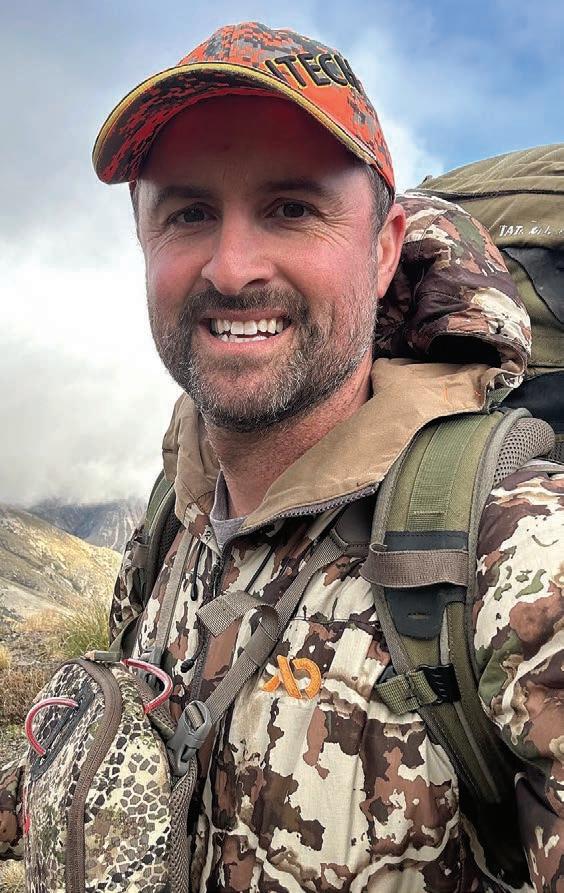
case for maintaining a healthy, sustainable level of animals on bush and farmland. He said given the last survey was done before some social media platforms were as significant as they are today, he expects the response will be even greater this time around.
HUNTING THE HUNTERS: NZ Game Animal Council CEO Tim Gale says the survey will help get more insights to hunters’ motivations and their level of club and environmental commitment.
The last survey gathered demographic data from 1250 people while the activity survey resulted in 7500 responses. He said he suspects there will be plenty of farmers keen to participate. The information will be available publicly once the two surveys are completed.
9 FARMERS WEEKLY – farmersweekly.co.nz – February 26, 2024 News 9
Deer
Softer side of FTA brings group to Lincoln

AN AGRIBUSINESS educational programme underway between Korea and New Zealand marks a pivotal moment in the collaborative efforts under the free trade agreement signed between the two countries almost nine years ago.
The programme is an initiative under the FTA agreement for bilateral engagement to create mutual prosperity and open market access for both NZ and Korea.
Heading the programme for the 34-strong agribusiness group, currently part of the Korean study group based at Lincoln University, is Professor of Agribusiness Hamish Gow.
“It is a catalyst to drive NZ’s engagement with Asia and understanding of both countries,” he said.
NZ is the only country in the world to have an agricultural cooperation agreement written into its FTA with Korea.
“Eastern Asia looks to Korea as a trendsetter. NZ can leverage off that.”
Gow has been working for the past 30 years in specialist agribusiness management, including international marketing and rural development, applying designated innovation to assist farmers and regional SMEs build innovative customer-focused business models and value chains that can successfully launch into local, regional and international markets.
A key highlight of the Korea-NZ FTA co-operation is the eight-week programme that combines English language training with specialised agribusiness studies.
The group of 34 are a cross-section of key industry agribusiness leaders, farmers, policy makers, business owners and university students from across Korea.
A further group of 10 is based in Nelson in a specialist fisheries programme.
Korea is a key trading partner for NZ, with two-way trade worth $5.38 billion in the year ending December 2021, an increase of
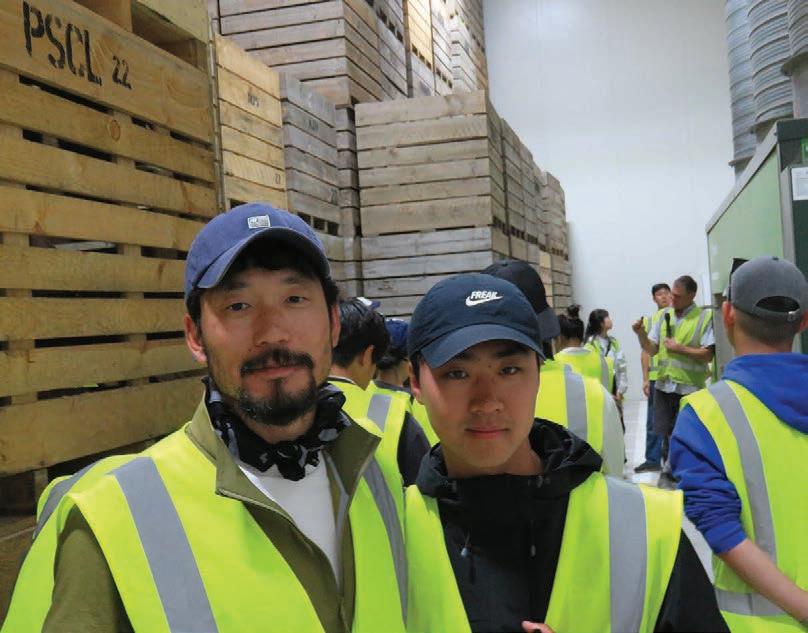
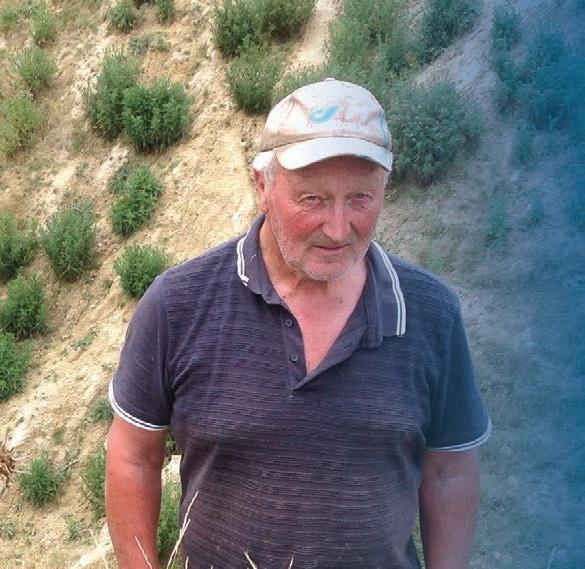
“
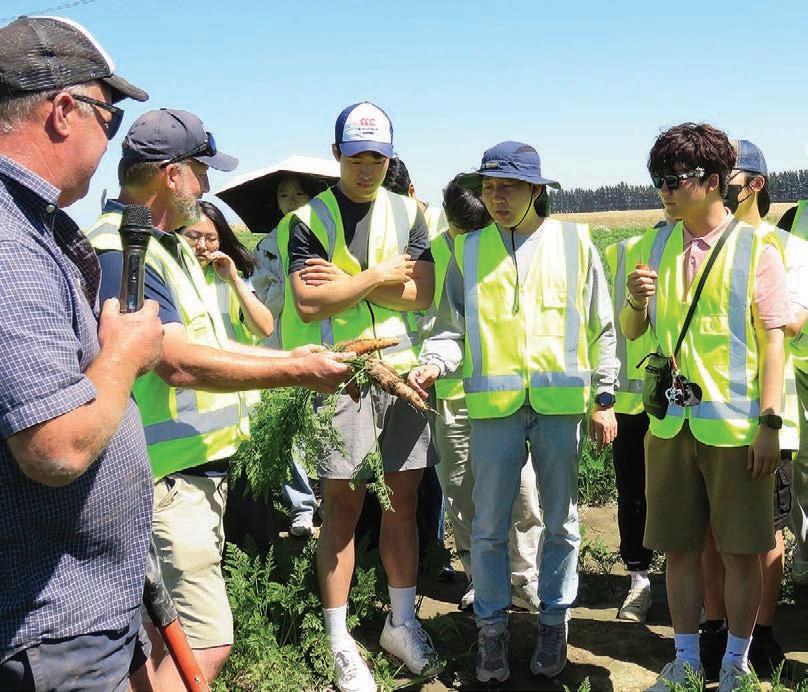
25% since the FTA came into force in December 2015.
Currently, Korea is NZ’s sixth largest trading partner. In 2021, NZ exported $2.28bn of total goods and services to Korea and imported $3.1bn.
“This bilateral relationship creates the groundwork for an even closer relationship between NZ and Korea,” Gow said.
Korea programme leader Sehee Kim said many of the group come from farming and business economics backgrounds.
“Some are just learning about agriculture but some have good experience in agribusiness,” Kim said.
“We don’t know a lot about NZ agriculture but we are getting some very good insights, around scale especially and weather and how that is important.
“The programme is about comparing similarities and differences between the two countries and how we can share knowledge from both sides.
“Because we are living here for
four weeks, we are also learning the NZ culture. We will take everything we learn back [to Korea] to work in co-operation with NZ for the benefit of both countries, which is what the FTA co-operation states we do,” Kim said.
Eastern Asia looks to Korea as a trendsetter. NZ can leverage off that.
Hamish Gow Lincoln University
Of the eight-week programme, the first two weeks were spent in Korea as a group, with two weeks remote learning in connection with Lincoln University.
The entourage arrived in NZ in mid-January to advance their learning in specialist agribusiness programmes at the Lincoln campus.
Over the four weeks, this has included field trips to all sectors of farming across Canterbury,
including arable, horticultural, high country, sheep, beef, deer, dairy and several related processing companies.
Key insights and highlights have been the collaboration and cooperative approach to farming and the associated value chain control to market as well as the scale of farming operations.
“The co-operative system, the scale of operation and how the product is in control of value from the farm to NZ export is wow!” farmer Peter Kim said.
Kim farms a 1 hectare rosehip orchard for a niche cosmetic market and a further 1ha of fresh vegetables.
“Just a 2ha farm, we are teeny tiny. For me NZ is big scale, this is a first time experience. There is a lot to take in.”
University student Lucas Park said to see the difference between both countries is a “big insight”.
“I am not an agronomist, yet, but I am very interested in genetics and breeding systems and really eager to see what kind of technologies NZ use.
“I have been very surprised. I came open-minded, but this is all quite different to my expectations, the temperatures and environment are so different.
“Co-operating with each other has impressed me, the mindset, branding in big companies and farmer co-operatives, like McCain and Fonterra.
“In Korea we do not have systems like this and we struggle with so many obstacles.
“There’s a lot we could adopt and I am very keen to learn the agronomy work,” Park said.
The Korea-NZ FTA co-operation programme is sponsored by the Ministry for Primary Industries and Ministry of Foreign Affairs and Trade and the equivalent under the Korean government, the Ministry of Agriculture, Food and Rural Affairs, with the team at Education NZ – Manapou ki te Ao bringing the group to NZ.
I just kept tooting the horn and they’re waving at me and I just kept my hand on the horn and then they realised ‘God, you’re in a bit of a mess’.
Rod Vowles, Waipawa farmer
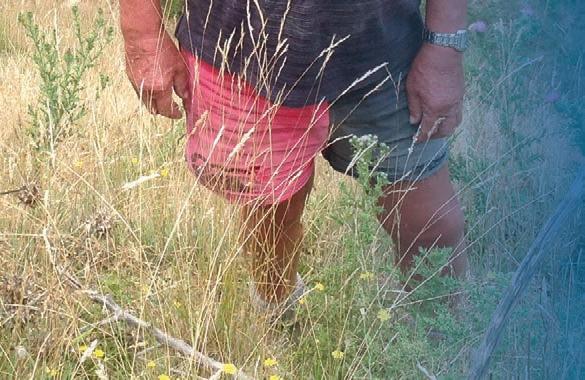




Cyclone Gabrielle: A story of survival


LISTEN NOW
10 FARMERS WEEKLY – farmersweekly.co.nz – February 26, 2024 News 10
Annette Scott NEWS Trade
INSIGHT: Pye Farming general manager Matt Hart, left, and Hamish Gow provide the Korean agribusiness students with some insight into carrots.
STUDY: Korean agribusiness group members, farmer Peter Kim and university student Lucas Park.
PGW directors double down

THugh Stringleman NEWS
Agribusiness
HE independent directors of PGG Wrightson have pushed back against a move by overseas majority shareholder Agria Corporation to get rid of them and redress the balance of the board table.
Canterbury-based independent director Garry Moore has been elected chair to replace Agria representative and acting chair U Kean Seng.
The board has also insisted that all current and nominated directors should provide full disclosure of their credentials ahead of a special shareholders’ meeting.
Agria has proposed seven resolutions for the requested SSM – the removal of three existing directors out of five in total and the election of four Agria nominees.
If successful, that would give Agria a strong majority of five out of six directors.
The three independents targeted by Agria are Moore, deputy chair Sarah Brown and Charlotte Severne.
Cyclones blast Pāmu profits
LOW product prices and ongoing costs dealing with last summer’s cyclones have hit Pāmu Farms’ half-year result hard.
The state-owned farmer has reported a $3 million half-year net operating profit to December 31, well back on the $15m reported for the comparable period a year earlier.
“Challenges posed by a sharp reversal in global dairy prices, plummeting lamb prices and adverse weather events have impacted our profitability,” chief executive Mark Leslie said.
“Sustained damage from last summer’s cyclones continues to impact our bottom line as we reinstate infrastructure and work to re-grass lost pasture, repair or replace damaged fences, clear slips, and maintain farm tracks.”
Leslie said Pāmu is forecasting an improved full-year net operating profit of between $9m and $19m compared to an original forecast of between $1m and $10m.
“The change to forecast is largely a result of the positive uplift in the global dairy trade index and gains from our wider forestry business,” Leslie said.
“It assumes that there will be no further deterioration in the exchange rate and that livestock prices hold through the season.”
Health and safety and wellbeing remain a focus for Pāmu.
“We achieved an important milestone in December with the last of our company quad bikes leaving farms.
“This was achieved in the same month as media reports of several fatalities involving quads, highlighting the risk of using these vehicles for farm tasks and corroborating our decision to exit them from the business.”
At its peak Pāmu owned 440 quadbikes nationwide.
The four proposed replacements are Agria principal Alan Lai, who was a former chair of PGG Wrightson, fellow Singaporean Wilson Liu and two local nominees, Traci Houpapa and Vena Crowley.
Agri has been a majority shareholder of PGG Wrightson (PGW) for 15 years, initially hailed as a capital rescuer, but that company and its nominees have run afoul of securities authorities in other jurisdictions.
Moore’s first statement made references to those problems.
“The board has determined that in the present circumstances, it is appropriate that all shareholders have sufficient information
to make an informed decision with respect to voting on the resolutions to be put to the meeting.
“The board intends to diligently ensure that PGW meets its obligations under relevant regulation including the Companies Act, the NZX Listing Rules and also the recommendations in the NZX Corporate Governance Code.”
No date has yet been set for the SSM but PGW’s interim results are due out on February 27.
More details of the governance wrangle are expected, along with a requisite 20 days’ notice of the SSM to shareholders.

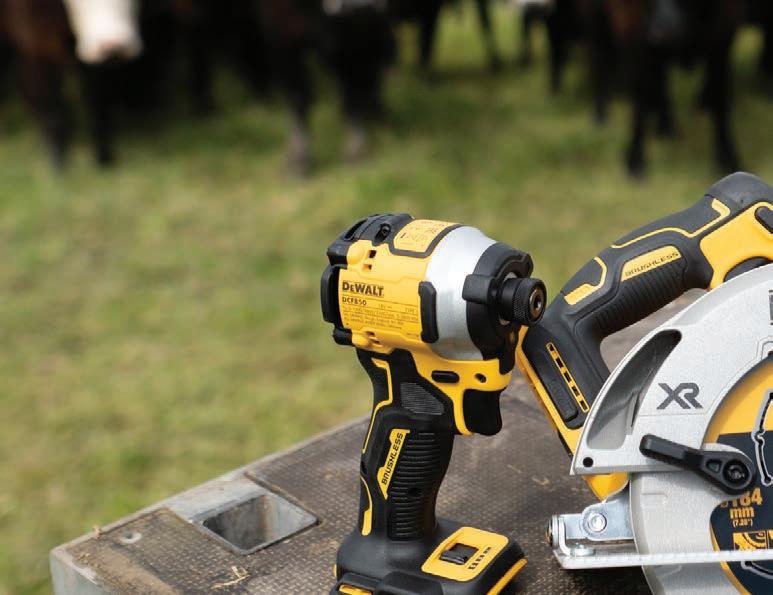

REPLACED: Agria representative and acting PGG Wrightson chair U Kean Seng has been replaced







For high quality and convenience you can trust, talk to your vet clinic about Boehringer Ingelheim cattle products to keep your stock at their best and we’ll add these DeWalt cordless tools to your tool box. For more information talk to your vet or visit: futureproducers.co.nz PROUDLY AVAILABLE FROM YOUR LOCAL PARTICIPATING VETERINARY CLINIC. ECLIPSE® and MATRIX® are registered trademarks of Boehringer Ingelheim Vetmedica GmbH, used under license. ACVM Registration Nos. A0101131, A009270, A011151 © Copyright 2024 Boehringer Ingelheim Animal Health New Zealand Limited. All rights reserved. NZ-BOV-0051-2023. FREE * DeWalt 18V XR Brushless Circular Saw, 18V XR Impact Driver or a LED Worklight Torch with qualifying cattle products. *Batteries & charger are not included. Promo ends 30th April 2024. Ask in clinic for qualifying products. GET MORE DONE 11 FARMERS WEEKLY – farmersweekly.co.nz – February 26, 2024 News 11
by Garry Moore.
Staff reporter NEWS Agribusiness

From the Editor
The power of the collared cow
 VCraig Page Deputy editor
VCraig Page Deputy editor
IRTUAL fencing on dairy farms is becoming increasingly popular – and its expansion into the hill country has shown that it may do more than just keep cattle in check.
There are now several virtual systems on the market that effectively remove the need for physical fences.
Cows wearing electronic collars have their movement controlled via an app using audio and vibrations to confine them to certain parts of the farm.
Some farmers are opposed to the systems on animal welfare grounds but others say the technology is a game changer, cutting the cost of fencing while also enabling farmers to better manage their stock and pasture.
And it is also providing some unexpected benefits for hill country farmers. It allows stock to graze higher on less-productive, overgrown pasture – and this, according
to some experts, will not only improve the grass but reduce the threat of wildfires.
Dr Derrick Moot, a professor of Plant Science at Lincoln University and leader of its Dryland Pastures Research team, is one who believes virtual fencing in the hill country could prevent fires, such as those that have raged on the Port Hills, in Christchurch, twice in the past seven years.
Moot knows his stuff. He was involved in investigating the biological causes of the 2017 Port Hills fire and at the time believed it would happen again unless our approach changed.
In December last year he predicted 2024 would be a burn year. A wet spring had seen grasses grow tall and flower and, without suitable grazing, it had become tinder dry and a perfect fuel for wildfires.
But he also has solutions, and believes virtual fencing will enable cattle to roam higher in the hill country and eat away at the rough, flammable overgrown pasture, which sheep ignore.
“Cows are the lawnmowers on commercial hill country farms. They clean up the excess vegetation in spring and summer and reduce the risk of a burn,” says Moot.
While there is no guarantee there won’t be more fires, Moot says such technology can reduce their probability and their impact.
Advances in virtual fencing mean land holders could opt in or out of having their
land grazed communally. Grazing can be planned with pinpoint accuracy and carried out close to buildings or forestry, reducing fuel in those areas and preventing the spread of fire.
Northland farmer James Parsons has firsthand experience of virtual fencing, trialling Halter collars for three months on his 600 hectare hill country property.
He believes virtual fencing will enable cattle to roam higher in the hill country and eat away at the rough, flammable overgrown pasture, which sheep ignore.
While it’s early days, he is already seeing the benefits. His farming operations currently use only 59% of their available pasture, but once some improvements are made to infrastructure they could go to 80%, generating much more profit for the business.
At this time of year, fire risk is constantly on farmers and firefighters’ minds as temperatures rise and winds set in.
It would be nice to think a proactive approach was available to help prevent more fires such as those on the Port Hills. All options should be on the table when it comes to fire prevention. Roaming cattle might just be part of the solution.
Text to the editor
A dog’s breakfast
• On succession
I agree completely with the text
“Destroyer of relationships” (February 5). Farm succession is a dog’s breakfast. It is destroying families, with many ending up in court as many daughters fight to be treated in a fair manner.
The sense of entitlement amongst some – primarily sons – is disgusting. I’ve been through farm succession and my parents decided the only way to be fair to everyone was to sell the farm. It’s tough, as my wife and I had worked the farm for 10 years but that didn’t give me the right to ownership and neither it should for any business.
Gone are the days of giving the farm to the eldest son and the daughters get an education. Set the farm up as a company and give all the children an equal share –pay the one who stays on to manage the farm a fair wage.
Text us your thoughts on issues raised in Farmers Weekly. Look out for the details on how to do it on selected stories, and include the key word in your text to 027 226 8553.
Letter of the week
Corngate myth
Dr Stuart Davis
Auckland
I RESPECT Rod Clarke’s right to have an opinion about the regulation of GE, in “Broken logic at the heart of GE plans” (February 12), that is different to mine. However, I am not going to allow myths to be paraded as fact without comment.
As someone closely involved at the time, I have never seen evidence that the so-called Corngate incident resulted in “20,000 to 30,000 genetically engineered corn plants” being “accidentally released into the NZ environment”.
That a Select Committee Inquiry into the matter produced a decision split down partisan lines reflects one thing that perhaps Rod and I might sometimes agree on: politicians don’t really know what they are talking about.
Best letter WINS a quality hiking knife
Send your letter to the Editor at Farmers Weekly P.0. Box 529, Feilding or email us at farmers.weekly@agrihq.co.nz


12 Editorial farmersweekly.co.nz We’re online NZ’s most trusted source of daily agricultural news and information is now a website.
FARMERS WEEKLY – farmersweekly.co.nz – February 26, 2024 Opinion 12
In my view ...
For better fire control, send in the cows
Derrick Moot
Dr Derrick Moot is Professor of Plant Science at Lincoln University. He leads the Dryland Pastures Research team.
ON SATURDAY I went bungy jumping. A birthday “gift” voucher had been sitting on the fridge for several months. I was ignoring it. Silently hoping it might expire. But my wife had other ideas.
She booked the date, and I confronted my fear. The rational part of my brain reminded me of Year 12 physics and the highly predictable elasticity of rubber bands. As a scientist I understand the equations and their repeatability. But the emotional side of me just wasn’t that keen to jump off a perfectly good bridge!
The science won and I have the T-shirt to prove it.
Repeatability is the essence of science. If we do the same thing under the same conditions, we get the same result. If you are jumping off a bridge, or flying in an aeroplane, that predictability is reassuring.
Biological science is also repeatable. However, there is uncertainty because of genetic and environmental variation that can influence the results. Therefore, we use probabilities to describe the likelihood of outcomes.
This year the probability of a fire on the Port Hills was high. I
wrote about its inevitable return seven years ago. And in early December I warned my walking companions on Bowenvale track that this was a probable “burn” year.
The wet spring had enabled the cocksfoot and tall oat grass to stand tall and flower.
There were sheep grazing the area, which was helpful. But their numbers were too low to keep up with the spring growth.
Sheep are like young children, fussy eaters, but they do eat their greens. In fact, they target the clovers and green leaves at the bottom of the plants, leaving alone the tall flowering stems.
In a wet summer these flowering seed heads rot down and add to the litter and organic matter in the ground. But when it is dry through January and February their moisture content drops and they become standing hay. Dry carbon ready to burn. No different from the dry wood that warms many winter homes.
So, what happens now – after the burn?
The biology is predictable. We measured it after the last fire with the help of some of the affected land owners. The twitch, yarrow, bracken fern, Californian thistles and brown top, all plants that have underground storage organs or rhizomes, will recover first.
These will quickly spread out underground from their burnt remnants and then pop up new shoots to occupy as much area as
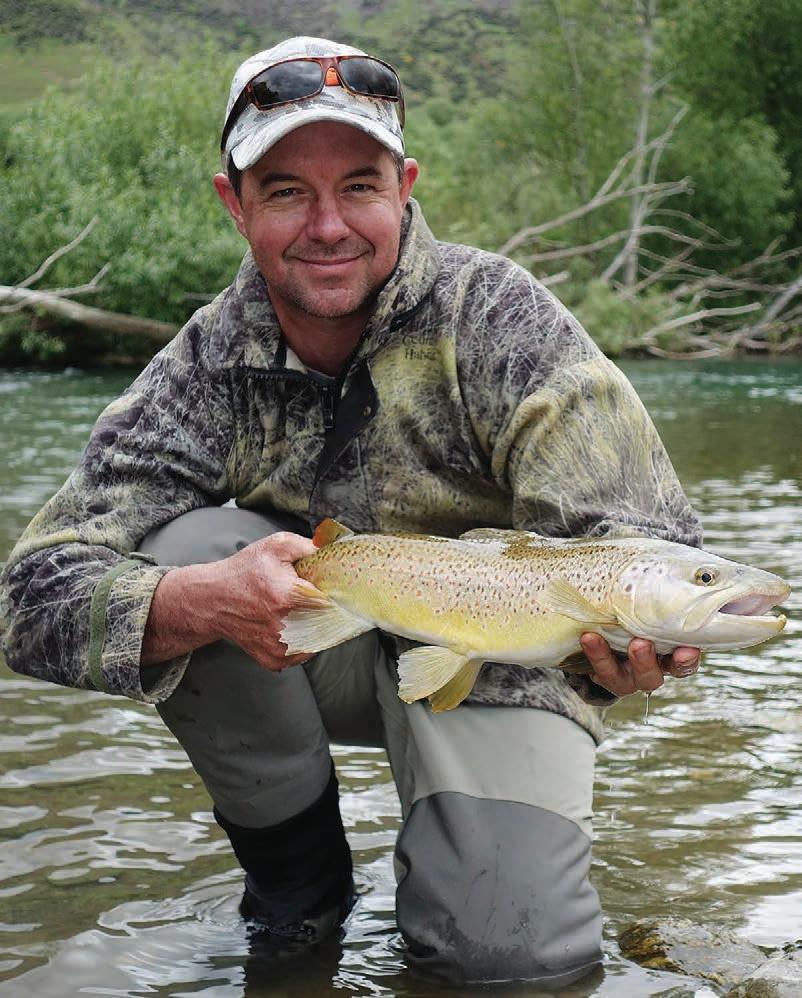
possible. The taller oat grass and cocksfoot will follow about two weeks later.
And after the first autumn rains, the gorse and other hard-seeded legumes will germinate. The resulting green tinge will signal biological renewal and start the cycle again.
To suppress the gorse we know we can fly on faster growing grass species and then follow-up with grubbing or spot sprays to control any escaped plants. But then what? If we do the same thing as we did for the last seven years we are destined to repeat the cycle.
We could bring in the heavy hitters of hill country grazing – cows with their calves.
For the sake of those periurban residents living on the edge we will also need to hope that the wind direction and strength remain as favourable as they did this time. But hope has a low probability of success; as a scientist I prefer an evidencebased strategy.
What could we change to get a different result? We could bring in the heavy hitters of hill country grazing – cows with their calves. Cows are more like teenage boys – a voracious appetite that can empty a fridge at one sitting.
Cows are the lawn mowers on commercial hill country

farms. They clean up the excess vegetation in spring and summer and reduce the risk of a burn.
Nothing can guarantee we won’t have more fires, but we can reduce their probability of occurrence and their impact.
Recent advances in virtual fencing means land holders could opt in or out of having their land grazed communally. Those with no livestock currently could remove their fences and indicate which areas they want grazed and which areas they want left alone.
Dairy farmers already control where their cows graze through their mobile phones and bring the cows in for milking with no human intervention. This technology is currently making its way onto hill country farms, typical of the landscape on the Port Hills.
Imagine our city-owned cows wearing solar powered collars. These provide a small sound stimulus on one side or the other of their heads to move them around. If they are reluctant to shift, the signal gets louder. They
quickly learn and move because the signal also means they are moving to an area of fresh feed.
In practice, an office bound mayor or his designate could shift the cows without ever going onto the hills. Areas near houses, or forests would be grazed first to reduce the risk of fire spreading across open ground.
GPS tracking of each individual cow allows a map on a mobile phone to show where they are. If we added a camera to some of them then real time images of their activity could be beamed to school children and the public to show agriculture in practice.
The science and technology are known quantities. Harder to quantify is the probability that we have the political will and administration flexibility to do so.
More probable is that I will wait for a steady easterly wind that science assures me will provide the necessary lift to overcome my fear and use the other “gift” voucher stuck accusingly on my fridge – a tandem paragliding experience off the Port Hills.
Let the rivers run
Zane Moss Southland Fish & Game manager
WE Kiwis are passionate about our rivers, and so we should be. While they vary in character, they provide a sense of a wild, natural environment often close to our farms, towns and cities. Whether we fish them, walk the dog, swim with the kids, or just gaze as we cross the bridge, they’re inherently interesting.
Mana whenua, local authorities, environmental organisations, farmers and wider communities all want the best for our rivers. However, differences can arise when it comes to how things have traditionally been done and what contemporary science is telling us we can do better.
Historically, Kiwis have straightened and manipulated rivers to direct them where we wanted them to go. This has allowed us to develop farmland on river plains that would otherwise be flooded whenever there was
moderate rainfall. Similarly, it’s allowed us to build towns and cities in locations where rivers would have either flooded, or perhaps meandered and eroded, were it not for engineering intervention.
River geomorphologists have termed this approach to river management “command and control”. The scientists who study river behaviour now consider that such approaches are no longer appropriate, and if continued without adaptation, will become increasingly risky.
Perhaps surprisingly, it’s now recognised that rivers need to be managed in ways that enable them to behave as naturally as possible. This provides for greater natural character, healthier ecosystems, and resilience to the increasing frequency and magnitude of floods we’re predicted to experience through climate change.
Put simply, our current approach effectively speeds up rivers, causes faster floods with higher energy, so that if a stop-bank fails, the damage
is potentially catastrophic for communities.
Progressively stepping back and broadening river fairways (the area between the stop-banks), although obviously difficult to achieve, would slow down floods, reducing their peaks and lowering the risk of catastrophic failure.
There’s a temptation to look at a river and see exposed gravel bars that change after each flood. It’s easy to conclude that gravel is building up, and in a few reaches of our rivers, it is. However, it’s just as common for reaches to be “starved” of gravel, caused through decades of extraction for uses such as roading and concrete.
Because most of the headwaters of the rivers of the Southland Plains are not from highly eroding hills, such as Canterbury or the West Coast, the bedload and migration of gravel is far lower than people appreciate. Generally, movement of gravel is simply a river re-working historic glacial outwash plains, attempting to
13 InMyView
FARMERS WEEKLY – farmersweekly.co.nz – February 26, 2024 Opinion 13
REPEATING: Biological science is repeatable and this year the probability of a fire on the Port Hills was high, says Dr Derrick Moot.
Continued
15
FREE FLOW: It’s now recognised that rivers need to be managed in ways that enable them to behave as naturally as possible, says Southland Fish & Game manager Zane Moss.
page
One team, standing shoulder to shoulder
Alternative view
 Alan
Alan
IWAS disappointed to read on the front page of last week’s Farmers Weekly that farmers are mixed in their support for greater collaboration between rural groups.
The article went on to tell me that some farmers say a one-team approach would blur the traditional advocacy and lobbying functions of the different organisations.
Farmers have little issue with a Team Ag approach but want the various entities to retain their independence.
The He Waka Eke Noa debacle featured, as it should.
One farmer was concerned that the various organisations are “working within silos” and I would agree. Another believed the Team Ag Approach is “unrealistic”. I’d disagree.
The arable sector complained that it has not been part of any
discussions about a single team approach.
Who would you blame that on?
To restate my approach:
Although agriculture in its broadest term is responsible for the majority of New Zealand’s income and, with it, our wealth, we are a disparate bunch quite happy heading off in different directions.
Other sectors have single bodies representing them, like Business New Zealand and the Tourism Industry Association. They are both well-resourced and effective. While in some areas they may be on the same side as rural NZ, on others they will be on the opposite side.
The issue is that they speak with one voice, we don’t.
The secondary issue is that we are electorally insignificant. The foibles of Auckland will always trump the realities of the productive rural sector.
We need a Team Ag approach.
Farmers love agreeing to disagree but we can’t survive with that mentality.
My concern is that, for the life of me I can’t see a problem.
We need a single voice, an agriculture hub if you like. We need to come together with all the various parts of the broad agricultural industry.
We have a good story to tell and we should be shouting it from the rooftops. Instead we fight amongst ourselves and that must stop if we are to survive as a profitable and pivotal part of the NZ economy.
You will have heard the old divide and conquer argument, and we set ourselves up for it.
It’s just crazy that we aren’t part of an agriculture hub.
For example, with health and safety the rules are the same wherever and whatever you farm. Resource management issues affect all producers the same way.
Water allocation and infrastructure are similar.
Restrictions brought in by the Ministry for the Environment and regional councils affect everyone in the rural sector, wherever they farm.
There is just no excuse for not having an agriculture hub, the centre of all issues rural.
That begs the question as to why we don’t and the answer is simple: egos and patch protection. It doesn’t achieve anything for farmers and levy payers, but gives those in authority a warm glow.
Criticism of the ag hub approach isn’t convincing.
The fact that the various organisations have their own electorates is fine but they’re not mutually exclusive. For example, Beef + Lamb NZ do a great job with their extension initiatives but I remain completely unconvinced of their lobbying ability or its effectiveness.
It’s the same for Dairy NZ.
Federated Farmers has an impressive track record and it does it well. It accurately represents its members’ views and is accountable to them.
A lot of its lobbying isn’t of the sexy variety, such as Feds submissions on local and regional council plans. But those submissions are vital for farmers to keep on farming.
The industry good organisations telling me their members want them to lobby is rubbish. If you

ask a farmer if they want an organisation to lobby on their behalf they will obviously say yes. The details, expertise of the lobbyist and accountability become lost in translation.
You will have heard the old divide and conquer argument, and we set ourselves up for it.
No one would argue that the extension work of both BLNZ and Dairy NZ should continue. That’s what they’re good at and they should stick with it.
It would be difficult to argue the expertise of Federated Farmers as lobbyists or of Groundswell as an organisation representing the
view of grassroots farmers and mobilising them into action.
I see absolutely no reason for those organisations to change.
What I do see the need for is one single ag hub, one body representing the industry.
Putting egos aside, Feds president Wayne Langford told me previously that his view of the hub was that of a team of agricultural interests where everyone had a role to play. I’d agree.
For example, you wouldn’t ask a halfback how the opposition front row was performing. Neither would you ask a hooker what it was like kicking into the breeze. In a team we all have roles to play but it is the team that is important. It’s where the focus should be.
That’s what needs to happen with Team Ag.
Gabrielle: Adapting to the new normal
Meaty matters
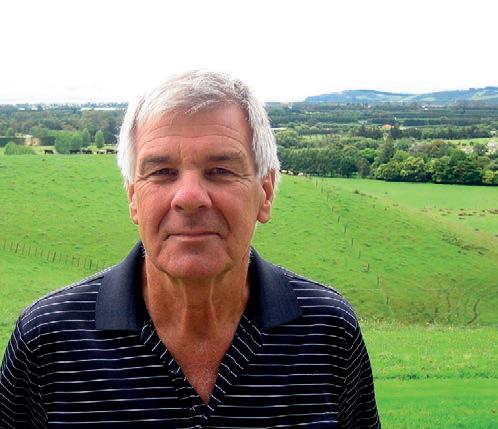
because farmers are stoic and resilient, they are able to handle the enormous levels of stress such events cause, both mental and financial, as well as generate the energy and resources necessary to carry out the work to repair the damage.
One year on I found that the events of a year ago are still quite raw and at least some of the farmers have already initiated or are seriously considering a change to their traditional farming operations because of the long-term effect of the floods and storms on their land, infrastructure and cashflow.
IT IS now 12 months since the flood events of Auckland Anniversary weekend, Cyclone Gabrielle and a third major downpour in February caused catastrophic damage to numerous farms and properties from the Kaipara Hills in the north to Puhoi in the south.
I recently caught up with several farmers in the area to find out how well the recovery process has gone and how much still remains to be done. This brought home what a cliché it is to assume
The most obvious impacts are the huge number of slips and the resulting disappearance of fences, which has resulted in larger paddocks and the need to reduce the number of different mobs.
Just off State Highway16 at Tauhoa, south of Wellsford, Scott Innes showed me the disruption to his land, which included by his estimate nearly 2000 slips in addition to substantial damage to his parents’ and brother’s neighbouring properties.
He pointed out an area of native bush that was fenced off two years ago with help from the Forest
Bridge Trust, but 100m of new fencing was washed out and would now require 400m to replace it because of the change in the land’s profile.
He spent $1000 on repairing a drain and culvert washed out in the first flood and then watched it being blown out again two weeks later. He reckons he has spent
nearly $40,000 on digger hire to repair the tracks, but that is only a fraction of what he would have to spend to fix them all.
He is concerned about what might happen during another wet winter and is reluctant to repair all the damage just to see it flattened again. He is now determined to simplify his farming system by
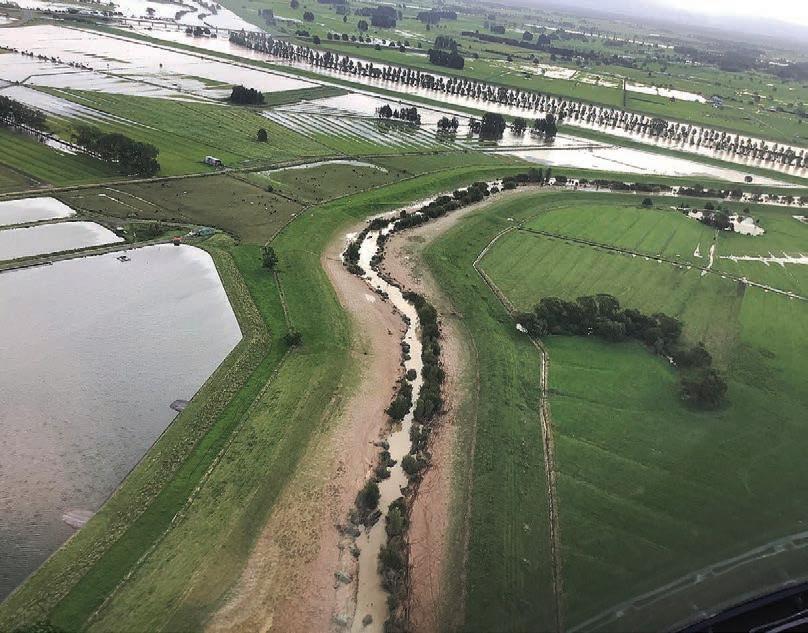
running fewer mobs, cutting out breeding from heifers and instead buying cows in, reducing his ewe numbers, and changing from Romneys to self-shedding Wiltshires.
He told me farmers in the Kaipara Hills are just coping, still traumatised by the flood damage, while profitability has also been hit hard by the drop in lamb prices on top of the cost of repairs.
Apart from the intended changes to reduce risk, he says, they have little option but to replace livestock and carry on.
Steven Dill’s family property, which backs onto the Innes farm, dates from 1889, when the land was originally cleared for pasture; 52 hectares of the most marginal land have been retired and are now being replanted with natives, which he will put into the Emissions Trading Scheme, because it offers greater income potential at lower risk than persisting with sheep and beef.
At its peak the farm ran 2500 ewes, but that number has reduced by more than 50% and will come down further with the native planting programme. It also runs
Continued next page
14 Opinion FARMERS WEEKLY – farmersweekly.co.nz – February 26, 2024 Opinion 14
UNITED WE STAND: We need to come together with all the various parts of the broad agricultural industry, says Alan Emerson.
Emerson Semi-retired Wairarapa farmer and businessman: dath.emerson@gmail.com
Allan Barber
Meat industry commentator: allan@barberstrategic.co.nz, http:// allanbarber.wordpress.com
SLOG: Kaipara Hills farmer and Federated Farmers board member Andrew Maclean says it will take years and a great deal of money to solve the region’s flood-related problems.
Continued from page 13
recreate the same sinuosity and meander patterns that they’ve had in the past.
Often perceived changes in gravel are caused by changes in river channel morphology. A good example is at the Mossburn Bridge on the Oreti River, where Environment Southland (ES) had received complaints about the risk to the bridge, due to an apparent increase in gravel.
ES re-surveyed the levels and found that while the gravel was higher in some areas, it had eroded against the rockwork they’d placed.
This deepening of the channel caused it to deposit gravel on the beach, and seemingly build it up. However, the actual fairway capacity had not changed and nor had the risk to infrastructure.
I’ve heard complaints, primarily from one or two related parties, that the solution to flooding risk in Southland is to dig gravel out of rivers. I’ve also heard repeated allegations that Fish & Game has opposed consents to extract gravel to protect bridges and infrastructure. That is simply not true.
Movement of gravel is simply a river re-working historic glacial outwash plains, attempting to recreate the same sinuosity and meander patterns they’ve had in the past.
To the best of my knowledge, Fish & Game has never opposed a consent application in Southland to remove gravel if it poses a risk to bridges or roading infrastructure.
ES is responsible for managing our river engineering infrastructure. They’ve recognised that our current approach isn’t without its risks in the short and medium term, with predicted increases in flood magnitude and frequency.
ES has commissioned Ian Fuller, Professor in Physical Geography at Massey University, to help develop a strategic document to inform gravel management on Southland’s rivers. As co-director of Massey’s innovative River Solutions Centre, Fuller’s expertise is second to none.
It’s unhelpful to continually table-thump about gravel and blame gravel for all that’s apparently wrong with our rivers. Instead, ES needs support for its adoption of a science-led approach to ensure that as a community we make the best investment in future management of our rivers, to ensure we balance the needs of riverside farmers, downstream towns and cities, and instream river values.
I often remember one of my young sons listening to a work conversation I was having with a farmer about gravel and flooding.
Once I was off the phone he asked, “But Dad, isn’t flooding caused by too much rain?”
He’s not wrong, but it’s not quite as simple as that.
Water’s transformative power
Eating the elephant

Ben Anderson
Ben Anderson lives in central Hawke’s Bay and farms deer, cows and trees. eating.the.elephant.nz@gmail.com
In this series, the lads discuss levers.
THERE is a book title out there called Too Much and Never Enough. Here in Hawke’s Bay that seems to neatly summarise our relationship with water.
Now I know that we in Hawke’s Bay do not hold a monopoly on droughts and cyclones, but in recent years it seems we have lurched from persistent dry to incessant wet, with little in between.
The scars from Cyclone Gabrielle are the freshest in our memory, but it is the cumulative droughts that affect more of us more often.
The theme of this series of articles is “levers”. My take on the theme is what levers can we as a sector pull that will have the greatest benefit to our economy and our environment?
As a farmer in Hawke’s Bay, I would struggle to think of a lever more powerful than that of sufficient and reliable water.
You see, water is transformative. Any producer of food knows that reliable production requires reliable water, but it is the wider benefits to the region that sometimes get missed in the conversation.
Hawke’s Bay has significant areas of land that could be put to a far
Continued from previous page
125 beef cattle, half Herefords and half Angus cross.
Dill maintains most of the land is very suitable for beef and especially sheep, but the steepest and most slip-prone areas need alternatives, which is why he intends to plant 85,000 natives, predominantly mānuka, kānuka and cabbage trees.
The changes to the farm currently underway will also make it possible to run the farm on one labour unit with the employment of contractors as necessary, whereas previously it was an awkward size, not quite requiring two labour units.
Kaipara Hills farmer and Federated Farmers board member Andrew Maclean has been in touch with a lot of farmers in the area through his work with the Rural

better use, if there was reliable access to water. Returns per hectare from unirrigated drystock land are paltry in comparison to those derived from irrigated horticulture and high value crops.
Certainly the benefits of water are there for the landowner, but it is what happens to this food beyond the farm or orchard gate that is the real story.
Supported by the correct policies and incentives, and with a steady flow of water and produce, it is reasonable to think that districts like Central Hawke’s Bay could become a new hub of food processing and manufacture, creating jobs and demanding services that would boost the entire district.
Productivity is often thought of as tonnage on the ship, but true economic productivity is the amount of value that is created from each unit of input. Water is fundamental to the creation of this additional value.
Aside from basic economics, there are other important reasons for large-scale water storage. Dams provide a buffering effect during weather events by absorbing excess water during floods and preventing areas downstream from being inundated.
By regulating a river’s flow, dams help protect the communities, infrastructure and ecosystems below them. Cyclone Gabrielle is
Support Trust (RST), Forest Bridge Trust and Taskforce Green. He says it will take years and a great deal of money to solve the problems because of the huge amount of work, the cost of materials, and the challenging access to steep hill country.
The steepest and most slip-prone areas need alternatives, which is why he intends to plant 85,000 natives, predominantly mānuka, kānuka and cabbage trees.
The RST identifies the worstaffected farms and co-ordinates the repair programme with input from the Ministry for Primary Industries, Ministry of Social
The reality is that we need to store more water even just to maintain our current level of consumption.
an obvious example of the damage that flooding can cause if left unmitigated. Dams aren’t a silver bullet, but they do help.
Climate change is another key driver for water storage, particularly in those areas already prone to drought. There is no question our climate is changing. There is also no benefit in ignoring the fact or thinking that the best form of adaptation is doing nothing.
Even with efficient water management practices, Hawke’s Bay will increasingly struggle to match demand with supply, both in town and in the country, without the construction of new water storage infrastructure.
The reality is that we need to store more water even just to maintain our current level of consumption. Kicking the waterstorage can down the road is no longer an option.
Naturally, no solutions are ever as simple as they seem, and there are certainly questions to be answered when arguing the case for water storage. Who will pay
Development and the regional councils.
As with the state of farming in general, the infrastructure repair work is very different for each farm, but he has 30 farms in the area that have either already benefited from or are awaiting a visit from the Taskforce Green crew based in Dargaville.
This crew spends one week in three in the Kaipara Hills and Ahuroa district, removing trees from fences, drains and culverts.
The Dargaville crew has been formed in close cooperation with iwi in that area. Maclean explained he has tried to organise a local crew, but funding, health and safety training, and the availability of manpower are the main problems. He also wants to avoid raising expectations beyond the capacity to provide assistance. In the
IF ONLY: Hawke’s Bay has significant areas of land that could be put to far better use, if there was reliable access to water, Ben Anderson says.
for it? Will the water be cheap enough to buy for those that wish to use it? Will the community truly benefit from the water, or will it just make a small group of landholders wealthier?
These are legitimate concerns, but they are within our ability to effectively address through smart design and policy. We as a country have built large dams before and we know enough to ensure that our efforts are equitable to those in the wider community who will ultimately share in the cost.
As a hill country farmer, I am fully aware that I won’t be able to use any of the water that may come from our region’s potential water security initiatives. But that doesn’t mean that I don’t support them.
There is an old saying that a rising tide floats all boats. I’m not sure that this is entirely true, but I fully believe that we as nation must start building large-scale water storage in those regions that would most benefit from it.
The cost of inaction is too great, and the potential benefits are too significant to try to stand in the way.
It’s pleasing to see that our new prime minister has come out in full support of water-storage infrastructure. Politics has always been the major stumbling block to date. Perhaps it’s an idea whose time has finally come.
case of his own property, he has converted from livestock to native planting, which means the damage to tracks and fencing from slips are not so much of an issue.
A short distance further south the Araparera Community Catchment Group has been formed to speak with a common voice on behalf of farmers, consolidate funding and compensation applications, clean up the main river and carry out planting programmes.
A year after the floods, farmers and the local community are working together to recover as quickly as they can, but it is a slow, uphill process. The main messages I received were farmers’ determination to carry on and enormous gratitude for the physical and financial help provided and the morale-boosting efforts of all the local groups.
15 FARMERS WEEKLY – farmersweekly.co.nz – February 26, 2024 Opinion 15
Photo: File
Fifty years and 10m bales of wool later
Rob Cochrane started his career in the stock and station industry sorting mail and licking stamps. After 50 years in the fibre sector, he retired last week. Annette Scott reports.
TIME has flashed by – “50 years in fact” – for Rob Cochrane, who started his stock and station industry career fresh out of school with Dalgety New Zealand in Christchurch.
“I was the mail boy sorting mail, licking stamps and running errands.”
He went on to spend time in both the wool and livestock divisions, as well as familiarising himself with other sectors of the company.
Come 1982, and Dalgety’s Christchurch wool department needed an auctioneer.
Developing wool-valuing and sales skills, Cochrane also learnt all aspects of the wool business, including on trips with local livestock agents to canvas wool growers in Marlborough, Nelson, the West Coast and wider Canterbury.
With his patch extending far to the east, visits to the Chatham Islands were a special feature.

His livestock training centred on what were then the Addington saleyards, learning to assess different classes of stock.
“Wool gave us plenty of opportunities to earn a few extra dollars working at night in the on-site wool dump. Daytimes we spent in the bin room, learning wool types and classing.
“Local wool auction sales were an important part of the training.”
In 1975 Cochrane became a junior livestock agent in Rangiora, gaining promotion and shifting over the following few years to Culverden, then Southbridge. Working as an agent enabled him to develop auctioneering skills, covering all aspects of livestock, including clearing sales.
“At the start you were given pigs to auction. If you could do that, you were moved on to sheep, then finally cattle.
“Once I was even asked to auction off a couple of racehorses from the birdcage at Riccarton racecourse. It was a good job, there was an expert handy and I kept a close eye on him.”

“Compared to livestock, auctioning wool is totally different. With stock many people in the gallery are essentially amateur buyers, farmers going in once or twice a year to buy store stock.
“Wool buyers attend many more auctions and are basically professional.
“They know what they can spend and are focused on what to spend it on.
“There were around 45 at Christchurch wool auctions when I started, down to around 15 now.”
In 1984 Crown Corporation bought Dalgety NZ and the company became Dalgety Crown, then in 1986, after merging with Wrightson NMA, it first became Wrightson Dalgety, then Wrightson.
In 1991 Cochrane co-founded a new Christchurch-based wool auction brokerage trading across the upper South Island.
“Starting a new business from scratch, developing and growing that business at a time when we had a young family, was challenging, though rewarding.”
It paid off when the business sold in 2000 and the new owner appointed Cochrane to manage its South Island-wide wool broking operation, which he did for the following five years.
of South Island Wool manager.
“During 2006 I had the opportunity to travel to Melbourne on several occasions to auction wool for the NZ Merino Company, then 50% owned by PGG Wrightson.
“They were different to NZ wool auctions. There were more bidders in the Melbourne auction room than we had in Christchurch, the auction tended to go quicker and you had to get used to the Aussie twang.”
At the start you were given pigs to auction. If you could do that, you were moved on to sheep, then finally cattle.
Rob Cochrane PGG Wrightson
Shortly after the final merger a new entity, Wool Partners International (WPI) was established, including the PGG Wrightson Wool business.
Cochrane became wool procurement manager for WPI.
the company with a nationwide capital raise through a series of roadshows, involving extensive travel from Whangārei in the north to Tuatapere in the south.
Along with everyone else involved with WPI, Cochrane was disappointed when the capital raise fell short.
“It was a once-in-a-generation opportunity to make a difference. We had large numbers of farmers at several of the meetings, obviously in favour.
“Younger farmers might have another crack at it in future and change the way the wool industry does things, though that’s for another generation to work out.”
After WPI Cochrane again donned the PGG Wrightson uniform and resumed his role as South Island wool procurement manager.
In the heyday of wool in the early 1980s the industry supported eight wool auction centres – Auckland, Napier, Whanganui, Wellington, Christchurch, Timaru, Dunedin and Invercargill.
“That’s down to two now [Christchurch and Napier]. I was auctioneer at the last Timaru wool auction, held in 1983.”
Consolidating the auction centres was a big change.
“Back then wool was displayed in broker stores for exporters to value, shown in farm bales with the cap sewn on and one corner opened to reveal the wool. It was auctioned in the town where the wool was stored.
“Grab sampling technology led to plenty of change, enabling centralisation of a show floor to value the samples, a reduction of auction centres, less need for the exporters to travel, and smaller exporter teams.”
While not keeping an exact count, Cochrane suggests he would have conducted between 800 and 1000 auctions through the years, selling some 10 million bales.
More change came in 2005 when the newly merged PGG and Wrightson offered him the role
“We were aiming to bring growers and brokers together to give the industry the resources and momentum it needed to make wool more profitable again in export markets.
“Our initial objective was to float
While it has been tough to remain positive during the recent past as wool prices remained low and the number of sheep producing wool continually reduced, Cochrane said as he put down his gavel for the final bid on February 15, “the wool industry is still a good one”.
“Although I’m looking forward to enjoying more time with my family, maybe more bowling and some tripping around, I’ll miss my fellow staff and wider industry contacts.”

16 People FARMERS WEEKLY – farmersweekly.co.nz – February 26, 2024 People 16
END OF AN ERA: Rob Cochrane conducts his final auction on February 15 flanked by Dave Burridge, left, and Grant Edwards
NUMBERS: Rob Cochrane, pictured here in the 1980s, estimates he would have sold 10 million wool bales over the years.
CRITIQUE: Rob Cochrane judges wool at a recent New Zealand Agricultural show.
How far could Halter take hill country?
Trials of the cow collar tech in some of Northland’s toughest
up a world of opportunities for farmers, councils and the land. Hugh Stringleman reports.
VIRTUAL fencing of beef cows and finishing cattle is a game-changer for hill country farming, opening many possibilities for farm development and livestock management, Northland’s James Parsons says.
Parsons, the former chair of Beef + Lamb New Zealand (BLNZ) and co-owner of Matauri Angus beef stud and 600 hectare Ashgrove Farm, has been trialling Halter collars on breeding cows and heifers for the past three months.
Along with business partner and farm manager Travis Pymm, he is excited by the cattle adaptability, grazing pressure, calf growth rates and the hands-on farm work improvements.
And with Parsons’ governance background, Nuffield scholarship and part-time farm advisory work, the advantages for virtual fencing in hill country seem to stretch out before him.
He has already shown Kaipara Moana Remediation representatives some options for retiring steep and shaded slopes from cattle grazing, planting with natives and mitigating sedimentary loss to waterways.
“Would KMR put money into virtual fencing infrastructure rather than the costly hard fencing? Which requires ongoing maintenance,” Parsons asks.
“Will the proposed Northland Regional Council stock exclusions on steep slopes become redundant?
“Do we rethink all fencing and subdivision on our 600ha farm. Is a 30ha or 40ha paddock now the optimum paddock size, meaning less fencing maintenance?
“What is the optimum sheep to cattle ratio, how many breeding cows do we need to get the utilisation benefits whilst still running a high-performance ewe flock?
“Instead of setting up costly 0.5ha cell systems on our easier sections of the farm with two-wire electrics using two daily shifts,
do we put collars on our finishing cattle and move to daily shifts?
“The big question running through my mind is, how do we really systemize this grazing technology to make the most of it?”
Parsons has spreadsheets that ask the financial questions, and he will be sharing them at a BLNZ Farming for Profit field day on March 13.
He estimates his farming operations currently use 59% of their pasture. He is hopeful once they improve water infrastructure and land on the optimum grazing system they could go to 80%, an extra one to two tonnes a hectare dry matter annually, and generate tens of thousands of dollars more in gross margin.
With more natural water during winter, and some water lines and troughs, collared cows can be pushed higher towards the ridge lines and held there to eat pasture that is currently sub-optimally grazed and this time of year ends up rank.
Our farm is some of Northland’s steepest hill country and if the technology can work on our hills then this can work anywhere.
Travis Pymm Matauri Angus
But better utilisation is only one of three big potential gains – the others being growing more grass and growing better quality.
The installation cost of Halter communication towers, farm mapping and Starlink service is around $40,000 and the annual rental of collars is $96 per cow.
Parsons has no doubt that the initial set-up cost and ongoing collar rental will be covered by better pasture utilisation, before the added benefits of improved pasture growth and feed quality

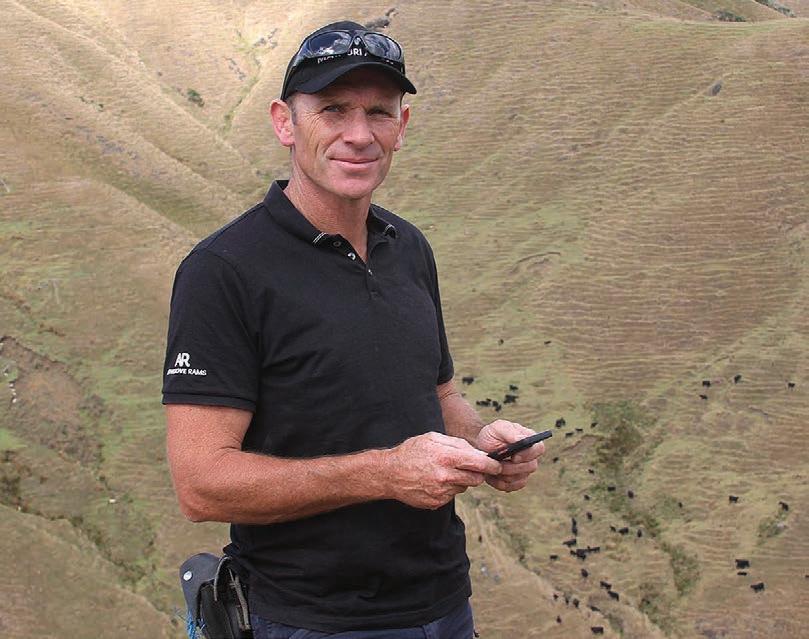
improvements. Pymm says the current crop of calves are three to four weeks ahead of usual, growing at 900g/day instead of 800g, notwithstanding this drier summer compared with last summer’s soaking.
Calves are not collared and are free to graze ahead of their mothers, not confined to competing with them for feed. They can wander back to Mum for a drink whenever they want.
The cows stand at the virtual boundary before shifts, waiting for the audio cues to tell them to move forward.
They learnt very quickly that a beeping sound after crossing a live boundary told them to retreat before a pulse would follow.
The virtual boundaries and the shifts are controlled by Pymm, Parsons and stock manager Dan Keay using their mobile phones and the Halter app.
The app can be viewed offline, but new breaks can’t be drawn or initiated without cell or WiFi reception. So shifts are generally programmed the night before and scheduled to initiate at 5:30am the next morning in the cool of the day.
The Halter towers have solar panels and batteries and communicate via a LoRa network up to 3km line of sight.
Continual updating of the app from all collars produces a grazing “heat” map history and enables quick retrieval of a lost collar –only two collars have fallen off the Matauri cows in the past three months.
177 breeding cows. During mating the cows were confined to one or two hectare zones and the bulls did not have to range far, reducing the possibilities of injuries.
Being an Angus stud, all cows and heifers are single sire mated and therefore had to be split into smaller mobs, nine in total.
“The shift sequence is all carrot and no stick,” Parsons says.
“The cows are not forced to shift, the incentive is more grass in the new break. Shifts average about one hour before the whole mob is across and locked in the new break.
“They only receive a pulse after a 30 second warning if they try to leave their break.
“We also had the added advantage of grazing mating mobs in the easier areas of some paddocks that we traditionally would never use for mating because they were too big or too steep.”
Ashgrove is 70% hard hill country and about 30% kikuyu pasture content in the summer.
When Parsons spends time away from the farm he can follow

The 535ha-effective Ashgrove farm at Tangowahine, near Dargaville, has nine towers including the home tower back at the yards and selling centre. It is currently running 269 collars across 92 R1 heifers and

all collared cattle on the Halter app.
“It’s great knowing exactly where everything is and makes planning and discussing grazing plans with the team so much easier.”
The workload has changed to more time spent planning daily shifts and pasture management, instead of physically moving cattle weekly or fortnightly.
“But these shifts don’t require physically shifting cows, so it’s redirected effort with more benefit,” Pymm says.
“Our farm is some of Northland’s steepest hill country and if the technology can work on our hills then this can work anywhere.
“We are just three months into this new technology and only scratching the surface – once we systemise our grazing and improve our water infrastructure we will get a lot more out of it.”
MORE:
BLNZ Northern North Island Farming for Profit field day, 10am start, Wednesday, March 13, Ashgrove Farm, 585 Murray Rd, Tangowahine.
17 Technology FARMERS WEEKLY – farmersweekly.co.nz – February 26, 2024 Technology 17
country open
CONTROLLER: James Parsons has the Halter app on his cell phone to virtually move the grazing block boundaries of cows and calves some distance away.
SHADE: Matauri cows with collars and their calves rest up in the heat of the day near the water source.
DRAUGHTING: Ashgrove Farm co-owner James Parsons and his farm manager Travis Pymm confer on grazing block boundaries for their Matauri Angus cows and calves.
ABUNDANCE: Uncollared calves grazing over the perimeter that holds the cows. Back in spring the Matauri cows and calves were new to the virtual fencing and had plenty of lush grass to eat.
Free Grassmanship
app calculates true cost of pasture weeds
If you’ve ever wondered what the financial impact would be if you let pasture weeds get away on you, there’s now a great way to find the answer.
The new Grassmanship® web-based app from Nufarm is here to help New Zealand farmers get the best out of their pastures all year. It’s free – you can personalise it to your farm and paddocks, and it will quantify exactly what you stand to gain or lose by making certain spending decisions about your pasture care this season.
Available at the grassmanship.nz website, the app comes packed with features, including several calculators to help compare the outcomes of different weed control options in terms of return on investment.
“Farmers intuitively know that old run out pastures don’t produce as much feed as newer, higher performing pastures, just like they know maintenance fertiliser supports higher
feed production,” says Nufarm NZ Product Manager Matt Strahan.
“However, during tighter financial times, it’s understandable to look for ways to trim costs, with feed, labour, and/ or weed management programmes being typical budget categories that come under scrutiny. The relatively small investment from controlling weeds – particularly in newly sown pasture –pays returns within six to twelve months in a range of situations.
“We’ve loaded the Grassmanship app with separate dairy-specific calculators for both the North and South Island that cover common scenarios like spring weeds, new pasture and winter weeds.”
Clean, productive pastures, year-round, offer a double win, Matt says, because they give you both higher dry matter yield and better feed quality, than those which are infested with weeds. That sets up on-going systemic benefits, including easier grazing management, happier animals and more milk in the vat.

Matt says in addition to the calculators, grassmanship.nz also provides useful information to help farmers and their advisors get optimal results from a pasture protection programme, and includes a range of Nufarm’s resources that support best practice.
The tool assumes good agricultural practice – using the right products at the right rates and at the right time. Spraying weeds earlier, rather than later, often yields the best results. Much of the background data is built from commonly referenced industry statistics as well as regional pasture data generated by Beef+Lamb NZ and DairyNZ.
Grassmanship.nz is the first of a suite of support tools for farmers and rural professionals that Nufarm plans to develop further.
To use the app, visit the grassmanship.nz website or talk to your Nufarm Territory Manager today.

















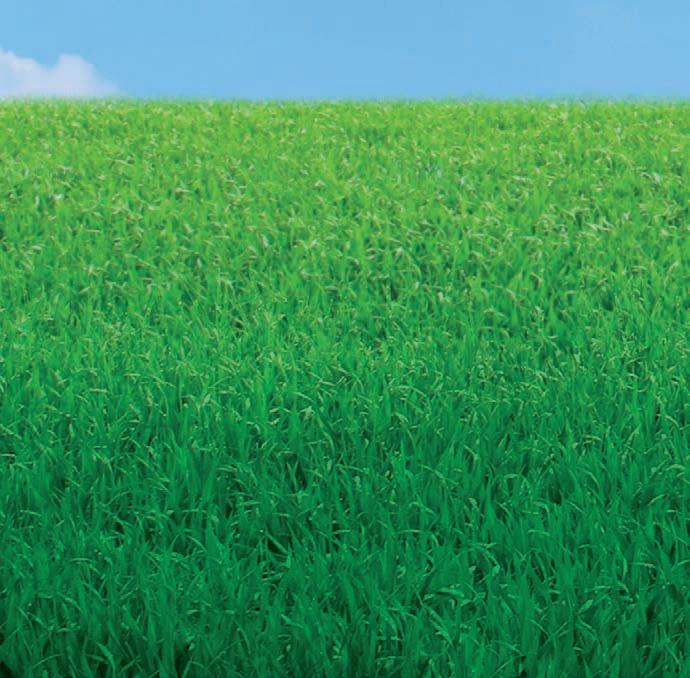















®
News Grassmanship® Calculate the power of pasture ONF208661NF For more information, scan the QR code or visit grassmanship.nz • Generate more profit from pasture • Minimise supplementary feed costs • Maximise home-grown feed • More feed for your animals Scan here to calculate! ADVERTISEMENT 18




















Rural banking
‘Let’s get it underway’
It’s time to stop talking about a rural banking inquiry and make it happen – that’s the message from Federated Farmers to the government.
Leading up to last year’s General Election, Federated Farmers called strongly for the incoming government to commission an independent inquiry into the state of rural banking in New Zealand.
“We wrote and spoke to all the political parties pre-election, saying what we wanted and why. We had broad support from the parties for an inquiry into rural banking,” Federated Farmers domestic commerce and competition spokesperson Richard McIntyre said.
“Since then, we’ve had some really good discussions with the chair of the Primary Production Select Committee, Mark Cameron, about them picking it up and running with it.
“So, Mark, let’s get it underway. Let’s give rural businesses and rural families some certainty about the fairness of the interest rates they’re paying and the services that they’re getting.”
Speaking on the Federated Farmers Podcast, McIntyre said rising interest rates combined with high in ation have put many farmers under huge nancial pressure.
“They’re seeing big di erences between the rates banks are advertising for residential borrowers
and the rates banks are charging them as farmers, and they’re frustrated at the amount of pressure it’s putting them under.”
McIntyre said everyone in New Zealand is battling with high interest rates and high in ation, but whereas national in ation has risen roughly 7% over the past few years, on-farm in ation has been more like 13% to 17 % during that time.
“And yes, interest rates have gone up for both urban and rural, but rural rates still sit roughly 1.5%, sometimes 2% more than urban rates.
I think a lot of the reason farmers feel really uncertain about whether or not rates are too high is because of the lack of transparency around what actually drives that rate they’ve ended up with.
Scott Wishart NZAB
“We need an inquiry that gives farmers an understanding of what’s driving their interest rates and whether it’s fair and reasonable.
If an inquiry nds it’s not fair and reasonable, then we need to know what should change.”
The banks’ use of risk weightings for farmers also needs to be
investigated, McIntyre said.
“Farmers are going through a really hard time at the moment but, as they begin to struggle more, their interest rates go up. It seems counterintuitive that, just when the farmers are really needing some help because they’re struggling under the burden of high interest costs, their interest costs are going up even further.”
McIntyre says he’s raised these issues with the Reserve Bank and rural lenders.
“They each accept there’s a di erence in interest rates between residential and rural, but they both quietly point the nger at the other.
“So, the Reserve Bank says they’re happy with the current regulation, and they believe it’s t for purpose. They think any additional interest farmers are paying is either acceptable or the result of the risk weightings set by the banks.
“The banks say the di erence is down to Reserve Bank regulation.
“So, there is a signi cant regulatory component to this that needs to be dealt with.”
Scott Wishart, a director of New Zealand Agri Brokers (NZAB), joined McIntyre on the podcast and agreed there needs to be greater transparency from the rural banks.
“I think a lot of the reason farmers feel really uncertain about whether or not rates are too high is because of the lack of transparency around

what actually drives that rate they’ve ended up with.”
Farmers often perform more strongly when they’re con dent, but it’s hard to feel con dent when they don’t feel in control of their nances, he said.
“Finance is clearly one of those things where if you perceive you don’t have control, you become less con dent about whether you’re getting a good deal.”
Although there needs to be greater transparency from the banks, there are steps farmers can take now to improve their situation, Wishart said.
“I think there’s some responsibility here for farmers to negotiate with the banks more than they are currently.”
Farmers have the opportunity to pay less when their businesses
get stronger, but they need to be showing up to the bank with a clear strategy and budget, demonstrating they deserve a better deal, he says.
McIntyre agreed there’s some lowhanging fruit for farmers.
“So often farmers don’t understand there are some simple non- nancial things they can do to drop their interest rate. Providing a budget and regularly updating it is one of those things.
“If you don’t know how to do it, nd someone to help you do it, but start doing it to give the bank some con dence to lend you the money at a lower interest rate.”
Hear Richard and Scott discuss rural banking in episode three of the Federated Farmers Podcast, which goes live on February 26 – fedfarm.org. nz/podcast



19 Fed Farmers FEDERATED FARMERS Vol 2 No 6, February 26, 2024 fedfarm.org.nz ARE YOU A MEMBER? Yes! I'm on the team. NO? Let's talk. Join the conversation. Become a member today. 0800 327 646 fedfarm.org.nz
inquiry:
TRANSPARENCY: Farmers deserve to know what’s driving their interest rates and whether those rates are fair and reasonable, Federated Farmers domestic commerce and competition spokesperson Richard McIntyre says.
An apparent jump in the number of farmers and contractors being fined for not displaying a transport service licence shows there’s confusion about who needs one, Federated Farmers says.
Instead of police cracking down through fines, educating those breaching the rules would be a better approach until there’s greater awareness, transport and roading spokesperson Mark Hooper said.
“There needs to be much better clarity about who needs one of these licences, but we also think the regulations are out of date and need to be reviewed fairly urgently,” Hooper said.
“In the meantime, rather than approaching it as a direct offence, police might be better using it as an opportunity to educate farmers and contractors.”
NZTA rules state that any individual or company must hold a transport service licence (TSL) if carrying goods on any road, regardless of whether it’s for hire or reward, where the vehicle’s gross laden weight is 6000kg or more.
That means if a farmer or contractor is towing a trailer carrying maize silage, hay, fencing materials or other goods, where the overall weight is six tonnes or more, they must display a TSL or risk being fined.
Applicants must also hold a certificate of knowledge of law and practice for a goods service.
Hooper said Federated Farmers is aware of a recent uptick in farmers and contractors being pinged.
“I know the police are simply following the letter of the law – and they don’t make the rules – but I’m not sure why this has suddenly become a focus for them. A few months ago it was axle weights, and now it’s transport service licences.”
He said he’s hearing that many farmers and contractors aren’t even aware they need a TSL, while others know what a TSL is but don’t know if they need one.
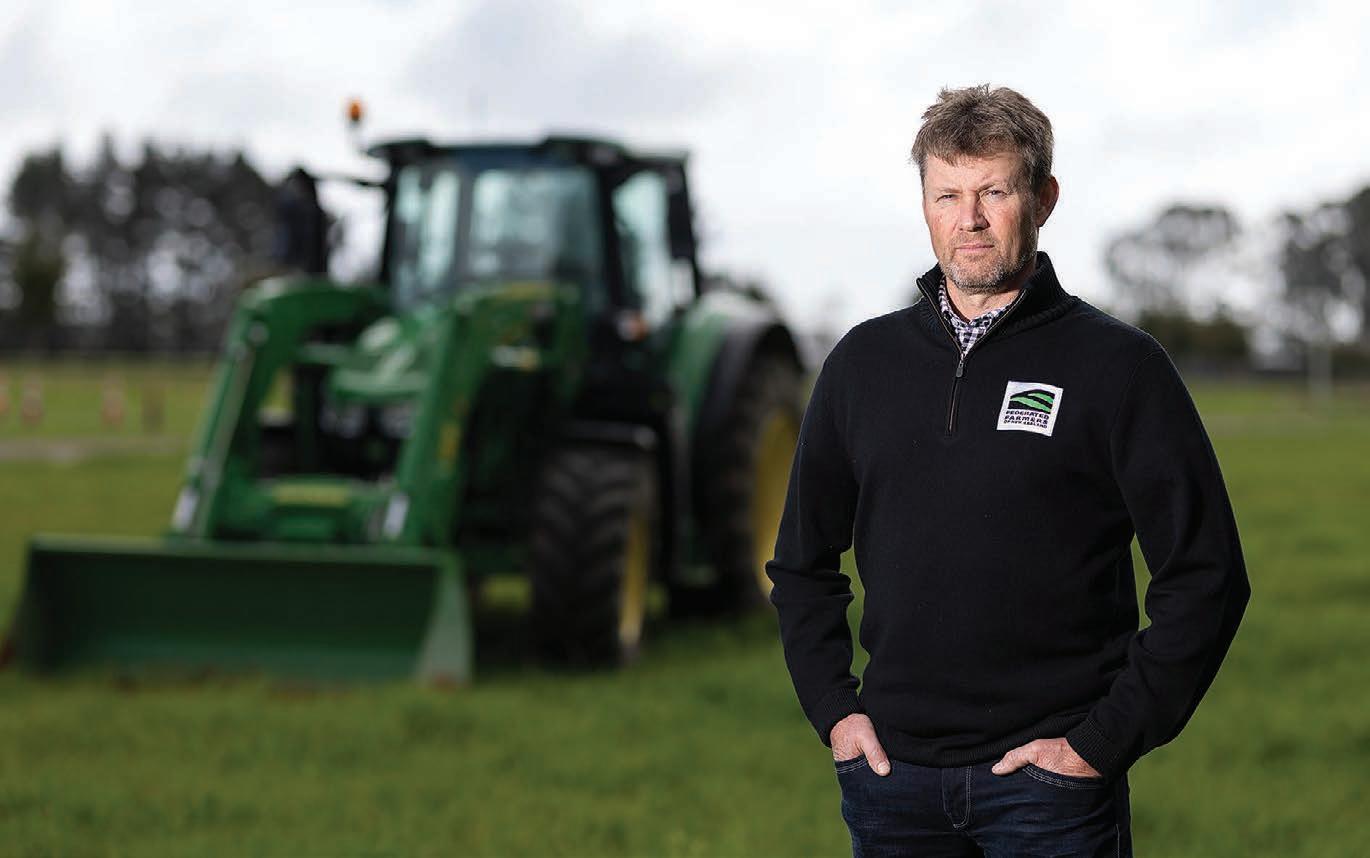
The other problem is these rules were set some time ago, when perhaps a six-tonne threshold was appropriate. But now, tractors are bigger and there wouldn’t be many farmers on the road towing a trailer that isn’t over that limit.
Mark Hooper Federated Farmers transport and roading spokesperson
“The rules on the NZTA website aren’t very clear; in fact, they’re quite confusing. Some people can apply for a waiver, but it isn’t easy finding out the eligibility criteria.
“The other problem is these rules were set some time ago, when perhaps a six-tonne threshold was appropriate. But now, tractors are bigger and there wouldn’t be many
farmers on the road towing a trailer that isn’t over that limit.”
At the same time, modern braking technology is superior to when the rules were set, meaning the safety risks are now far lower, Hooper said.
“For that reason, we think the thresholds need to be lifted so the average farmer towing some hay down the road a few times a year doesn’t need a TSL.
“We’ll be asking for a review of the regulations, and for a process to be put in place that sees the regulations reviewed at regular intervals to keep pace with changes in technology.”
The penalties for operating an unlicensed service include a fine of up to $10,000 (increases to a maximum of $25,000 for subsequent convictions), and vehicles can be impounded for up to 90 days.
A Rangitikei-based ag contracting couple, who asked not to be named, say they were recently fined for not displaying a TSL on their tractor and trailer combination.

“A police officer saw one of our staff members carting round hay bales and when our driver was on the way back, the officer pulled him over and issued an infringement notice for $2000. He didn’t even have anything on the trailer by then.
“We do have a TSL for our vehicles, but we just hadn’t put a label in that tractor on that day.”
The contractors say they rang four other contractors and learned that none of them displayed TSL labels on their tractors, and none knew they had to.
The rules are confusing and illogical, they said.
“Ok, as a contractor we’re probably liable to have these tickets in the window, but where does the line get drawn in the sand?
“There are probably more farmers on the roads with these trailers than contractors, and they’re doing the same thing, carting hay for themselves or somebody else.”
The couple say even an empty




WHAT’S THE DEAL?:
Federated Farmers transport and roading spokesperson Mark Hooper is seeking urgent clarification from officials on the rules around transport service licences.
tractor and trailer is usually over six tonnes these days, “so according to the wording on the NZTA website, you’ll need a TSL whether loaded or empty”.
They say ag contractors are worried the fining will escalate in the weeks ahead.
“With the maize harvest ready to hit, when there’s dozens and dozens of tractors on the road carting maize silage, we’re concerned we’ll be an easy source of revenue collection.
“Maybe they should have had an article in the rural publications or let us all know somehow that they were going to clamp down, and why, and then people could have gone out there any got themselves organised.”
Hooper says he’s asking officials to provide urgent clarification on the rules, and he’s also asked for this matter to be discussed at the next Ag Transport Forum meeting, which includes Feds, Rural Contractors, NZTA and others.



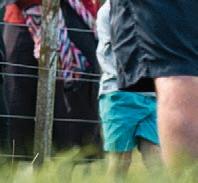

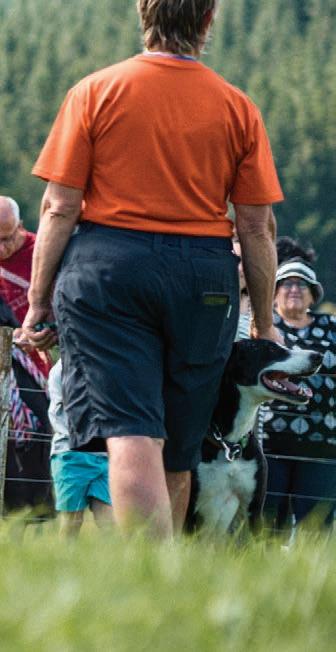
Sign-up to host at WWW.OPENFARMS.CO.NZ Ministry for Primary Industries Manatū Ahu Matua Agriculture & Investment Services OUR LAND AND WATER Toitū te Whenua, Toiora te Wai National Open Farm Day Sunday 10 March, 2024 Reconnecting Kiwis with our land, food and farmers. One open day at a time. Host an open farm day 20 February 26, 2024 – fedfarm.org.nz Federated Farmers 20
tractor users not the answer
Stinging
Welcome changes to Te Mana o te Wai
individual resource consent against the Te Mana o Te Wai concept.
The concept of ‘Te Mana o Te Wai’ has been a major concern for many farmers since the previous Labour government introduced its Essential Freshwater reforms in 2020.
That concern doesn’t stem from an unwillingness to make changes to improve water quality, but from uncertainty about how this vague new concept will be interpreted and applied by councils, and the impact this could have on our farming businesses and rural communities.
Under these new rules, the health and wellbeing of water is put ahead of all other considerations, including human health, and social, cultural and economic wellbeing. From my perspective, that seems wildly imbalanced.
I was incredibly frustrated to hear reports that, in my home community of Canterbury, the Regional Council have been assessing each and every
Using a strict interpretation of the new rules meant any application that wasn’t explicitly improving water quality was noti ed, and likely to be declined.
This in exible approach has the potential to freeze current activities in place. Horror stories have already been emerging of farmers unable to put in septic tanks or shift a bore.
Federated Farmers opposed these new rules from the outset and have never stopped engaging with the Government on behalf of our members for changes that would increase certainty, reduce cost, and actually improve water quality.
That’s why it’s so pleasing to see the new Government moving quickly to rebalance the concept and x up some of these unworkable, expensive freshwater rules. They have a big job ahead of them and it’s not going to be able to be unpicked overnight.
In the last few weeks, the Minister
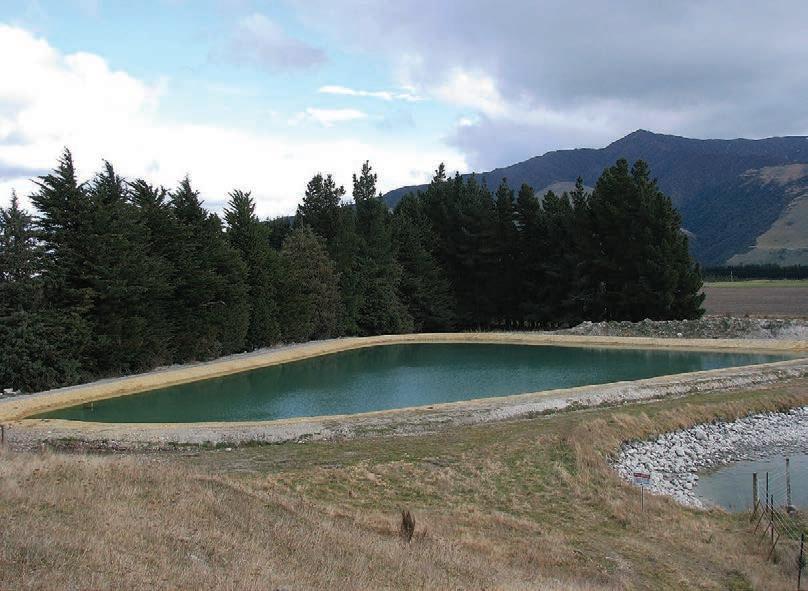
responsible, Hon. Chris Bishop, has written to stakeholders informing them he is looking to urgently address how Te Mana o Te Wai is being applied to individual resource consents.
Amendments to the Resource Management Act are expected in the next few months, which will be welcome relief for farmers who currently have projects that have ground to a halt due to the current interpretation of the rules.
As part of the Minister’s consultation, I have also taken the opportunity to highlight the growing concern in rural communities about the way co-governance of water is becoming a divisive issue.
Under the new regulations, regional councils must actively involve tangata whenua in freshwater management, including decision-making processes. What this means in practice is still being worked through, but one aspect that seems to be emerging is the increased use of cultural impact assessments.
Where farmers must pay professional service fees for cultural impacts, the impression of a ‘pay-forplay’ regime starts to emerge – and that doesn’t sit right with me.
Situations like what has recently played out in Waitaki, with electricity generators Meridian and Genesis reportedly paying $180m to ‘smooth the consent path’ for the reconsenting of the Waitaki hydro scheme, only add to this perception.
The $180m included payments to the Department of Conservation and three South Island hapū to redress past damage in exchange for these parties supporting the consenting process.
I think putting tangata whenua in the position of being asked to be ones who say ‘no’ to consent applications risks creating further
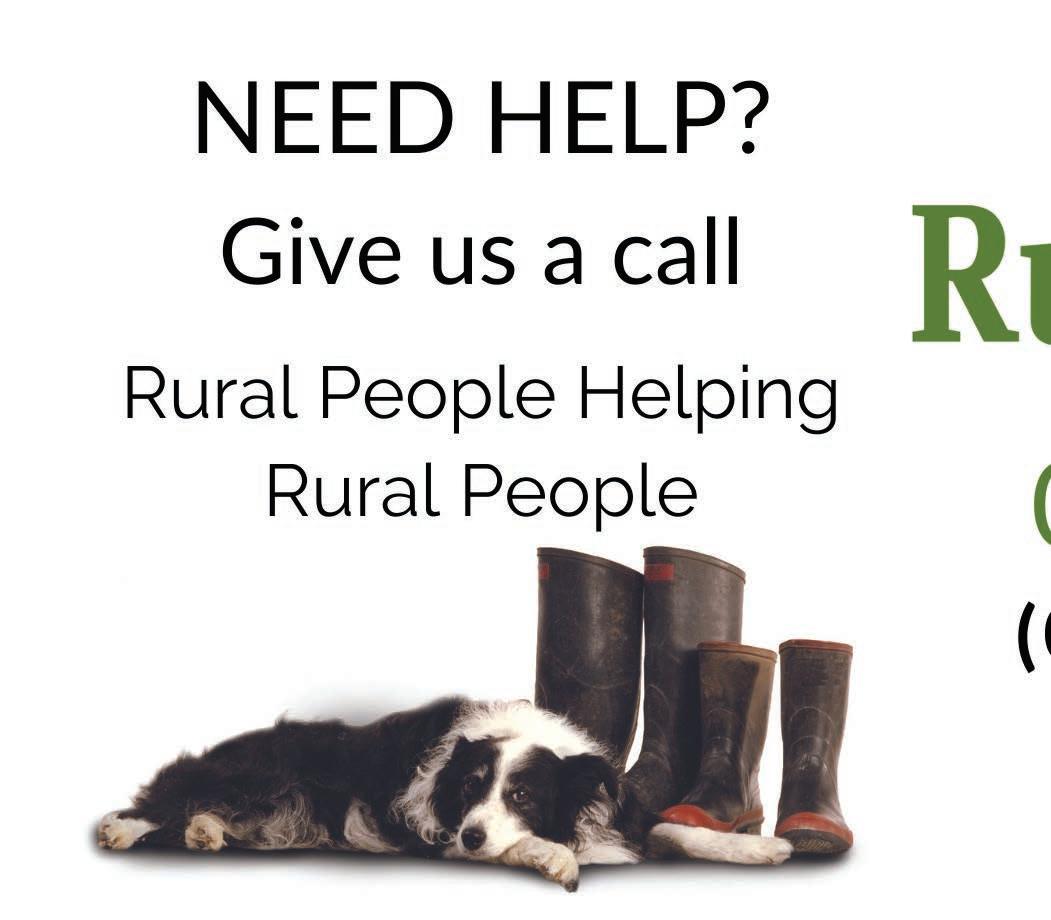
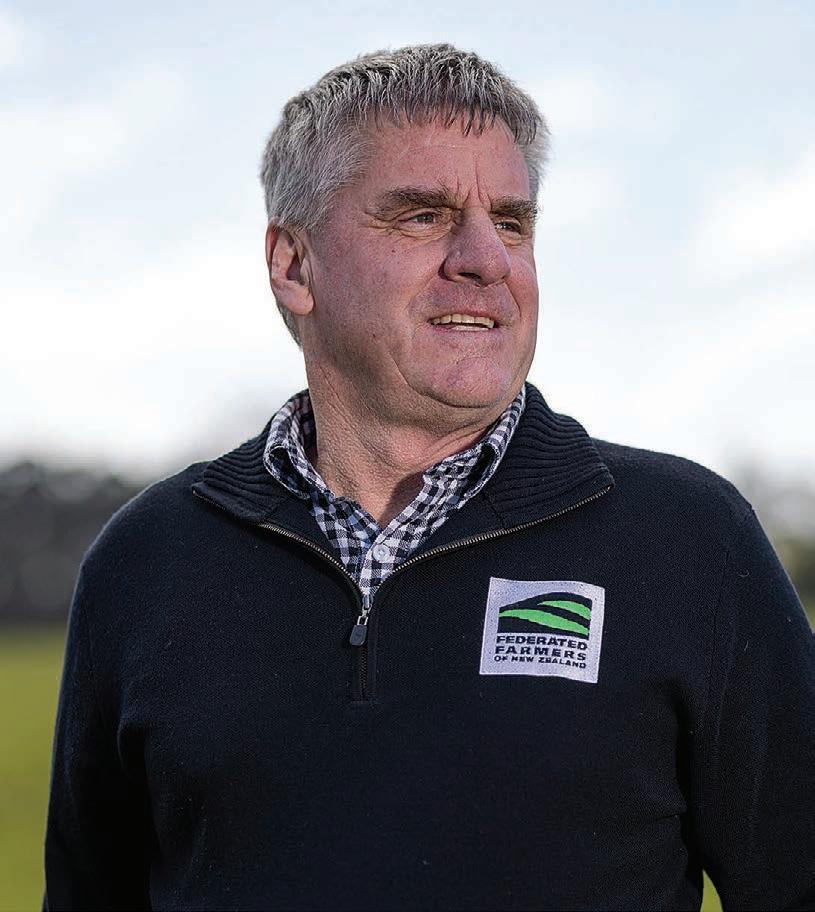
STOPGAP: A proposed ‘fast-track’ consenting regime will help but should only be used as a temporary solution until more meaningful RMA reform takes place, Federated Farmers vice president Colin Hurst says.
division in rural communities. As part of this consultation, Federated Farmers have also o ered our feedback on a proposed ‘fasttrack’ consenting regime.
Federated Farmers opposed these new rules from the outset and have never stopped engaging with the Government on behalf of our members for changes that would increase certainty, reduce cost, and actually improve water quality.
Colin Hurst Federated Farmers vice president
It’s a telling sign that our resource management system has become so broken that a fast-track regime is needed to enable any investment in
new infrastructure like water storage, resilience projects to avoid oods, and transport infrastructure – but that’s exactly where we’ve found ourselves.
While Federated Farmers have expressed our support for a temporary fast-track regime, we are cautioning that it should only be seen as a temporary solution.
Unfortunately, this kind of process will only ever bene t the big end of town, while mum and dad farmers, businesses, or homeowners will be stuck in the currently broken system. We support the fast-track provisions at this stage because farmers, rural communities and businesses will bene t from the desperately needed infrastructure it will enable. But we are clear that this should only be a temporary stopgap measure to grease the wheels of progress while more meaningful and permanent RMA reform is worked on.

21 fedfarm.org.nz – February 26, 2024 Federated Farmers 21
Colin Hurst Federated Farmers vice president
SIGNS: Colin Hurst says it’s a telling sign that our resource management system has become so broken that a fast-track regime is needed to enable investment in new infrastructure like water storage.
Leedom Gibbs: Life’s better with gumboots
It’s not her high school ambition for a ‘high heels and business suits’ career in the city but Leedom Gibbs has found her niche as a farmer.
And the Federated Farmers Taranaki president says her involvement with the federation has proven to be a “massive part” of her strategy for good mental health.
“Being involved in something bigger than oneself is so good for the soul,” she said.
Leedom is the middle daughter of three, with parents Grant and Dinny kicking off their family in a rush –“there were three of us under three years old”.
The Gibbs family moved to their current farm in Manaia, south Taranaki, when Leedom was four.
She did her share of milking cows as a teenager but never had aspirations to farm.
Leedom’s ambition back then was to “be someone important in law or finance in a big company, wearing
high-heeled shoes and lovely suits and hanging out in a city CBD”.
At Canterbury University she initially pursued a degree in accounting and law.
“I lasted about one day in accounting and a year in law. It didn’t suit me. I didn’t know what I wanted to do but it wasn’t that.”
She switched to history and found it fascinating, graduating with a BA Honours even though mental health issues that had dogged her since she was 13 flared up again.
Nevertheless, she embarked on her masters, and had done all the research she needed for her thesis exploring the first 25 years of Egmont National Park. But her mental health at the time was too fragile and she was unable to get together the 40,000 words.
“It’s funny how life works out. It was in Feds that I really came to appreciate how policy and government decisions impact our world, despite the fact I’d pursued a
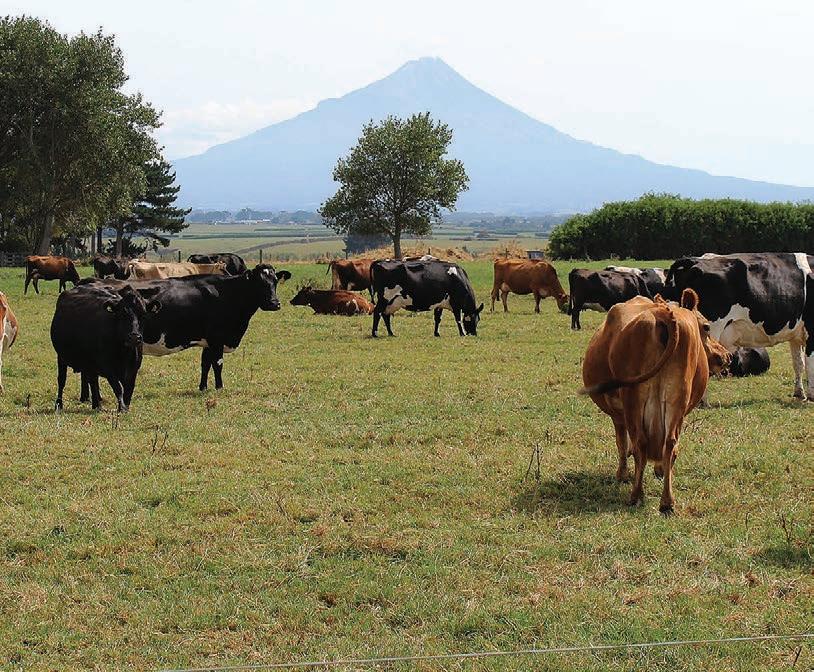
master’s thesis on the establishment of a national park that required a piece of government legislation to create.
“I’ve found that I have a practical kind of brain; on a purely academic level I just don’t really understand how the world works.”
Leedom worked in restaurants and took part in repertory theatre as she learned to deal with depression “and find a way to prosper”.
She had a daughter, Venus, counts herself as lucky to be able to be a stay-at-home mum, and got involved with Play Centre, discovering she really enjoyed the business and committee side of that movement.
She was 35 when her parents offered her a role on the family trust’s two farms, one run with a contract milker, the other with 50/50 sharemilkers.
“I’m running it like the farm owner for my parents. It’s not a massive enterprise but it’s complicated enough that someone needs to run the accounts, look after those relationships, and so on.
Being involved in something bigger than oneself is so good for the soul.

their riparian planting, effluent management and what judges described as “an impressive business built on an extremely tidy and functional property”, Leedom was invited to the Taranaki Federated Farmers AGM.
“In a way, I’m realising those high school ambitions. I’m definitely doing something important.
“I don’t have to make the on-farm decisions, but I now know what decisions need to be made, and make sure they can be: when to buy in feed, understanding what needs to happen if it doesn’t rain, and what it means if it rains too much.”
When Leedom and her parents won the Ballance Farm Environment Award for Taranaki in 2018 for
Before she knew it, she was roped in to join the local executive. The year after that was her first year of four as dairy chair and, when national board member Mark Hooper stood down as provincial president last December, Leedom –then vice president – stepped up.
Leedom says she discovered in Federated Farmers opportunities to develop professionally, to get involved in the sector and community life at a higher level, and the chance to have fun and rub shoulders with some great people.
“Farms are big businesses and
they’re run by interesting and smart people, doing all kinds of things in different ways.
“Being part of Federated Farmers is a massive part of my mental health strategy.
“Getting involved, even if it’s just paying the sub and being included in the updates on the work the federation does, helps you to get that bigger-picture perspective.”
Like other provinces, Taranaki has regulation challenges ahead – in particular, working with the local council to update, and stay practical, with a freshwater plan that’s 22 years old.
As president, Leedom has set herself priorities around stepping up engagement with members and strategic partners so they too can maximise their benefit from Federated Farmers.

22 February 26, 2024 – fedfarm.org.nz Federated Farmers 22
IN CHARGE: Federated Farmers Taranaki president Leedom Gibbs, who stepped into the role late last year.
CHANGES: Leedom Gibbs says updating freshwater regulations are a priority for Federated Farmers in Taranaki.
Leedom Gibbs Federated Farmers Taranaki president



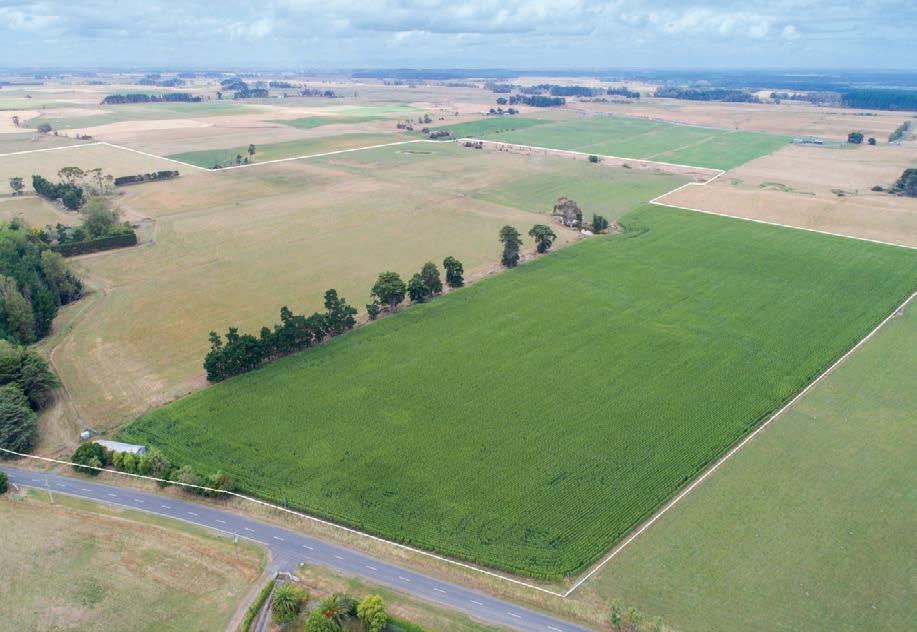
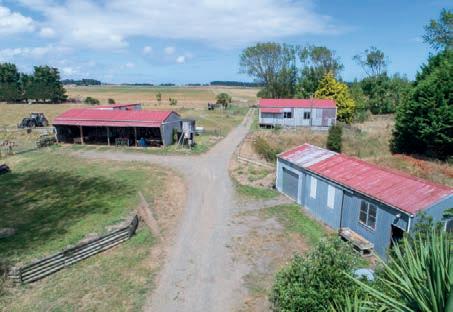
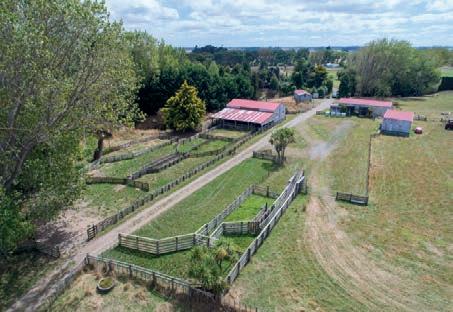
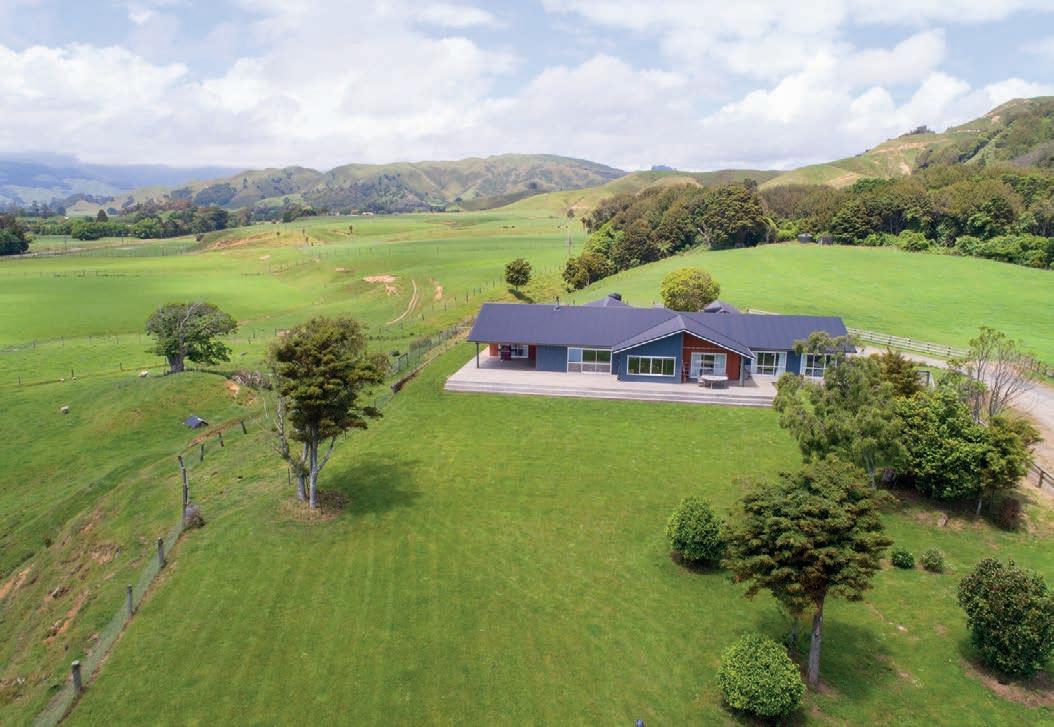
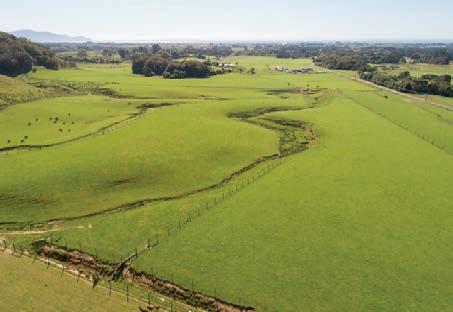

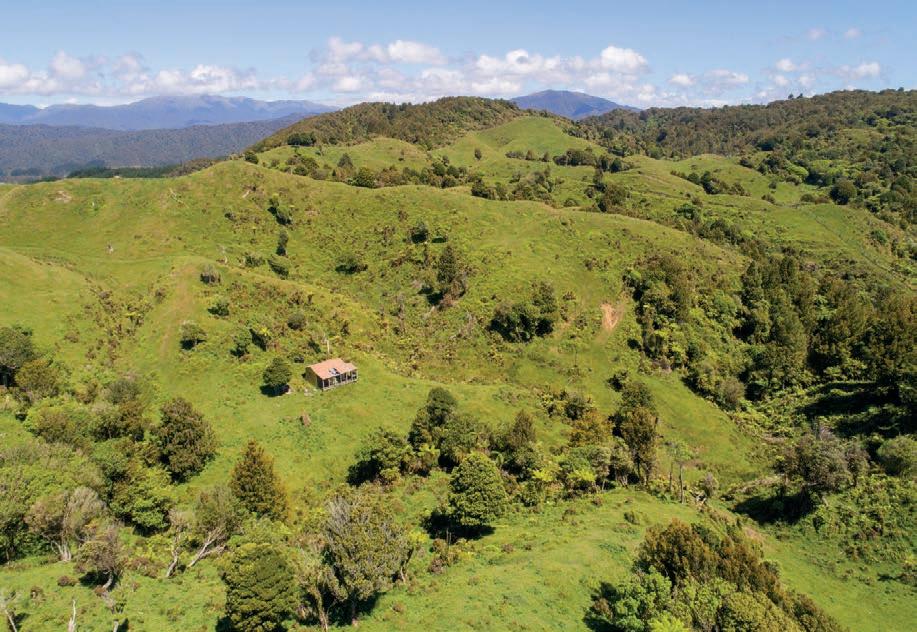
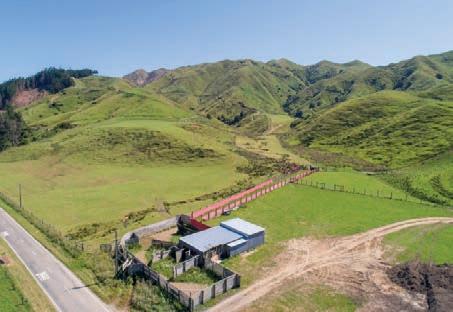
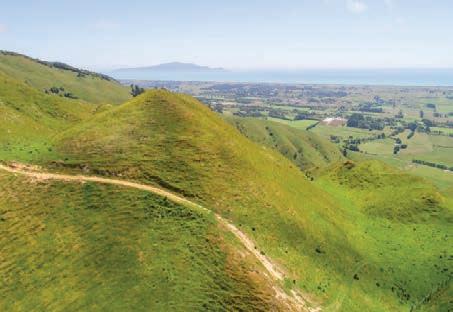
23 Real Estate
Matamata 1578 Old Te Aroha Road
Open Day


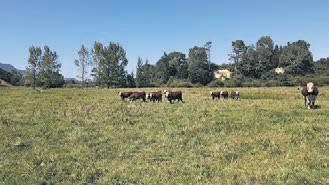
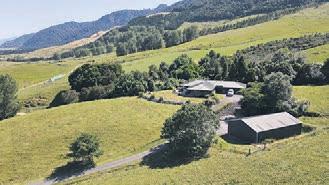
Your all-inclusive farming destination
A well maintained property spanning approx. 135 ha in the Waikato district is a hidden treasure ready to be unveiled. Merely a 15 minute journey from Matamata, this farm serves as a sanctuary for R2 dairy heifers and beef livestock during the winter season. Contour varies from flat lands to gentle medium slopes, with a somewhat steeper gradient towards the rear. The farm is split into approx. 40 paddocks most of which have excellent track access and water troughs. Facilities include two cattle yards, a woolshed, a six bay calf shed, and two workshops. Adding to its charm is a luxurious four bedroom home, clad in schist and cedar, which offers a breathtaking view of the district.

Steve Mathis
M 027 481 9060
Oamaru 3747 Hampden-Palmerston Road
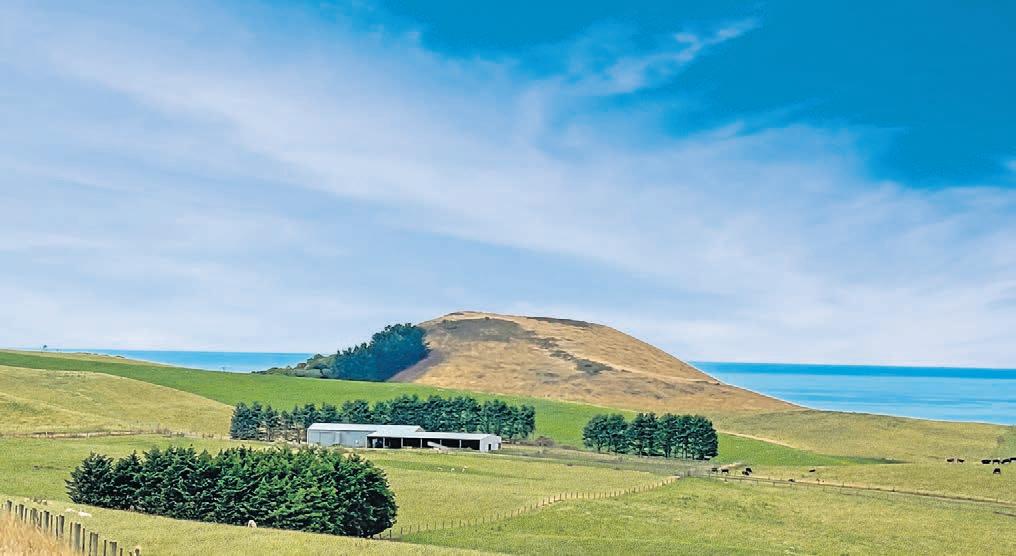
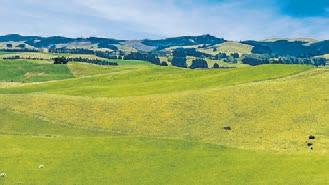
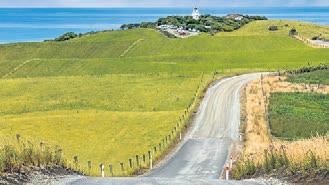
Lighthouse Hills farm for lease by tender
• Blocks of this scope and location are seldom available to lease
• 409 ha property with 6.5 points of water
• Three bedroom home, cottage, cattle yards and a share of a three bay lockable American Barn are included in the lease
• Easy rolling contour with some steeper faces the property is subdivided into 30 paddocks with a portion of native bush
• Lease on a 3 year plus 2 further rights of renewal 3 plus 3
• Located in Moeraki approx. 41 km south of Oamaru and 77 km north of Dunedin
Ngongotaha Valley 53 Burnsdale Drive
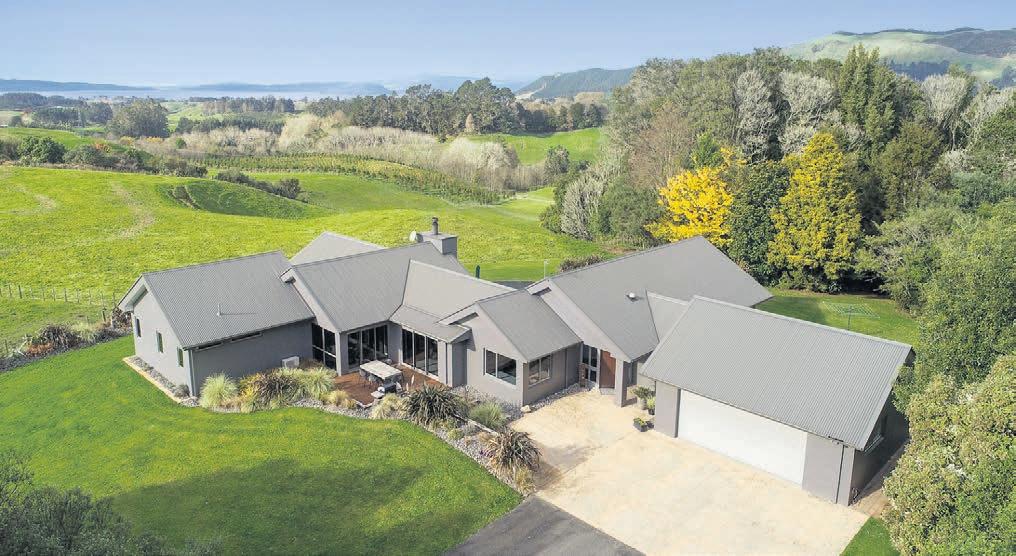

Sold the farm???

If you are now on the lookout for a property with the following features? Privacy, views, scale, native bush, convenient location, abundant shedding, executive style living? HERE IT IS!
• Magnificent residence featuring panoramic views
• Extensive range of garaging/workshop space plus sheep and cattle handling facilities
• 25.11 ha of flat to gently undulating land that is well fenced and watered
• Extremely private and located in an established lifestyle area

4 3 2 2


Phil
Badger M 027 357 5704



Lease
Tender closes 4.00pm, Thu 14th Mar, 2024 (unless sold prior), LEASE View By appointment Web pb.co.nz/OMR178275 Property Brokers Ltd Licensed REAA 2008 | pb.co.nz
Dalziel M 027 439 5823
Merv
For Sale $3,650,000 + GST (if any) View Tue 27 Feb 1.00 - 2.00pm Tue 5 Mar 1.00 - 2.00pm Web pb.co.nz/TXR178695 Property Brokers Ltd Licensed REAA 2008 | pb.co.nz
Open Home
Located in an upmarket lifestyle location that ensures a high level of desirability and value retention. Auction 11.00am, Thu 21st Mar, 2024, Papamoa Surf Club – 561 Papamoa Beach Road, Papamoa View Sun 3 Mar 3.30 - 4.00pm Sun 10 Mar 3.30 - 4.00pm Web pb.co.nz/WTL176809 Property Brokers Ltd Licensed REAA 2008 | pb.co.nz
Link Realty Ltd. All information contained herein is gathered rom sources we consider to be reliable. However, we cannot guarantee or give any waranty about the information provided. Interested parties must solely rely on their own enquiries. ljhooker.co.nz/KHPHR1 Lifestyle, location and return on investment are all important factors when investing in the rural sector. This free-range chicken farm has all of those. Central Waikato location, a relaxed farming lifestyle rearing (SPCA approved) free range meat chickens, generating a consistent ROI. Comprising of 2 rearing sheds, with a total floor area of 2,880 m2. Other buildings include a 3 bay lockable workshop with concrete floor and power, a neat and tidy 3 bedroom home plus office, sleepout, double garage and carport. Compliance consents are all in place together with a secure long-term Growing Agreement contracted to Inghams Enterprises. A going concern sale inclusive of all land and buildings, consents, and machinery. LJ Hooker Matamata Link Realty Ltd. 4.23 ha Free Range Meat Chicken Farm Hamilton Licensed Agent REA 2008 Deadline Sale Closes Wed 13th March 4pm (unless sold prior) View By Appointment Only Agent Peter Begovich 027 476 5787 Terry Court 021 754 233 DEADLINE SALE 24 FARMERS WEEKLY – farmersweekly.co.nz/realestate – February 26, 2024 Real Estate 24
Phillip Berry M 027 478 8892
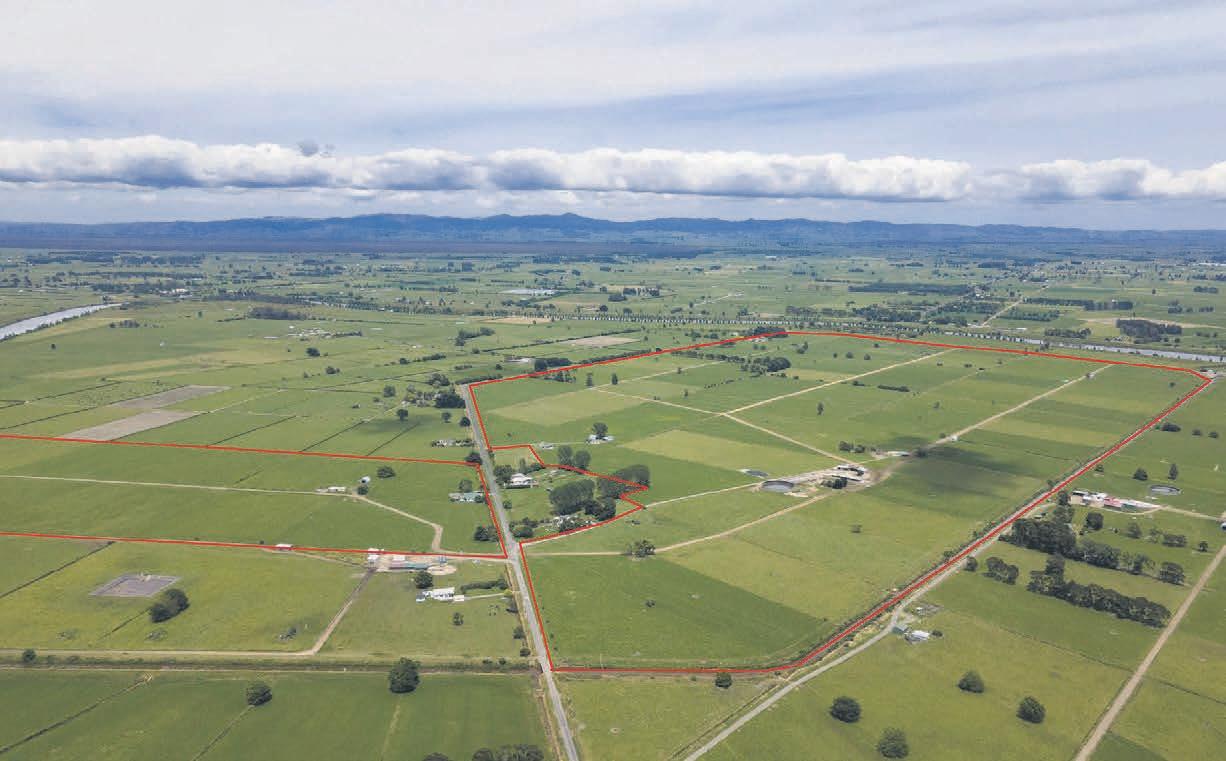
Boundary
Hikutaia 306 Ferry Road
Highly profitable dairy
Rare opportunity to secure such a strategic farming investment in a sought-after location. This tidy 177 hectares (more or less) property contains 119-paddocks that are spilt across four titles and both sides of Ferry Road, with a 21.8 hectares (more or less) Environment Waikato lease available. The current vendors have adopted an effective milking operation with the last seasons production being 193,465 kgMS supplying Fonterra. The tidy 44 ASHB is complete with a standoff pad and rubber matting. The race system has been well maintained ensuring all weather access. The soil type is a mix of peat, clay and silt loam. Effluent is stored in a 3,000,000L clip tank before being pumped out to paddocks. Location is a real plus with this property situated 12.4 kilometers from Paeroa. Viable business investment, great lifestyle location for your family, contact us today! bayleys.co.nz/2315185


177 ha
Asking Price $7,250,000 + GST (if any)
View 11am-12pm Wed 28 Feb or by appointment
Karl Davis 0508 83 83 83 karl.davis@bayleys.co.nz
Lee Carter 027 696 5781 lee.carter@bayleys.co.nz


Huntly 458 Rotowaro Road
126ha

Seriously Affordable Dairy Unit
126ha,
My

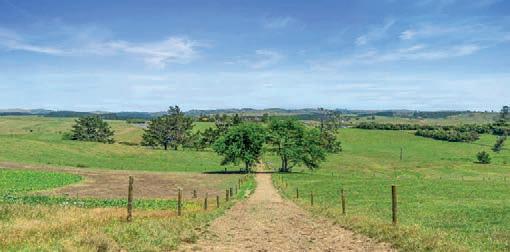

Kevin
GREY VALLEY WESTLAND
CARTERS RD AHAURA – DAIRY UNIT
135 hectares. 3 bedroom cottage, cowshed and farm buildings. Excellent soils, centrally raced, 34 paddocks.
MATAI ROAD – DAIRY UNIT
88ha Freehold & 110ha lease. Milking 310 cows, 36-aside cow shed. Large 4 bedroom home. Approx 153ha effective, fertile river silts. Cows available.
AHAURA-KOPARA ROAD – LIFESTYLE
28.9 hectares (STS). 3 bedroom wooden home, Carport, single garage and lean-to. Subdivided into 8 paddocks with central laneway.
WATTERSONS ROAD – AHAURA LIFESTYLE
24.9 hectares (STS). 3 bedroom wooden home, carport and extra room. Three bay hayshed. Subdivided into 8 paddocks central laneways.
Possession Date All Properties 31st May 2024
For Sale By Tender
Closing 20th March 2024 (unless sold prior)
Greg Daly Real Estate Limited
. Contact: Greg 027 478 3594 Mitch 027 287 2467 Mike 027 959 1267
TENDER
ROSSBURN FARM LIMITED
REA 2008 LK0117911©
Auction Wednesday 20th March at 11:00am on site (unless sold prior) View Thursday 22, 29 Feb, 7, 14 March at 11:00am - 12:00pm www.harcourts.co.nz/ML8467
Kevin Deane Real Estate
Deane M 021 970 902
your opportunity to purchase your first farm - with scale.
Here’s
a top of the line 40 bale rotary shed and so much more.
ready
go - grab your Banker and check it out.
retiring owners are
to
Licensed Agent REAA 2008
lines
are indicative only
SUCCESS REALTY LIMITED, BAYLEYS, LICENSED UNDER
REA ACT 2008
THE
25 FARMERS WEEKLY – farmersweekly.co.nz/realestate – February 26, 2024 Real Estate 25
RURAL | LIFESTYLE | RESIDENTIAL
OPEN DAY

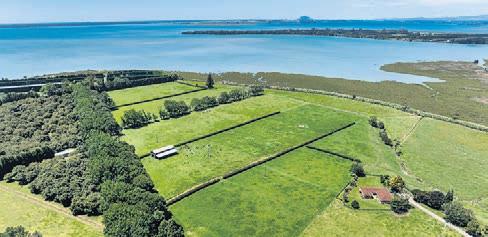

KATIKATI, BAY OF PLENTY Sharp Road
Allure of the Ocean - Five Options - 58ha
Being sold as a combination of four waterfront lots each with Riparian rights (in five titles). 24ha approx of ideal low altitude early start hort development land. Balance is high fertility, drained, ideal hay/maize country or future eco enhancement. Exclusive access to a Council reserve, situated at the end of Sharp Road Peninsula in the Tauranga Harbour, along with a small enclave of amazing lifestyle blocks. Two solid farmhouses, one is three, the other five beds, two barns and an old cowshed.
OPEN DAY: Meet at end of Sharp Rd, old cowshed, at 10.00am, tour departs 10.05am.
pggwre.co.nz/TAR39048
PGG
5 1 1 TENDER
Plus GST (if any) (Unless Sold Prior) Closes 3.00pm, Thursday 28 March
VIEW 10.00am, Thurs 29 Feb 10.00am, Wed 6 Mar Tour Departs 10.05
Andrew Fowler
M 027 275 2244
E afowler@pggwrightson.co.nz

TENDER
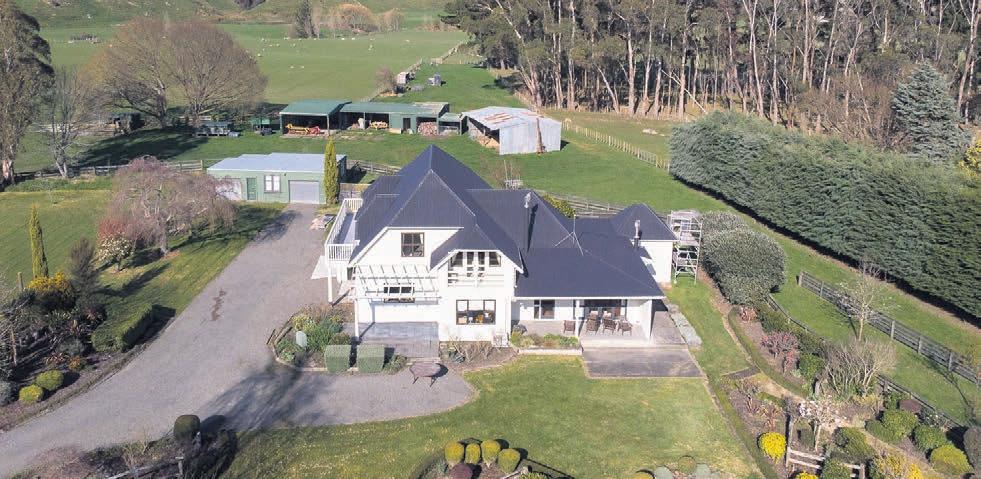
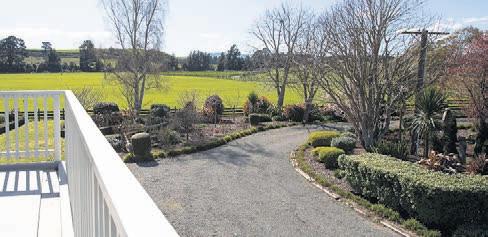
DANNEVIRKE, TARARUA
Top Class Home and Land Package
Top of the range 44.18ha finishing/lifestyle property with river flats that is suitable for running sheep and beef, dairy support or even supplement/cropping. Flat fertile contour with pasture renovation program and extensive drainage work. Two stand woolshed, implement/hay sheds, auxiliary shedding plus stock handling facilities. Complementing the farming operation is a majestic two storey homestead which has had extensive renovations to the highest standards, boasting four bedrooms, open plan kitchen/family room, formal dining, formal lounge, luxurious ensuite, renovated bathroom and more.
pggwre.co.nz/DAN39166
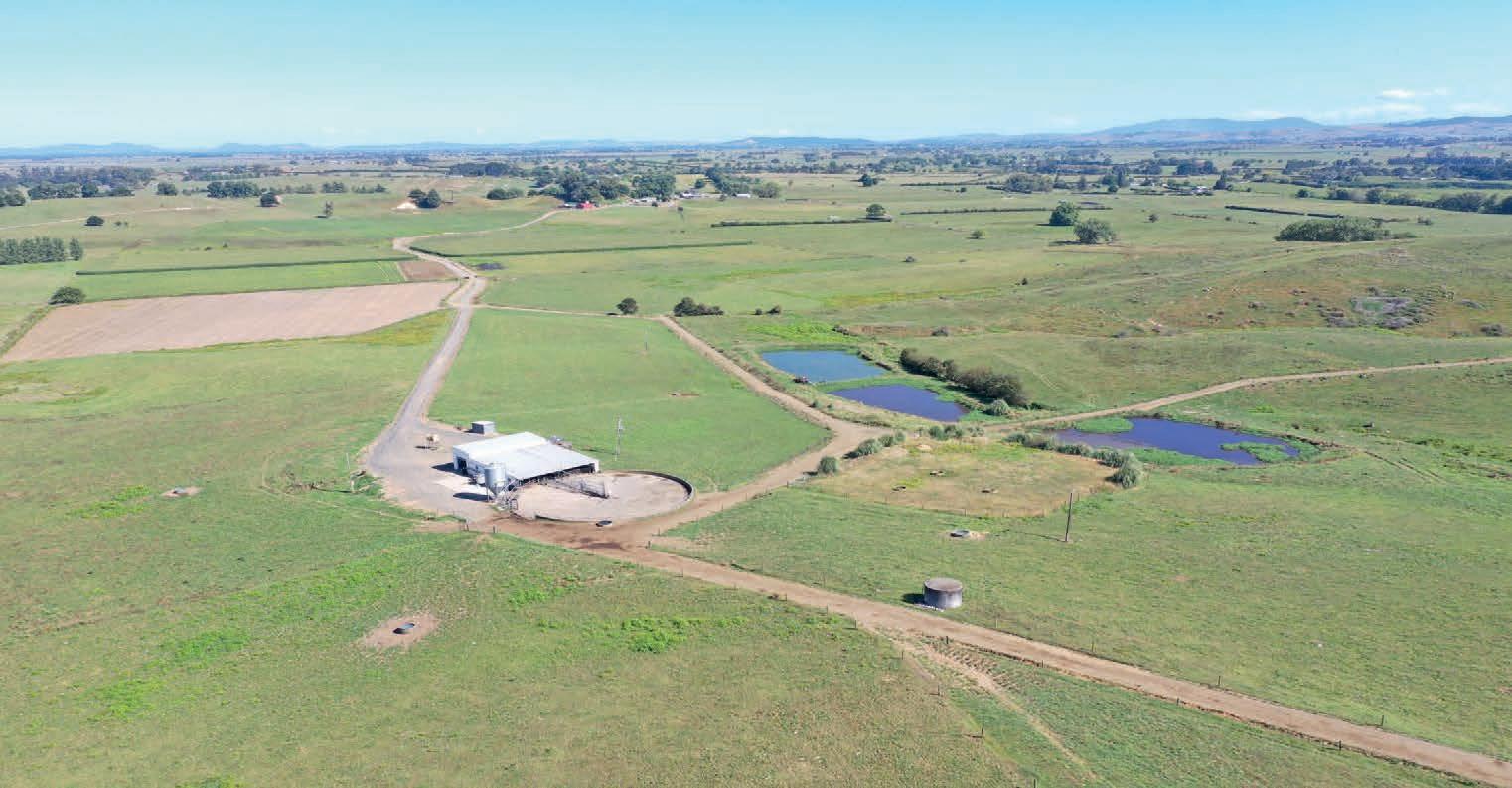
•
• 123.84 hectares – 1 title
• contour varies from flats to easy rolling with some areas of steeper sidlings
• variable soil types include a mix of silt loam & clay loam
• v.g. farm layout, well subdivided and raced, with the dairy shed in a central location
• water supply is based on a deepwell bore, alkathene pipelines & strategically located manacon tanks; additional secondary bore at dairy shed

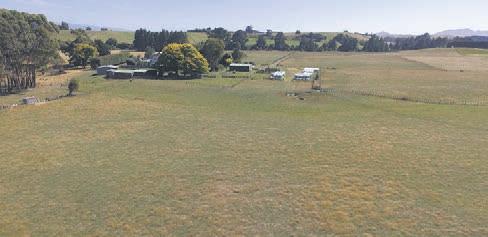
4 2 1
TENDER
Plus GST (if any) Closes 2.00pm, Thursday 21 March
VIEW By Appointment Only
Tuma Mullins
M 021 0857 1913
E tuma.mullins@pggwrightson.co.nz
Geoff Waterworth
M 027 437 8063
E geoff.waterworth@pggwrightson.co.nz
Helping



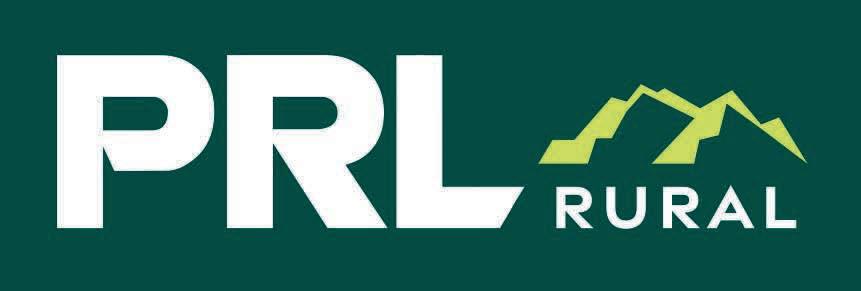
Thurs, 29 February 11.00am 1.00pm
• effluent disposal system includes drop tested ponds, travelling irrigator & canon
• 290 cows calved, 280 cows currently being milked; 3 year average 101,075 kgs milksolids
• 36 bail rotary dairy shed; auto cup removers; in shed feed system
• amenities include implement/calf shedding, airstrip with covered fertilizer shed & bin
• comfortable 5 brm dwelling with garaging
• great location, handy to town, with a good range of options for schooling Ph
AUCTION OPEN DAY PRL Enterprises Ltd t/a PRL Rural Licensed REAA2008 MREINZ
373 113 bjp@prl308.co.nz
021
Morrinsville
184B Kuranui Road, R D 2,
Brian Peacocke
373 113
search # R1427
by Auction: Thurs, 14 March 2024 1.00pm
021
TradeMe
Sale
Open Day:
A good, consistent performing dairy unit, well located in the Motumaoho district, 5 kms from Morrinsville, is now available afte r some years of family ownership. Morrinsville Dairy
Real Estate Limited, licensed under REAA 2008
Wrightson
grow the country
26 FARMERS WEEKLY – farmersweekly.co.nz/realestate – February 26, 2024 Real Estate 26

































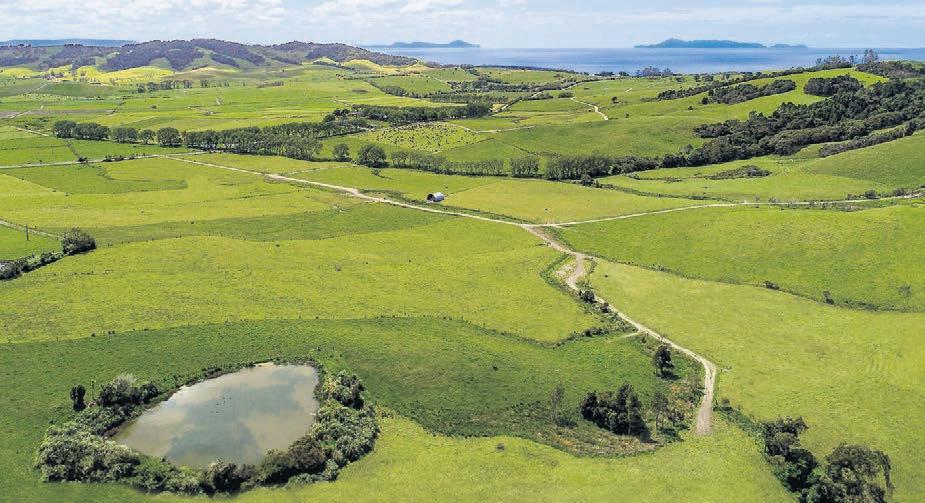



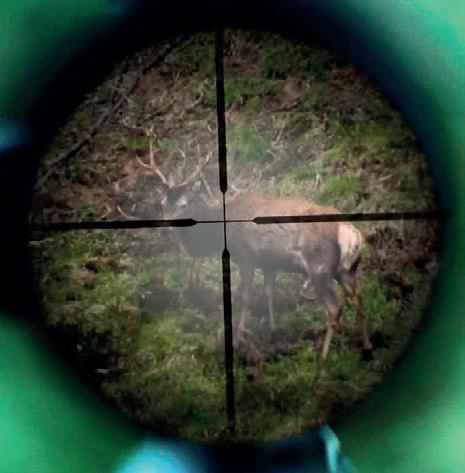

NEW LISTING Wellsford 1040 Pakiri Block Road, Tomarata 114 ha Tender (unless sold prior) Closing 1pm, Fri 22 Mar 2024 41 Queen Street, Warkworth View by appointment John Barnett 021 790 393 john.barnett@bayleys.co.nz MACKYS REAL ESTATE LTD, BAYLEYS, LICENSED UNDER THE REA ACT 2008 Tomarata dairy & lifestyle! Rarely do properties of such high calibre present themselves in this prime location. Here, at the intersection of location and opportunity, is this 114 hectare highly productive dairy farm. Pause and absorb the panoramic views across both the sea and rural vistas to the Hen & Chicken Islands and beyond. Embrace coastal living with access to popular surf and swimming beaches, worldrenowned golf courses, Mangawhai, and an easy commute to Auckland. The farm has a full set of infrastructure in place, and ready to go. Plus, lease the neighbouring 60-hectare block, and boost your production further. Begin everyday with views and a world of possibilities bayleys.co.nz/1203881 • Feral animal control • Ecosystem restoration • Weed spraying • Release spraying • Native planting • Riparian fencing Wellington-Wairarapa e. sean@betternature.nz m. 027 747 4285 Get in touch for a free quote www.betternature.nz Hawkes Bay e. rob@betternature.nz m. 027 576 0776 BN quarter page ad.indd 1 7/02/2024 4:58:10 pm handypiece ■ Ideal for shearing sheep, alpacas, goats and cow tails ■ Variable speed from 2600-3500rpm ■ Latest brushless motor technology means minimal heat build up ■ 1400gms means 100-200gms lighter than standard handpiece ■ At 2800rpm the 12v lithium battery will crutch 300-400 sheep or trim up to 400-500 cows tails ■ Tough alloy switch box with auto reset fuse for overload or lockup – clips to belt View in action go to www.handypiece.co.nz Email: dave@handypiece.co.nz Free call 0800 474 327 powerfulWorldsmost variable speedclipperishere speedpowerfulvariable clipperishere FIELD DAYS SPECIAL Receive a 2 x battery combination See us at CD Field Days Agbits site G15a LK0117404© Under Woolshed/Covered Yards Cleaning Specialists www.underthewoolshed.kiwi SCOTTY’S CONTRACTORS TAKING FORWARD BOOKINGS –CONTACT US NOW ✁ Contact Scotty to discuss all that needs to be done Ph 0800 27 26 88 • Mobile 027 26 26 27 2 • scottnewman101@gmail.com ✁ LK0117930© New Zealand’s Number 1 service provider since 2004 Our services include digging out and remetalling cattle yards and calf sheds. Drainage, fencing, silt removal and flood damage repair. 27 MPlace FARMERS WEEKLY – farmersweekly.co.nz – February 26, 2024 Marketplace 27
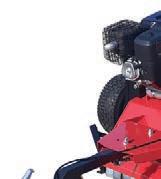







• 580ha milking platform, 2000+ cows
• Split calving, System 4 – 5

LOOKING FOR DUCKPOND
STOCK FEED
2023 QUALITY CLOVER balage. 20 rounds, $85+GST.
Located Carterton area. Phone 027 507 5048.



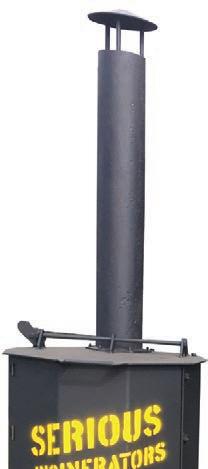


QUALITY, $75 per bale plus GST. Unit loads available for hay and balage. Phone 021 455 787.
HORTICULTURE
NZ KELP. FRESH, wild ocean harvested giant kelp. The world’s richest source of natural iodine. Dried and milled for use in agriculture and horticulture. Growth promotant / stock health food. As seen on Country Calendar. Orders to: 03 322 6115 or info@nzkelp.co.nz
HUNTING WANTED
EXPERIENCED HUNTERS IN Canterbury looking for large numbers of paradise ducks, pigs, deer goats etc. Phone 027 636 3710.
LIVESTOCK FOR SALE
DUCK HUNTERS LOOKING for a pond to shoot on in the Foxton-Levin area due to farms changing hands. Phone 027 442 9179.
PUMPS
HIGH PRESSURE WATER PUMPS, suitable on high headlifts. Low energy usage for single/3-phase motors, waterwheel and turbine drives. Low maintenance costs and easy to service. Enquiries phone 04 526 4415, email sales@hydra-cell.co.nz
RAMS FOR SALE
WILTSHIRES-ARVIDSON.
Self shearing sheep. No1 for Facial Eczema. David 027 2771 556.
GOOD TERMINAL SIRES
Southdown/ Su olk X & Southdown rams for heavy lambs. Suit ewes or hogget or mating $300 - $500. Phone 021 133 7533.
BOOK AN AD. For only
$3.30 + gst per word you can book a word only ad in Farmers Weekly Classi eds section. Phone 0800 85 25 80 to book in or email wordads@agrihq.co.nz
TRAILER FOR SALE
8 TONNE GILTRAP Trailer and silage crate also available. $18,000 plus GST. Phone 07 322 2337.
WANTED TO BUY
SAWN SHED TIMBER including Black Maire. Matai, Totara and Rimu etc. Also buying salvaged native logs. Phone Richard Uren. NZ Native Timber Supplies. Phone 027 688 2954.








Not many can make the claim that they’re one of NZ’s top producing farms, and leading an operation of the scale and complexity of Ashton is not for the faint of heart!
• 60-bail rotary shed with pro trac, automatic drafting
• 1000 cow feed pad
• Centre pivot irrigation & roto rainer irrigation system
• Additional infrastructure investment budgeted for the coming season
• Full time team of 11, plus additional relief support BEL Group has farmed in the Central Hawke’s Bay since 1994 (29 years). Over that time the business has built a reputation as an employer of choice, embracing diversity and building a culture that supports careers, families and good business.
In the dairy season beginning 1 June 2024, and as a result of strategic decisions around the leadership on our farms as well as some internal promotions, there are a number of opportunities opening up across the group. At BEL Group leadership skills are prized in equal proportion to your technical farming skills, and we support our managers with on-farm technical expertise and the opportunity to grow and develop into true business leaders.
We’re excited to be looking for a dynamic leadership team for Ashton, the largest and highest producing of all the BEL Group farms. With a stable team already in place, we’re now looking for:
1. An experienced and proven Farm Manager who will take the opportunity to put their stamp on a well-established and complex feed system to maximise production; and
2. A 2IC who will bring their existing leadership skills and experience to support the manager and the team to achieve consistently high results
If you’re looking for your next management role, are keen to live and work in sunny Hawke’s Bay and are ready to work in a supported environment where your skills will be valued and there is opportunity every day to learn, optimise and tweak performance then you can’t afford not to consider BEL Group. With a corporate structure that has worked hard to maintain a family feel culture that recognises it’s importance to a thriving local community, this is NZ farming at its best.

Apply today at www.no8hr.co.nz and make sure you include details about which of these opportunities interests you, and most importantly, why!
THE GULLIES Wiltshire & Low Input Rams. SIL; FE and worm tolerance. Lower your shearing costs. Look after your bottom line. Richard Morrison, 021 626 513, richard@thegullies.nz
200 WILTSHIRE hoggets $350, 400 lambs $275, Rams available. Phone Judah Martin 021 086 09048 Hawkes Bay. See pics at waimoana-wiltshires.com
WILTSHIRE EWES, 4-tooth 230x Capital stock. Benneydale Wiltshires. King Country. 13yrs established, clean shedding. $190+gst Ph Joe Hodge 027 2806 747.
good for dog tucker. Lease ending, Ph Nic 027 244 6997.

GO THE MOA! To find out more visit www.mowermaster.co Phone 0800 422277 or 028 461 5112 Email: mowermasterltd@gmail.com Towable Flail Mower 14.5HP. Vanguard Briggs & Stratton Motor. Electric start. 1.2m cut 3 year Briggs and Stratton Commercial Warranty. 2 year Mower Master Warranty LK0117897© $4900 GST INCLUSIVE MOWER MASTER TOWABLE MOWERS Assembled by Kiwis for Kiwi conditions – built to last. Heavy duty, long lasting incinerators Three sizes available Phone 021 047 9299 irontreeproducts.co.nz LK0117142© 28 FARMERS WEEKLY – farmersweekly.co.nz – February 26, 2024 Marketplace 28 DOLOMITE For a delivered price call .... NZ’s finest BioGro certified Mg fertiliser 0800 436 566 ATTENTION FARMERS ZON BIRDSCARER electro-tek@xtra.co.nz Phone: 06 357 2454 ELECTRO-TEK ENGINEERING FLY OR LICE problem? Electrodip – the magic eye sheepjetter since 1989 with unique self adjusting sides. Incredible chemical and time savings with proven e ectiveness. Phone 07 573 8512 www.electrodip.com ANIMAL HANDLING FARM MAPPING GOATS WANTED MEASURE YOUR FARM’S e ective area with a practical and cost-e ective map. Visit farmmapping.co.nz for a quote. GOATS WANTED. All weights. All breeds. Prompt service. Payment on pick up. My on farm prices will not be beaten. Phone David Hutchings 07 895 8845 or 0274 519 249. Feral goats mustered on a 50/50 share basis. HAY/BALAGE FOR SALE HAY SQUARE AT $75, Rounds at $85 plus GST. Wheat and barley straw available now. BALAGE EXCELLENT
WAIMAI ROMNEY RAMS for sale. 4 and 5-Yr old. Too
www.no8hr.co.nz | ph: 07-870-4901
LEADERSHIP OPPORTUNITIES ON ONE OF NZ’S TOP PRODUCING FARMS LK0118038© Advertise with us Reach every farmer in New Zealand every week Call Julie 027 705 7181 Blanket your baby in love with a large (120cm x 95cm) NZ Merino heirloom blanket www.naturesgiftforbaby.com Peony Pink Blue Sky Undyed Natural Chocolate Kisses Free deliverywithinNZ Gentle on baby. Gentle on the environment. $99 Advertise with us Call 0800 85 25 80 wordads@agrihq.co.nz
BURROWS GENETICS
STUD DISPERSAL SALE
Coalgate Saleyards
Tuesday 5th March - 2.30pm AM & JJM Burrows, Rangiora
> 94 Southdown Mixed Age Ewes
> 36 Southdown Ewe Lambs
> 1 Southdown Ram
Further enquiries: Callum Dunnett 027 462 0126
hazlett.nz
So
You
Liz Hampton, Cave - Online Bidr Auction
Thursday 14th March - 7pm
> 5 Pure Bred 2th Rams
> 5 Pure Bred Ram Lambs
> 45 F1 Kerry Hills x Perendale Ewe Lambs
Videos and catalogue will be available to view on Bidr®.
To register for Bidr® please go to www.bidr.co.nz. If you would like assistance registering please call the bidr team on 0800 TO BIDR (0800 86 2437).
Further enquiries: Callum Dunnett (Hazlett) 027 462 0126
Wayne Andrews (Hazlett) 027 484 8232
Liz Hampton (Vendor) 021 082 6946


FEILDING SHEEP SALE
FRIDAY 1ST MARCH
Waitio Farm, Pahiatua
1100 Capital Stock
4th & 6th Romney Ewes
Scanned 178% 2023
Wairere Bred
Toxo and Campi
Very smart Ewes
Property has been sold
Bjorn Andersen 0274 405 888
PGGW Dannevirke
a/c Estate B L Smart, Pyke Road, RD7 Palmerston North (signposted from Rangiotu Road, SH56)
Saturday March 9th, 11am start (viewing from 9am)
Comprising:
Massey Ferguson MK 2 65 Tractor; Fordson Major E27N petrol tractor; Fordson Major E27N diesel tractor P6; Oliver Standard 77 Vintage petrol tractor; 2019 Holden Commodore Calais; 1952 Austin semi-restored truck; Kuhn GA4121 Masterdrive Rower Conditioner; Krone Vario Pack 1500 Hay baler; Balloon-tyre farm trailer; Massey Ferguson 5-disc Plough; single furrow Swamp Plough; 3-furrow Vintage Plough (x2), set of tandem discs; Kuhn Power Harrow 3m; Crumbler Roller; various harrows & levellers; 6m Wellcraft inboard/outboard boat; HiTransport tray Hydraulic Spray Unit; Pearson Soft Hands; Tractor Wood splitter; Kuhn GA 4121GM Single rotor rake; Anderson S/N 906 vacuum pump; Ultimate Power Sprayer; calf feeder; electric sprayer; diesel & petrol tanks; grader blade; assorted electric fence equipment; assorted steel; assorted engine oils; plus sundries, Chainsaw, Cattle Crush, Tractor Bucket, Tractor Forks, Macrocarpa Slabs, Steel 12M Lengths Assorted, Vintage Tractor Wheels, Tuatara SUV, Vintage Seeder, Lathe & Accessories, Vintage Tractor Spares, Spare Tyres for Rakes/Hale Baler, Corrugated Iron, Air/Oil filters, Reciprocating Saw, Endless Chain, Spray Units, Water Blaster, Arc Welder, Vintage Tractor Engine, Vintage Milk Plant, Post Rammer.
Payment strictly Cash/EFTPOS unless buyer has a current NZFL account View photos on www.mylivestock.co.nz
STUD FOR SALE METHVEN
CLEARDALE STATION LTD
Bob & Ben Todhunter
Flock No. 581, Registered 1966
Cleardale English Leicester
>130 Mixed Aged Ewes
>50 Ewe Lambs
>50 Ram Lambs
This is a quality line of well bred sheep that has come on the market.
Run under commercial conditions. Will sell in smaller lines to suit all purchasers.
Further enquiries:
Callum Dunnett (Hazlett) 027 462 0126
Ben Todhunter (Vendor) 021 140 3760

STOCK REQUIRED
Velvet Hinds
Friesian Bull Calves 130-180kg
R2YR Beef or Friesian Bulls 330-420kg
R2YR Heifers 300-370kg
R2YR Ang & Ang X Steers 350-430kg
R3YR Ang & Ang X Steers 480-550kg
Phone Ross Dyer 0274 333 381 www.dyerlivestock.co.nz
hazlett.nz
Glenrobin Stud
Beltex X Ram Lamb Sale

Sale Day: Monday 4 March 2024
AUCTION at Gore Showgrounds
Viewing from 12pm Sale starts 2pm Also on – hybrid livestreamed auction


A Financing Solution For Your Farm www.rdlfinance.co.nz

16
2
Available now:

NORTHLAND WEANER FAIRS
As a valued past supporter or new to the Northern circuit of weaner cattle fairs, I would like to invite you to this year’s sales which have been set down for the following dates. The yarding’s this year will consist of the annual drafts of top traditional & crossbred Northland cattle, renowned for their shifting abilities, giving purchasers the confidence of getting good quality, well-bred livestock.
Annual Northern Beef Weaner Fairs
Thursday 29th Feb 2024
A/c F J Guy & Sons
52nd Annual Weaner Fair on Farm Omaunu Rd Kaeo 1pm start
Comprising approx. 550 hill country Beef Weaner Steers & Heifers
Inquiries to Neil Miller 0274 973 492
Friday 1st March 2024
Kaeo Annual Beef Weaner Fair Pupuke Rd Kaeo 12.30pm start
Comprising approx. 1000 Beef Weaner Steers & Heifers
Further entries & inquiries contact
Neil Miller 0274 973 492
Monday 4th March 2024
Wellsford Weaner Steer Fair 12.00pm start
Further entries & inquiries to Robert McLean 0275 904 829
Tuesday 5th March 2024
Old Kauri Weaner Steer Fair –Now Maungakaramea Weaner Steer & Heifer Fair.
Approx 500 weaners to date.
Turn off State Highway 1 onto Maungakaramea Rd approx. 11min drive to saleyards. 12.30pm start
Further entries & inquiries to Tim Williamson 027 511 7778 or Paul Chapman 021 242 7799
Wednesday 6th March 2024
Kaikohe Weaner Steer Fair 1.00pm start
Further entries & inquiries to
Reuben Wright 0272 846 384
Thursday 7th March 2024
Peria Weaner Steer, Bull & Heifer Fair 12.30pm start, 380-400 Char & SimX steers, 700 Bull calves 90% SimX
Further entries & inquiries to Reuben Wright 0272 846 384 or Dan Sweetapple 021 046 0755
Friday 8th March 2024
Broadwood Weaner Steer & Bull Fair 12.30pm start, Further entries & inquiries to Dan Sweetapple 021 046 0755
As one of New Zealand’s leading Familyowned agri-business companies, we are pleased to be involved with the local Northland communities in providing the opportunity to market these cattle. I look forward to catching up with you all at the sales.
Kind regards
Biscuit
Robert McLean
Northland Livestock Manager
Carrfields 0275 904 829
Robert.mclean@carrfields.co.nz
LK0117975©
Further enquiries: NZFL Agents Richard Trembath 027 449 3992 or Emmet McConnell
443
ON-FARM MACHINERY CLEARING SALE LK0117915© LK0117851©
027
7671
Catalogue
Sired by top pure
Rams • 32 Beltex X Suffolk Ram Lambs • 20 Beltex X Poll Dorset Ram Lambs • 10 ¾ Beltex X Ram Lambs All Ram Lambs are showing the unique double muscling and the higher yielding density characteristics of the Beltex breed. Join a group of progressive farmers receiving better returns for their prime lambs Michael Robinson 027 210 5977 Brent Robinson 027 206 4958 Callum McDonald PGGW 027 433 6443 PURE BRED WILTSHIRES
available on BidR or below contacts
Beltex
years farming and breeding Wiltshires
Ewe
Ewe lambs
lambs 40kgs plus $250 + GST
35kgs-39kgs $220 + GST
Tooth
Refer
stock,
shedding, a great investment. Ph Sharon 027 537 7157 MANAWAHE WILTSHIRES
Helping grow the country
Ewes $280 + GST (25) 2023 Lambing % Hgts 126%, Flock 170%
TradeMe listing #4573295306 Top
full
LK0118001©
BELMONT KERRY HILLS STUD SHEEP FOR SALE
Flock
no. 4532
29 Livestock FARMERS WEEKLY – farmersweekly.co.nz – February 26, 2024 Livestock 29 SALE TALK Susie Lee done fell in love; she planned to marry Joe. She was so happy ‘bout it all she told her pappy so. Pappy told her, Susie gal, you’ll have to find another. I’d just as soon yo’ ma don’t know, but Joe is yo’ half brother.
Susie put aside
marry Will,
still.
her Joe and planned to
but after telling Pappy this, he said, there’s trouble
can’t marry
yo’
but
mo’
half brother.
Mama knew and
my child, just do what makes you happy.
Will or marry Joe. you ain’t no kin to Pappy!
Will, my gal, and please don’t tell
mother,
Will and Joe, and several
I know is yo’
But
said,
Marry
Proudly sponsored by
Reduced yarding yields strong results
Demand did its bit at Dannevirke as the supply side battled lush pastures and the recent popularity of on-farm sales.

Alex Coddington MARKETS Livestock
IT WAS a beautiful day at the Dannevirke 15-month cattle fair on February 15, a stark contrast to the month before when a repeat of overcast conditions had made it seem like this was the new normal.
A small gallery of buyers was watching and enjoying the sunshine. Potential buyers watched intently from below the catwalk
as the auctioneers from PGG Wrightson Livestock sang the praises of the well-presented lines of mostly Angus and AngusHereford steers.
There was a further reduction in the number of traditional steers available at the Dannevirke fair.
Last year, numbers had dropped dramatically from 1100 to just 423 as one main vendor called time on trading steers.
This year’s sale confirmed the trend of a decreasing supply as only 296 traditional steers were
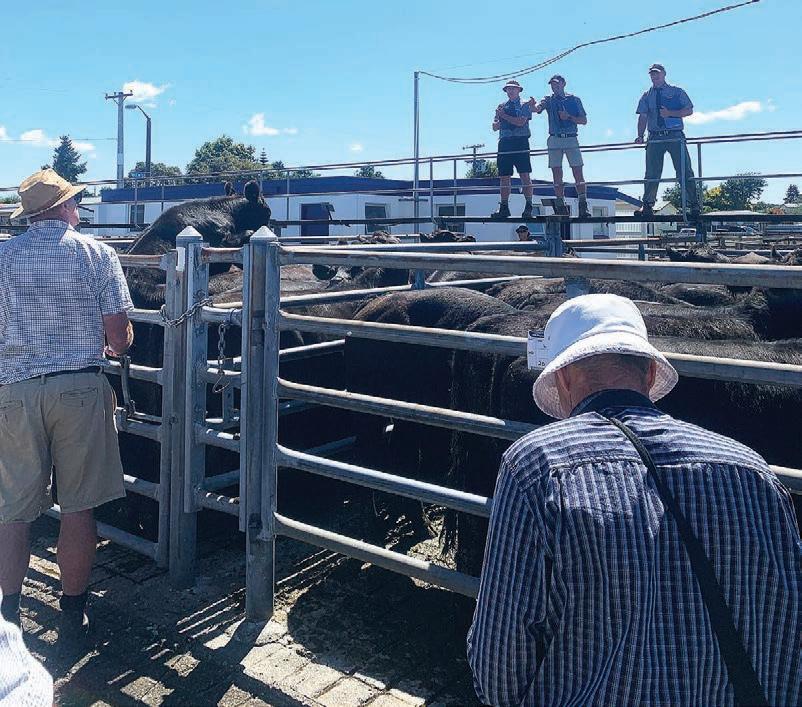
yarded, along with 53 15-month Angus and Angus-Hereford heifers.
An increase in the popularity of on-farm sales, policy changes and good amounts of feed have been supporting the reduction in throughput.
Most of the pens went one of two ways between a small handful of bidders from Manawatū and Hawke’s Bay.
The lack of buyers took away some of the expected competition on good pens that could have possibly pushed prices upward further. However, buyer power was strong enough to meet the asking price and provide satisfactory returns to sellers.
PGG Wrightson agent Bjorn Anderson was happy with the results of the sale and optimistic about the outlook of the store cattle market.
However, in just a week of hot and dry weather, the noticeable decline of grass growth was now front and centre in his mind.
“Not a lot had been happening, which is unusual for this time of year. But now all of a sudden trading has picked up in pace and both cattle and sheep are on the move in much higher volumes.
“I have a lot of clients starting to think about what’s next for them if things continue to dry up at this rate.”
With no scales present at the Dannevirke saleyards, buyers did their best to bid per-head prices

Now all of a sudden trading has picked up in pace and both cattle and sheep are on the move in much higher volumes.
Bjorn Anderson PGG Wrightson
according to how they interpreted weight.
There was a noticeable and consistently high standard of condition across all pens, without too much deviation from the expected market value in returns.
Most of the cattle on offer were homebred from Pahiatua,
Pongoroa and Weber, and sold very much in line with the most recent sale at Stortford Lodge.
The heavier lines were estimated to be 460-480kg and according to these estimated weights they made approximately $3.21$3.27/kg. This is a few cents per kilogram back on last year’s result, caused mainly by a lack of competition between bidders.
Lighter pens of steers, estimated at 345-420kg, were estimated to return $3.55-$3.62/kg. On a perhead basis, the strength of the market was evident as most cattle made $1305-$1540, which was similar to last year’s results.
The heifers were a bit harder going but were good buying at $1050-$1250.
“


WATCH HOW GO-STOCK HELPED CONNOR & SEPHRAH GO-STOCK is an innovative and flexible cashflow solution helping farmers grow their businesses.
“ GO-STOCK
SCAN HERE Visit pggwrightson.co.nz/go-stock or contact your local PGW livestock rep to find out more about how GO-STOCK could work for your farming business. 30 Markets
is an easy way to free up money for working capital so you can expand your business faster.
Markets
HOMEBRED: Most of the cattle on offer were homebred from Pahiatua, Pongoroa and Weber, and sold very much in line with the most recent sale at Stortford Lodge.
QUALITY: Potential buyers watch intently from below the catwalk as PGG Wrightson Livestock auctioneers praise the well-presented lines of mostly Angus and Angus-Hereford steers.
Markets
Weekly saleyards
The dry is starting to bite, and this is taking some of the cream off the top of the store cattle market. At Rangiuru, 335kg R2 Hereford-Friesian steers realised $3.34/kg whereas a similar pen the week prior had reached $3.55/kg. A lack of water across Marlborough has forced the early weaning of traditional calves and these have filtered through Feilding across the last few sales. This gives some indication of the market in the lead-up to the beef weaner fairs.
On Friday, February 16, the top cut of Angus steers, 236-246kg, collected $1045-$1090 per head and traditional steers, 180-211kg, earned $800-$960.
Wellsford | February 19 | 458
Tuakau | February 15
Rangiuru | February 20 | 271 cattle, 226 sheep
Frankton | February 20 | 704 cattle
31
cattle $/kg or $/hd R3 Angus-Friesian steers, 490-548kg 2.93-2.98 R3 Hereford-dairy heifers, 463-468kg 2.78-2.83 R2 Angus-Friesian steers, 368-417kg 3.20-3.28 R2 Hereford-Friesian steers, 344-383kg 3.17-3.25 R2 Hereford-dairy steers, 305-369kg 3.18-3.22 R2 Angus-Friesian heifers, 353-362kg 2.72-2.95
$/kg or $/hd R3 Hereford-Friesian steers, 460-560kg 3.17-3.24 R3 Angus heifers, 404-500kg 2.95-3.01 R2 Angus steers, 390-480kg 3.30-3.46 R2 Angus heifers, 251-293kg 3.30-3.46 Weaner Hereford-Friesian steers, 130-166kg 655-725 Weaner dairy-beef heifers, 104-132kg 530-590
$/kg or $/hd R2 Hereford-Friesian steers, 325-422kg 3.20-3.34 R2 Hereford-Friesian heifers, 391-432kg 2.87-2.96 Weaner Simmental-cross bulls, 287-343kg 3.30-3.35 Prime beef, dairy-beef steers, 600-720kg 2.82-2.92 Prime Hereford bulls, 710-758kg 3.21-3.23 Boner Friesian cows, 506-593kg 1.84-1.92 Store lambs, most 74-88.50 Prime ewes, all 40-50 Prime lambs, one line 106
$/kg or $/hd R2 Hereford-Friesian steers, 405-408kg 3.28-3.38 R2 Hereford-Friesian heifers, 379-393kg 2.98-3.01 R2 Wagyu-cross heifers, 434kg 2.62-2.67 Aut-born yearling Angus-Friesian steers, one line, 280kg 1180 Aut-born yearling Hereford-Friesian heifers, 209-222kg 690-770 Weaner Hereford-Friesian bulls, 116-143kg 620-660 Weaner Charolais-Friesian heifers, one line, 192kg 690 Weaner Hereford-Friesian heifers, 125-142kg 525-570 Prime Hereford-Friesian cows, one line, 558kg 1.82 Prime Angus, beef-cross steers, 560-610kg 2.91-3.02 Prime Charolais-Friesian heifers, 506-550kg 2.97-3.03
| February 21
cattle $/kg or $/hd R2 Hereford-Friesian steers, 392-462kg 2.99-3.24 R2 beef-cross heifers, one line, 440kg 2.88 Aut-born yearling Angus-cross, Angus-Friesian steers, 197-240kg 690-755 Aut-born yearling beef-cross bulls, one line, 228kg 730 Weaner Hereford-dairy steers, 108-136kg 530-570 Weaner Hereford-Friesian bulls, 120-170kg 650-760 Weaner Hereford-Friesian heifers, 127-135kg 600-635 Prime Angus-cross steers, 572-607kg 2.95-2.97 Prime Angus bulls, one line, 638kg 3.03 Prime Hereford heifers, one line, 575kg 2.97 Boner Friesian-cross cows, 437-559kg 1.53-1.68 Taranaki
February
cattle $/kg or $/hd R3 Hereford-Friesian steers, 509-574kg 3.01-3.03 R2 dairy-beef steers, 435kg average 3.00 R2 Hereford-Friesian steers, 415-422kg 3.13-3.23 R2 dairy-beef heifers, 307-442kg 2.80-2.90 Prime dairy-beef steers, 595-687kg 2.94-3.02 Boner Friesian cows, 430-560kg 1.73-1.95 Stortford Lodge | February 19 | 750 sheep $/kg or $/hd Prime ewes, heavy to very heavy 82-90 Prime ewes, medium to very good 60-79 Prime male lambs, good 104 Prime ram lambs, heavy 121 Prime mixed-sex lambs, heavy 122.50-145.50 Prime mixed-sex lambs, good 100-110 Stortford Lodge | February 21 | 453 cattle, 3559 sheep $/kg or $/hd R3 Angus steers and heifers, 515-556kg 3.11-3.12 R2 Angus & Angus-Hereford steers, one line, 378kg 3.44 R2 Angus bulls, one line, 451kg 3.24 R2 Hereford-Friesian bulls, 432-434kg 3.25-3.28 R2 Angus heifers, 395-406kg 3.10-3.14 R2 Angus heifers, 336-373kg 3.22-3.28 R2 Angus & Angus-Hereford heifers, 375-410kg 3.11-3.20 R2 Angus & Angus-Hereford heifers, 340-358kg 3.24 Weaner Charolais-beef bulls, 203-263kg 840-960 2-tooth Wiltshire ewes, one line, very good 240 Mixed-age Romney ewes, medium to very good 75-87 Store male lambs, medium to good 70-91 Store ewe lambs, good 79-84 Store ewe lambs, small to medium 52-76 FARMERS WEEKLY – farmersweekly.co.nz – February 26, 2024
Frankton
| 428
|
21 | 326
31
Dannevirke | February 15 | 349 cattle
R2
R2 Angus & Angus-Hereford steers
R2
R2
&
Feilding | February 16 | 1487 cattle, 7996 sheep
Aut-born

EVERY AGE COVERED: Friesian bulls of all ages were yarding at Feilding on Friday, February 16. This row of R2 Friesian bulls earned $3.12-$3.14/kg for 521-541kg options and $3.20$3.33/kg for weights of 391-412kg.
Feilding | February 19 | 194 cattle,
Canterbury
|
20 | 487 cattle, 3627
32 FARMERS WEEKLY – farmersweekly.co.nz – February 26, 2024 Markets 32
$/kg or $/hd
Angus
1250-1540
steers
1260-1295
1050-1185
Angus heifers
1250
Angus
Angus-Hereford heifers, one line
$/kg or $/hd R3 Angus steers, 574-613kg 3.21-3.25 R3 dairy-beef heifers, 439-540kg 2.71-2.89 R2 Friesian bulls, 367-412kg 3.20-3.45 R2 Hereford-Friesian heifers, 373-473kg 2.90-3.17
yearling Friesian bulls, 255-306kg 3.78-3.99 Weaner Angus steers, 180-211kg 800-960 Weaner Friesian bulls, 128-164kg 620-690 Weaner traditional heifers, 212-218kg 860-870 2-tooth Romney ewes, one line, good 158 Store male lambs, heavy 86-100.50 Store blackface male lambs, shorn, good 72-98 Store whiteface male lambs, shorn, medium 67-80
2761 sheep $/kg or $/hd Prime Hereford-Friesian steers, 670-760kg 3.00-3.04 Prime beef bulls, 645-890kg 3.35-3.39 Boner Friesian cows, 455-577kg 1.69-1.78 Boner Friesian heifers, 385-403kg 2.25-2.38 Prime ewes, good 75-91 Prime ewes, medium-good 54-81 Prime ram lambs, one line, very heavy 151 Prime mixed-sex lambs, heavy 107-128 Prime mixed-sex lambs, medium-good 73-91 Rongotea | February 20 | 323 cattle $/kg or $/hd Mixed-age Friesian cows, in-calf, 501-686kg 1.80-2.15 R2 Angus steers, 435kg 3.12 R2 Angus-cross steers, 420-471kg 2.88-2.89 R2 Charolais steers, 460-509kg 3.01-3.13 R2 Hereford-Friesian steers, 402-463kg 2.94-3.19 Weaner Friesian bulls, 117-175kg 390-475 Weaner Hereford-Friesian bulls, 112-115kg 455-600 Weaner Hereford-Friesian heifers, 100-131kg 360-570 Boner Friesian cows, 477-529kg 1.68-1.72 Coalgate | February 15 | 264 cattle, 3283 sheep $/kg or $/hd R2 dairy-beef steers, 372-450kg 2.49-2.66 R2 Hereford-Friesian heifers, 344-392kg 2.44-2.58 Prime dairy-beef steers, 575-723kg 2.90-3.05 Prime Hereford, Hereford-Friesian bulls, 575-580kg 2.96 Prime dairy-beef heifers, 483-520kg 2.80-2.84 Store mixed-sex lambs, good 78-96 Store mixed-sex lambs, shorn, medium 76-84 Prime ewes, heavy 101-135 Prime lambs, good 113-131
Park
sheep $/kg or $/hd R2 dairy-beef steers, 350-403kg 2.54-2.69 R2 Hereford heifers, 397-422kg 2.84-2.87
February
Get ahead of the market Take advantage of New Zealand’s most trusted independent agricultural market data reporting and analysis, with a range of insightful agriculture and forestry reports. Subscribe from only $100 per month agrihq.co.nz/our-industry-reports
Temuka
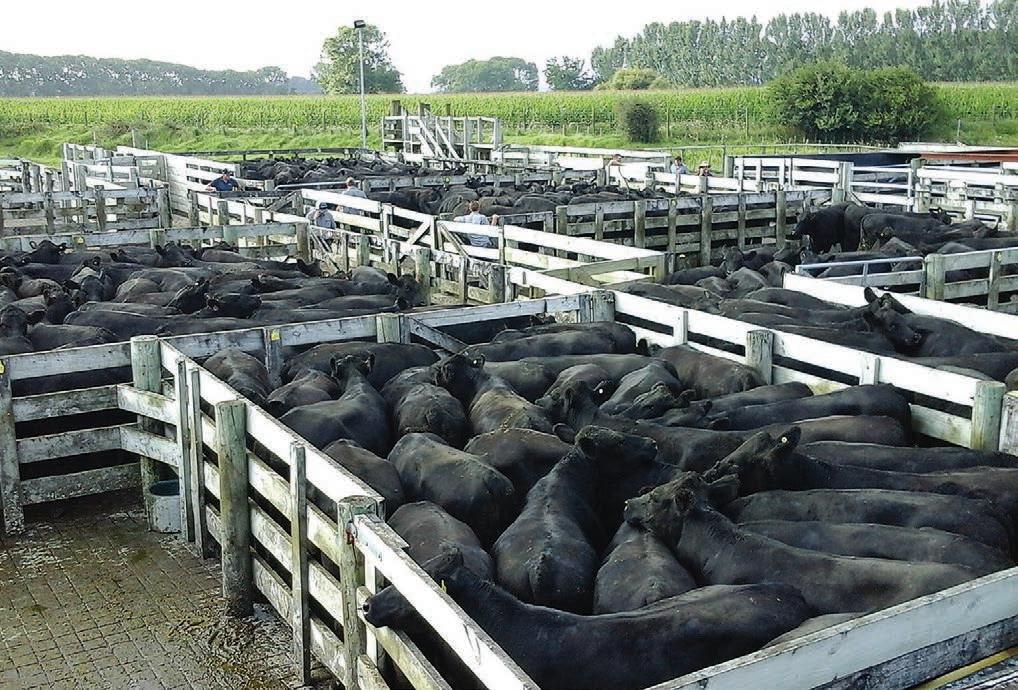
BACK IN BLACK: The big lads of Morunga Station were back at Rangiuru on Thursday, February 8. The R3 traditional steers sold to a small but competitive bench of buyers looking for numbers and Angus, 507-550kg, fetched $3.31-$3.40/kg.
Temuka |
Prime




















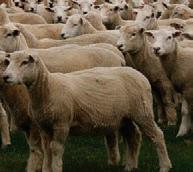



+64 6 323 6393 info@agrihq.co.nz agrihq.co.nz LOG PRICE REPORT MARCH 2022 EXPORT PRUNED A-GRADE P1 S1 PULP NZ$/JASM3 NZ$/JASM3 NZ$/TONNE NZ$/TONNE NZ$/TONNE 181 132 191 132 55.5 WHARFGATE LOG PRICES NZ$/JASm3 Weighted Average*, Delivered to Wharf Grade Export P A K KS KI KIS Pruning Pruned Unpruned Unpruned Unpruned Unpruned Unpruned SED (minimum) cm 40 30 40 22 20 - 26 26 10 Knot size (maximum) cm 0 10 15 15 15 25 No limit Length m 4.0 5.8 4.1 + 4.1 12.1 3.6 - 4.0 4.0 + 3.7 Northern North Island 183 134 126 124 116 115 124 122 115 111 125 123 116 113 116 115 107 102 123 121 113 105 118 117 109 103 124 122 115 111 -26% -26% -27% -29% -19% -19% -20% -21% -22% -23% -24%* Weightings are calculated on the volume of softwood logs traded through each port in the past 12 months, as indicated by available data. This month's report is weighted as follows; Port Weightings - +2 - - +0.5 Port(s) Regions Region Level Island Level National Level Marsden 33% 16% 13% Tauranga 67% 34% 27% Northern Nth Isl. - 51% 40% Gisborne/Napier 66% 33% 26% New Ply/Wellington 34% 17% 13% Southern Nth Isl. - 49% 39% North Island - - 80% Nelson/Picton 67% 43% 9% Lyttelton/Timaru 33% 21% 4% Northern Sth Isl. - 64% 13% P.Chalmers/Otago 61% 22% 5% Bluff 39% 14% 3% Southern Sth Isl. - 36% 7% South Island - - 20% +64 6 323 6393 info@agrihq.co.nz agrihq.co.nz LOG PRICE INDICATOR MARCH 2022 EXPORT PRUNED UNPRUNED PULP NZ$/TONNE NZ$/TONNE NZ$/TONNE NZ$/TONNE 117 184 119 56.0 105 110 115 120 125 Mar-17 Ten year NZ Combined Log Indicator ($/Tonne) 10 year average +1 - - +1 Log Indicator Trends FORESTRY MARKET REPORT ph S1 DOMESTIC LOGS (NZ$/TONNE) 132 A-GRADE EXPORT LOGS US$/JAS [CFR]) 150 SHIPPING – CHINA (US$/JAS) 47.2 CARBON (NZ$/NZU) 80.0 NZD:USD 0.672 FEBRUARY 2022 Omicron slows NZ production Wharfgate log prices firm Shipping starting to rise again Key Points VIEWPOINT -4 +14 -3.4 +4.7 +0.6C ...there's finally been a bit of life injected into log export markets. Reece Brick After a three-month price lull there's finally been a bit of life injected into log export markets. This largely comes from China getting back into the game after coming back from break, supported by mildly weaker shipping costs and the exchange rate. Reduced supplies out of NZ in recent months has been key for reengaging Chinese buying, particularly when other parts of the world aren't offering any more volumes than normal, usually noticeably less. Short-term we are unlikely to see much more upside than has already been reported. Shipping costs are starting to increase as of late-February due to a mixture of demand changes and increasing bunker costs partly brought on by the Russia-Ukraine situation. China wakes up Sara Hilhorst 12 mths ago 185 128 56 119 165 122 56 112 180 127 56 117 C d ti d h b t h b Mid-winter market s mellow VIEWPOINT 33 FARMERS WEEKLY – farmersweekly.co.nz – February 26, 2024
33 Prime Hereford-Friesian cows, 420-578kg 1.64-1.88 Prime beef steers, 580-730kg 2.95-3.07 Prime Hereford bulls, 800-890kg 2.12-2.28 Prime dairy-beef heifers, 475-660kg 2.71-2.84 Store lambs, shorn, good 80-94 Store whiteface mixed-sex lambs, woolly, good 76-90 Store whiteface lambs, shorn, medium 67-87 Prime ewes, good to very good 74-110 Prime lambs, good to very good 100-134
Markets
| February 15
817 cattle $/kg or $/hd R3 dairy-beef heifers, 462-490kg 2.72-2.78
beef steers, 398-493kg 2.98-3.11 R2 traditional heifers, 377-469kg 2.69-2.81 R2 dairy-beef bulls, 321-392kg 2.68-2.93 R2 Friesian heifers, 347-404kg 2.01-2.12 Weaner Friesian bulls, 134-180kg 565-600 Weaner Hereford-Friesian heifers, 132-152kg 490-540
|
R2
February
$/kg or $/hd Prime Hereford-Friesian steers, 485-733kg 2.73-2.80 Prime Angus bulls, 579-705kg 2.70-2.82 Prime Hereford-Friesian heifers, 410-630kg 2.60-2.75 Boner Friesian cows, 447-740kg 1.66-180 Store wether lambs, good 100-105 Store ewe lambs, good 81-100 Store mixed-sex lambs, good 70-96 Prime ewes, most 55-75
19 | 954 cattle, 7214 sheep
mixed-sex lambs, most 110-130 Balclutha | February 14 | 753 cattle $/kg or $/hd R3 Angus steers, 450-523kg 2.80-2.91 R3 Belgian Blue-dairy steers, 423-465kg 2.71-2.97 R3 Angus heifers, 380-474kg 2.74-2.78 R3 Belgian Blue-dairy heifers, 401-460kg 2.39-2.42 R2 Belgian Blue-dairy steers, 275-307kg 2.68-2.74 R2 Hereford-Friesian steers, 305-359kg 2.65-2.84 R2 Hereford-Friesian bulls, 326-442kg 2.48-2.76 R2 Friesian bulls, 262-325kg 2.37-2.73 R2 exotic heifers, 267-309kg 2.25-2.46 Charlton | February 15 | 207 sheep $/kg or $/hd Store lambs, all 54-93 Prime ewes, all 52-81 Prime lambs, all 105-130 Lorneville | February 20 $/kg
R2 steers, 330-419kg 880-1140 R2 bulls, 420-436kg 1090-1140 Prime steers, 480kg 2.60-2.65 Prime dairy heifers, 350-400kg 1.80-1.95 Store lambs 55-100 Prime ewes 30-79 Prime lambs 102-137
or $/hd
+64 6 323 6393 info@agrihq.co.nz agrihq.co.nz LOG PRICE REPORT MARCH 2022 EXPORT PRUNED A-GRADE P1 S1 PULP NZ$/JASM3 NZ$/JASM3 NZ$/TONNE NZ$/TONNE NZ$/TONNE 181 132 191 132 55.5 WHARFGATE LOG PRICES NZ$/JASm3 Weighted Average*, Delivered to Wharf Grade Export P A K KS KI KIS Pruning Pruned Unpruned Unpruned Unpruned Unpruned Unpruned SED (minimum) cm 40 30 40 22 20 26 26 10 Knot size (maximum) cm 0 10 15 15 15 25 No limit Length m 4.0 - 5.8 4.1 + 4.1 12.1 3.6 4.0 4.0 + 3.7 Northern North Island 183 134 126 124 116 115 124 122 115 111 125 123 116 113 116 115 107 102 123 121 113 105 118 117 109 103 124 122 115 111 -26% -26% -27% -29% -19% -19% -20% -21% -22% -23% -24%* Weightings are calculated on the volume of softwood logs traded through each port in the past 12 months, as indicated by available data. This month's report is weighted as follows; Port Weightings - +2 - - +0.5 Port(s) Regions Region Level Island Level National Level Marsden 33% 16% 13% Tauranga 67% 34% 27% Northern Nth Isl. - 51% 40% Gisborne/Napier 66% 33% 26% New Ply/Wellington 34% 17% 13% Southern Nth Isl. - 49% 39% North Island - - 80% Nelson/Picton 67% 43% 9% Lyttelton/Timaru 33% 21% 4% Northern Sth Isl. - 64% 13% P.Chalmers/Otago 61% 22% 5% Bluff 39% 14% 3% Southern Sth Isl. - 36% 7% South Island - - 20% +64 6 323 6393 info@agrihq.co.nz agrihq.co.nz LOG PRICE INDICATOR MARCH 2022 EXPORT PRUNED UNPRUNED PULP NZ$/TONNE NZ$/TONNE NZ$/TONNE NZ$/TONNE 117 184 119 56.0 105 110 115 120 125 Mar-17 Ten year NZ Combined Log Indicator ($/Tonne) 10 year average +1 - - +1 Log Indicator Trends FORESTRY MARKET REPORT ph S1 DOMESTIC LOGS (NZ$/TONNE) 132 A-GRADE EXPORT LOGS US$/JAS [CFR]) 150 SHIPPING – CHINA (US$/JAS) 47.2 CARBON (NZ$/NZU) 80.0 NZD:USD 0.672 FEBRUARY 2022 Omicron slows NZ production Wharfgate log prices firm Shipping starting to rise again Key Points VIEWPOINT -4 +14 -3.4 +4.7 +0.6C ...there's finally been a bit of life injected into log export markets. Reece Brick After a three-month price lull there's finally been a bit of life injected into log export markets. This largely comes from China getting back into the game after coming back from break, supported by mildly weaker shipping costs and the exchange rate. Reduced supplies out of NZ in recent months has been key for reengaging Chinese buying, particularly when other parts of the world aren't offering any more volumes than normal, usually noticeably less. Short-term we are unlikely to see much more upside than has already been reported. Shipping costs are starting to increase as of late-February due to a mixture of demand changes and increasing bunker costs partly brought on by the Russia-Ukraine situation. China wakes up Sara Hilhorst 12 mths ago 185 128 56 119 165 122 56 112 180 127 56 117 MONTHLY SHEEP & BEEF KE Y PO NTS JULY 2022 US IMPORTED 95CL NZ SLAUGHTER STEER CH NA FOREQUARTER NZ SLAUGHTER LAMB NZD:USD 2.67 6.17 6.30 9.18 0.621 C d ti d h k b h b Mid-winter market s mellow VIEWPOINT S po p B k g d lop la b FMD h da A /NZ
AgriHQ market trends
Cattle Sheep Deer
Steer slaughter price ($/kgCW)
Lamb slaughter price ($/kgCW)
Fertiliser
NZ cattle slaughter (thous. head)
NZ lamb & mutton slaughter (thous. head)
Forestry
Stag Slaughter price ($/kgCW)
Data provided by
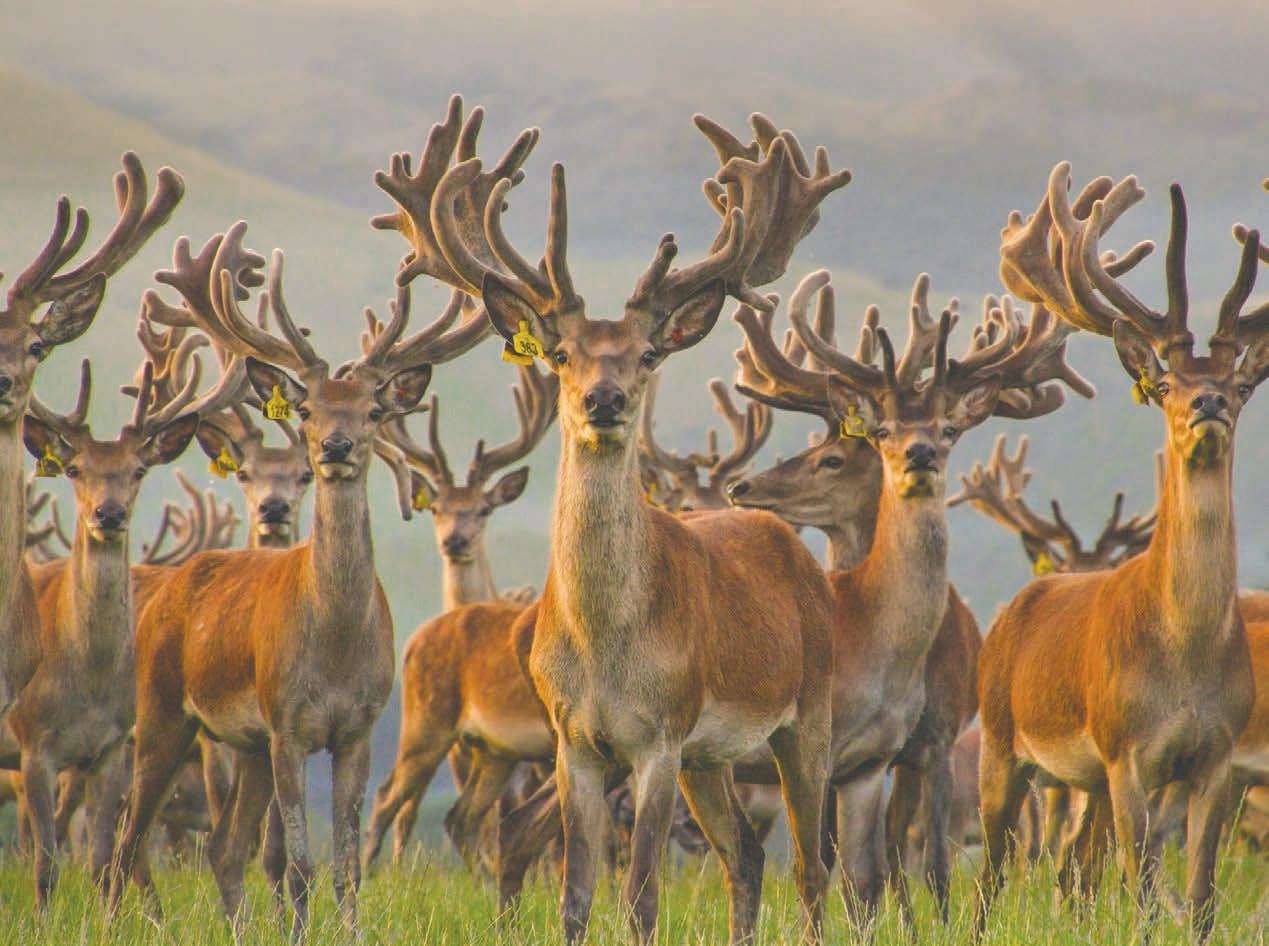


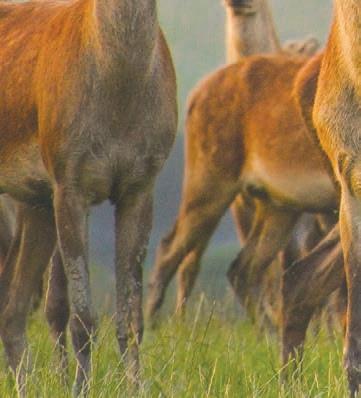
34 FARMERS WEEKLY – farmersweekly.co.nz – February 26, 2024 Markets 34
Sheep Meat Slaughter price (NZ$/kgCW) Last week Last year North Island lamb (18kg) 6.10 7.05 North Island mutton (25kg) 2.60 3.90 South Island lamb (18kg) 6.05 6.65 South Island mutton (25kg) 2.30 3.45 Export markets (NZ$/kg) China lamb aps 8.46 11.06 Wool (NZ$/kg clean) 16-Feb Last year Crossbred eece 3.29 2.65 Crossbred lamb 3.49 3.00 Courtesy of www.fusca.co.nz Beef Slaughter price (NZ$/kgCW) Last week Last year North Island P2 steer (300kg) 5.85 5.85 North Island M2 bull (300kg) 5.85 5.70 North Island M cow (190kg) 4.05 4.15 South Island P2 steer (300kg) 5.35 5.20 South Island M2 bull (300kg) 5.40 5.10 South Island M cow (190kg) 3.85 3.85 Export markets (NZ$/kg) US imported 95CL bull 9.50 9.33 US domestic 90CL cow 11.10 9.19 Venison Slaughter price (NZ$/kgCW) Last week Last year North Island AP stag (60kg) 8.65 8.90 South Island AP stag (60kg) 8.70 8.85 Fertiliser NZ average (NZ$/tonne) Last week Last year DAP 1264 1794 Super 474 442 Urea 897 1240 Urea (Coated) 946 1189 Exports NZ Log Exports (tonnes) Dec Last year China 1,545,682 1,459,745 Rest of world 148,528 135,003 Carbon price (NZ$/tonne) Last week Last year NZU 69.3 67.0
NOTE: Slaughter values are weighted average gross operating prices including premiums but excluding breed premiums for cattle. 5.0 5.5 6.0 6.5 Feb Apr Jun Aug Oct Dec North Island South Island 5.5 6.0 6.5 7.0 7.5 8.0 Feb Apr Jun Aug Oct Dec North Island South Island 8.0 8.5 9.0 9.5 10.0 Feb Apr Jun Aug Oct Dec North Island South Island 0 20 40 60 80 11-Nov 11-Dec 11-Jan 11-Feb 11-Mar 11-Apr 5-yr ave This year Last year 0 200 400 600 800 11-Nov 11-Dec 11-Jan 11-Feb 11-Mar 11-Apr 5-yr Ave This year Last year
Listed

Upskill with an online course For shearers by shearers agricademy.co.nz/womolife 35 FARMERS WEEKLY – farmersweekly.co.nz – February 26, 2024 Markets 35 NZX market trends Company Close YTD HighYTD Low ArborGen Holdings Limited 0.160.1730.155 The a2 Milk Company Limited 6.026.324.25 Cannasouth Limited 0.120.1520.099 Comvita Limited 1.792.621.71 Delegat Group Limited 5.96.95.68 Fonterra Shareholders' Fund (NS) 3.443.53.34 Foley Wines Limited 1.111.21.05 Greenfern Industries Limited 0.0390.0580.039 Livestock Improvement Corporation Ltd (NS) 0.981.110.98 Marlborough Wine Estates Group Limited 0.160.180.155 NZ King Salmon Investments Limited 0.290.3050.225 PGG Wrightson Limited 3.123.443.01 Rua Bioscience Limited 0.090.1210.09 Sanford Limited (NS) 3.864.143.76 Scales Corporation Limited 3.143.493.06 Seeka Limited 2.652.752.42 Synlait Milk Limited (NS) 0.69 1 0.68 T&G Global Limited 1.76 2 1.76 S&P/NZX Primary Sector Equity Index 10263103709961 S&P/NZX 50 Index 115901195211571 S&P/NZX 10 Index 117131225411672
Close of market
Dairy Futures (US$/t) Nearest contract Last price* Prior week4 weeks prior WMP 338034153340 SMP 281028002660 AMF 613560005800 Butter 640064005900 Milk Price 7.957.947.84 * price as at close of business on Wednesday Data provided by Canterbury feed wheat ($/tonne) 5pm, Wednesday Milk price futures ($/kgMS) Canterbury feed barley ($/tonne)
palm kernel ($/tonne) WMP futures - vs four weeks ago (US$/tonne) S&P/NZX 10 INDEX 11713 S&P/NZX PRIMARY SECTOR EQUITY 10263 S&P/NZX 50 INDEX 11590 6.5 7.5 8.5 9.5 Feb AprJunAug Oct DecFeb Sep-2024 Sep-2025 400 450 500 550 600 650 Jan MarMay Jul Sep Nov Jan 400 450 500 550 600 650 Jan MarMay Jul Sep Nov Jan 3250 3300 3350 3400 3450 3500 Feb Mar Apr May Jun Latest price 4 weeks ago 300 350 400 450 Jan MarMay Jul Sep Nov Jan
Agri shares Grain Dairy
Waikato
High and dry for many as we go into March
 Philip Duncan NEWS Weather
Philip Duncan NEWS Weather
IT IS is incredibly dry around parts of New Zealand as we end February and cross into March. Often there is no sudden change to our pattern at this time of year though the mornings are cooler, the dews heavier and the afternoons often still mild to hot.
Conditions are now very dry and some regions are especially so: Marlborough, Wellington, Wairarapa, Hawke’s Bay (south of the Napier-Taupō Highway), Horowhenua and Manawatū, many parts of Northland, Auckland, Coromandel Peninsula and Bay of Plenty (although BoP may have some pockets of relief just in the days before we print this).
Then we have Nelson, parts of Canterbury and into Central Otago. Twelve months ago only Nelson, Blenheim and Christchurch/Rangiora were in this very dry state and of course the North Island was saturated from Cyclone Gabrielle, the Auckland floods and other rain events.
NZ’s very dry end to summer is thanks to El Niño, which took a while to get going but has been in place all summer.
People in the South Island and lower North Island have been increasingly telling us the windy weather has really been a theme.
This windy weather is a classic sign of El Niño with high pressure parked a lot over southern Australia and to NZ’s north – and this encourages plenty of westerly winds.
The big dry hot summer we and others warned about last year is now here.
Also, high pressure is crossing NZ with dry weather. When highs arrive they usually bring in a cooler southerly flow (we saw frosts around Central Otago on Wednesday last week). When the highs move out to NZ’s east we then get a time with hotter nor’westers and sub-tropical airflows.
Temperature-wise, Southland
and Coastal Otago have been cooler this summer – along with Victoria and Tasmania in Aussie also receiving these injections of Southern Ocean airflows from time to time with passing cold fronts.
The angle of these fronts means the Southern Alps and the ranges of the upper South Island and lower/eastern North Island limit how much rain can go east and north.
With so much high pressure to the north of the country, that is keeping calmer, drier and often settled weather for the top half of the North Island.
The big dry hot summer we and others warned about last year is now here – and because El Niño and autumn share similar weather (that is, windier westerlies) it tends to make autumn more autumn-like.
A hat on a hat, as we said back in spring.
Our March ClimateWatch outlook is issued this Friday at RuralWeather.co.nz and we’ll have more details about how that month is shaping up in the first Farmers Weekly of March next week.


SEVERE: Comparing this time a year ago (late February ’23) with current conditions (late February ’24) shows soil moisture deficits across the country are much more severe this year.
Highlights this week
• Monday is fairly dry but a few showers in the north of NZ, and a weak front approaches the south
• Tuesday and Wednesday sees that cold front move up the east of NZ towards Hawke’s Bay – totals aren’t huge
• Wednesday and Thursday sees high pressure then move back in briefly
• Showers and patchy rain possible from the west for the weekend














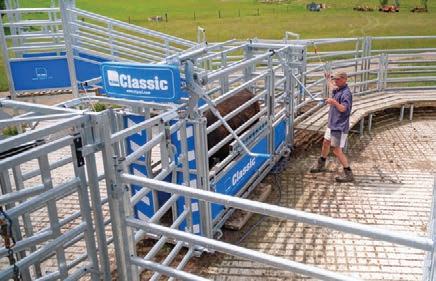












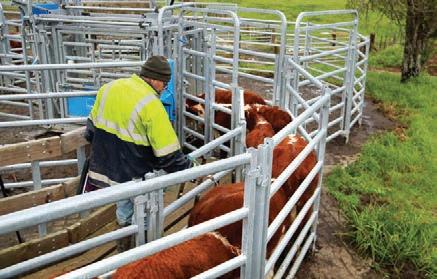






0% INTEREST To find out more call us or go online! 0800 837 274 | tepari.com 1/3 IN 24 MONTHS Farm efficiency starts here… Maximize your farm’s productivity without breaking the bank! Take advantage of our special 0% finance offer — pay just 1/3 now and the same in 12 and 24 months. Invest wisely in efficiency, save labour and weather the tough times with confidence. Min purchase $40,000+GST. Offer Valid till 18th of March 2024. T&Cs apply. 1/3 IN 12 MONTHS 1/3 DEPOSIT WHY IS TE PARI THE BEST? Scan the QR Code to watch our customer testimonials! From design to engineering and installation our team will work with you to ensure the best possible outcomes! Made in NZ for over 30 years Experienced Design Team Top quality steel that’s fully hotdip galvanised AFTER welding Experienced Install & Tech Suport Teams Here’s what our customers say... Watch our Customer Testimonials at www.tepari.com “They just flow so well! The thing I like the most is they did the whole job. They didn’t just supply the yards they actually put the concrete down and built it up too.” Steven Joyce, Otago “They’re strong and reliable. They’re safe and easy to manage stock through. What else could you possibly want in a set of cattle yards?” Ian Webb, Northland “They’ve got the yards, the crush, EID reader and the scale… It’s one business; you’ve only got to make one phone call. That’s the beauty of Te Pari.” Elliot Morgan, Otago 36 Weather ruralweather.co.nz
 TAnnette Scott NEWS Livestock
TAnnette Scott NEWS Livestock



























 TNeal Wallace PEOPLE Employment
TNeal Wallace PEOPLE Employment


































 Hugh Stringleman MARKETS Dairy
Hugh Stringleman MARKETS Dairy











 Gerald Piddock TECHNOLOGY Genetics
Gerald Piddock TECHNOLOGY Genetics


 Richard Rennie NEWS Apiculture
Richard Rennie NEWS Apiculture




































 TNigel Stirling MARKETS Dairy
TNigel Stirling MARKETS Dairy
































































 Alan
Alan











































































































































































































































 Philip Duncan NEWS Weather
Philip Duncan NEWS Weather





























